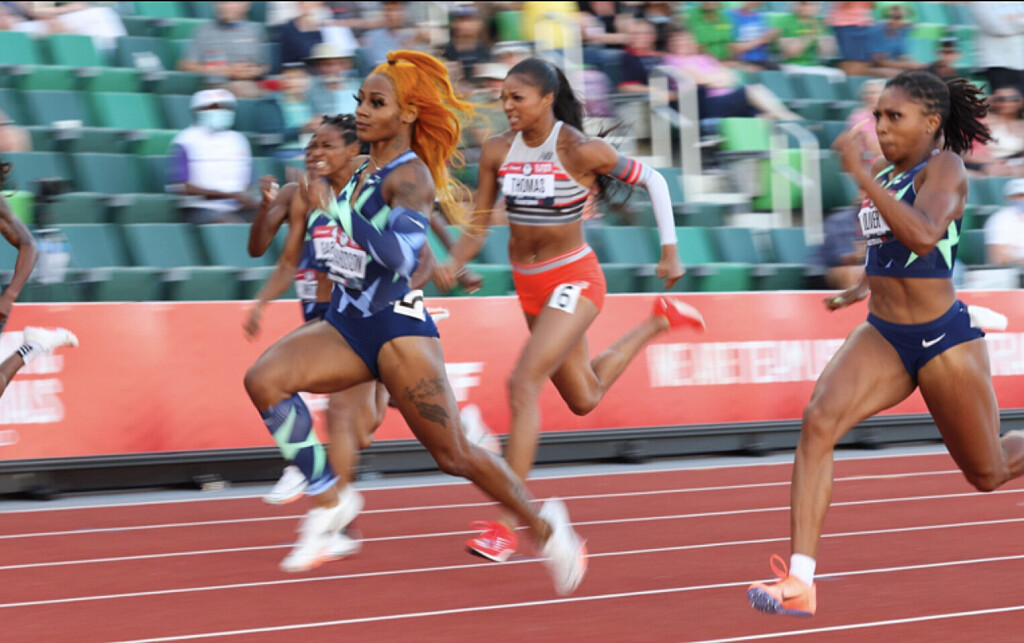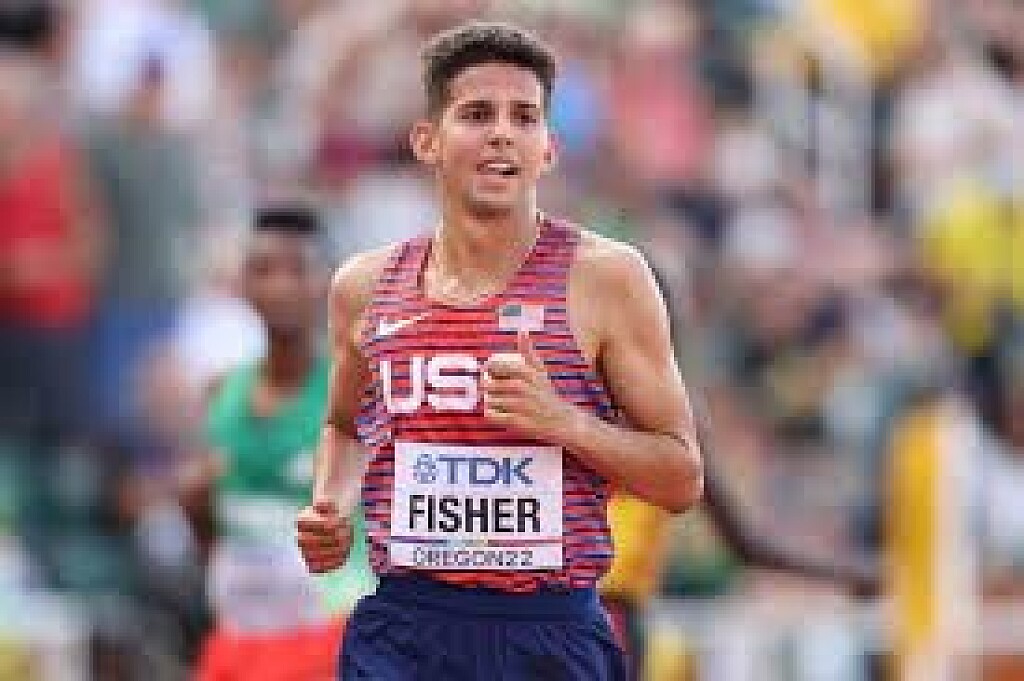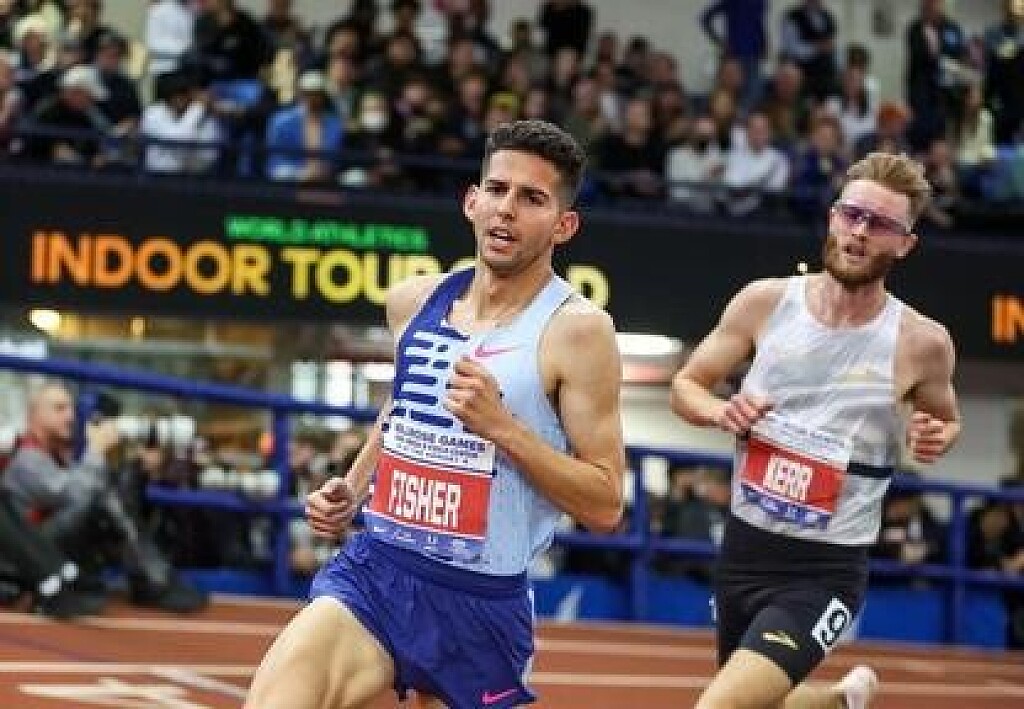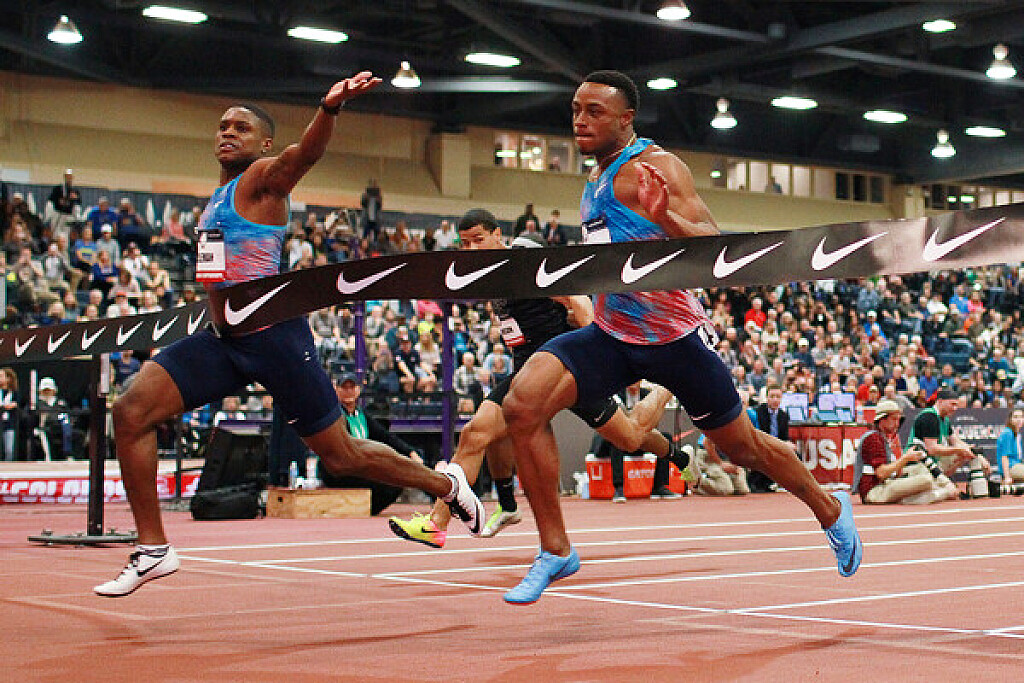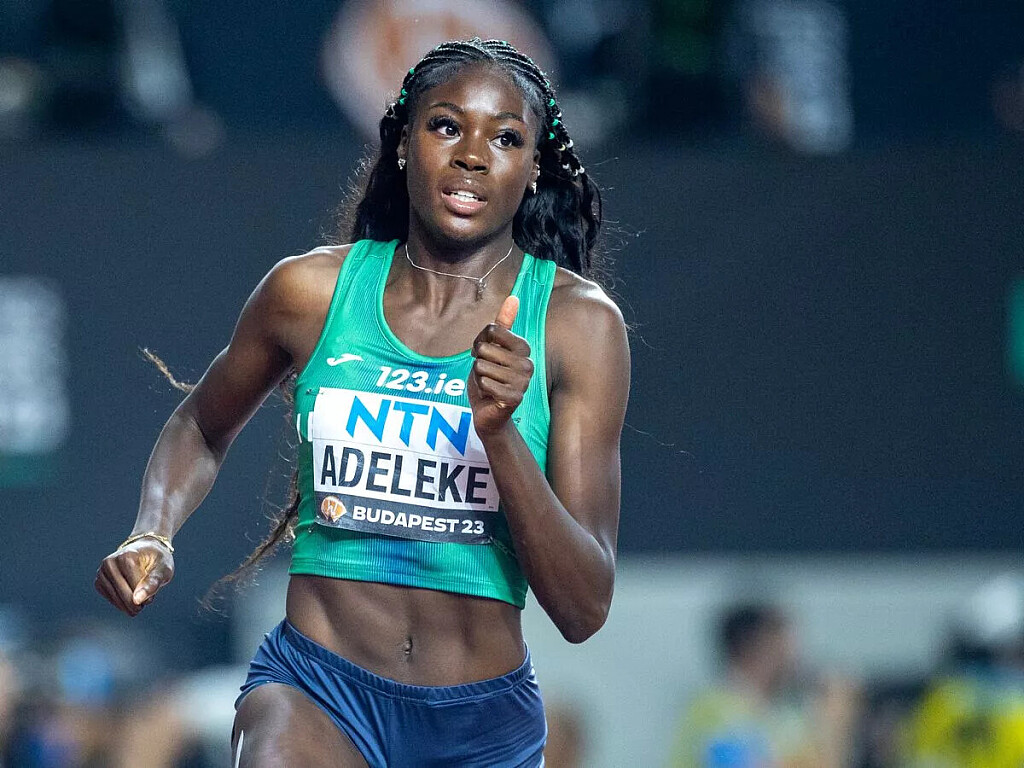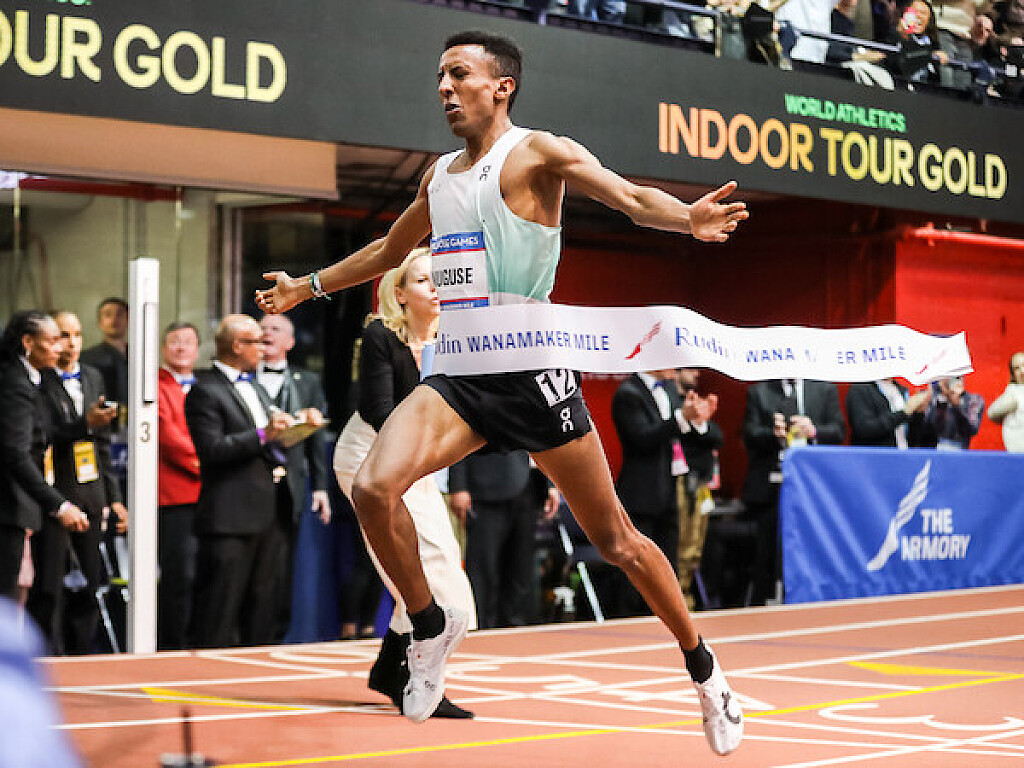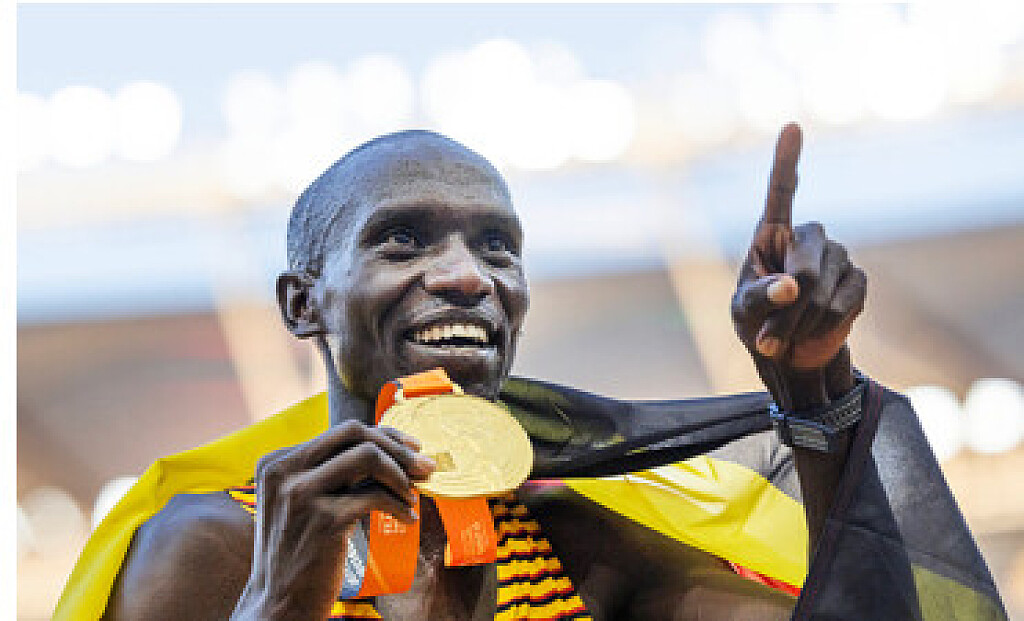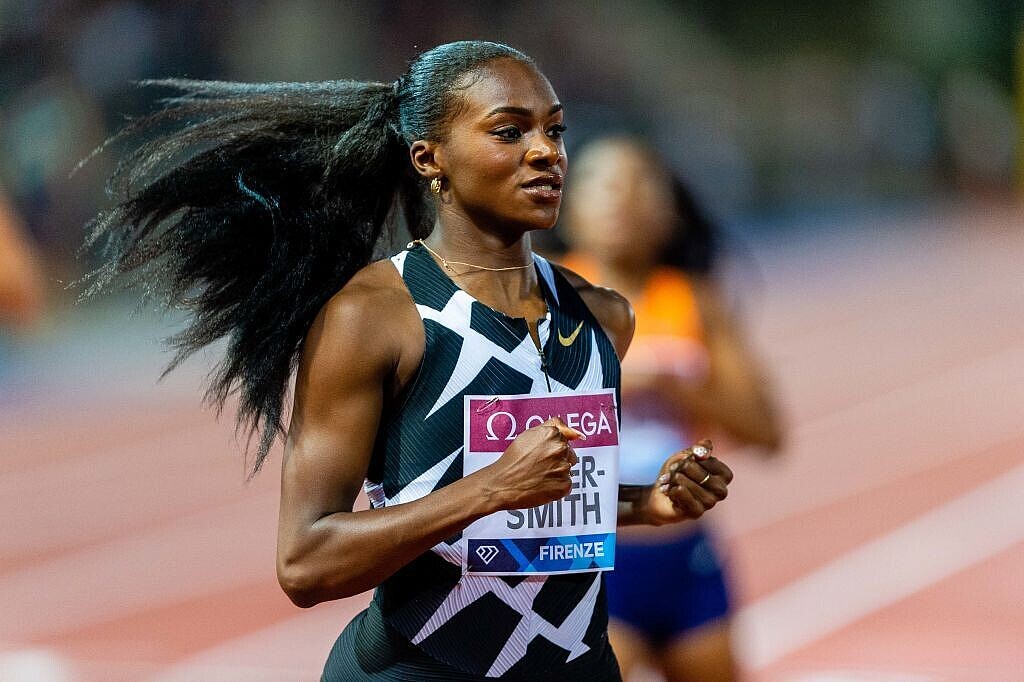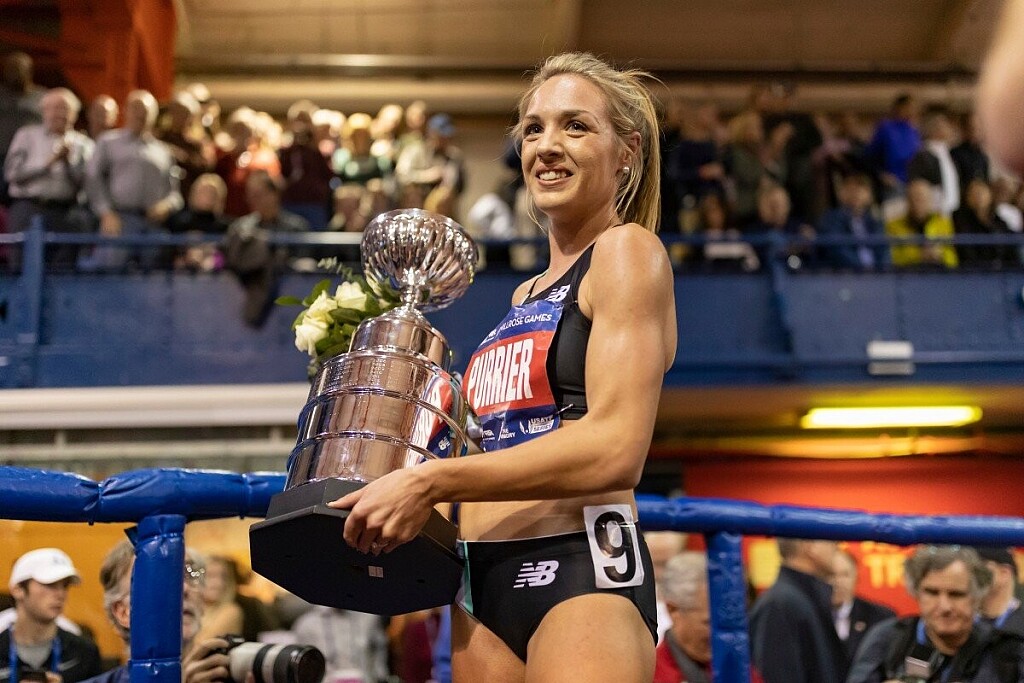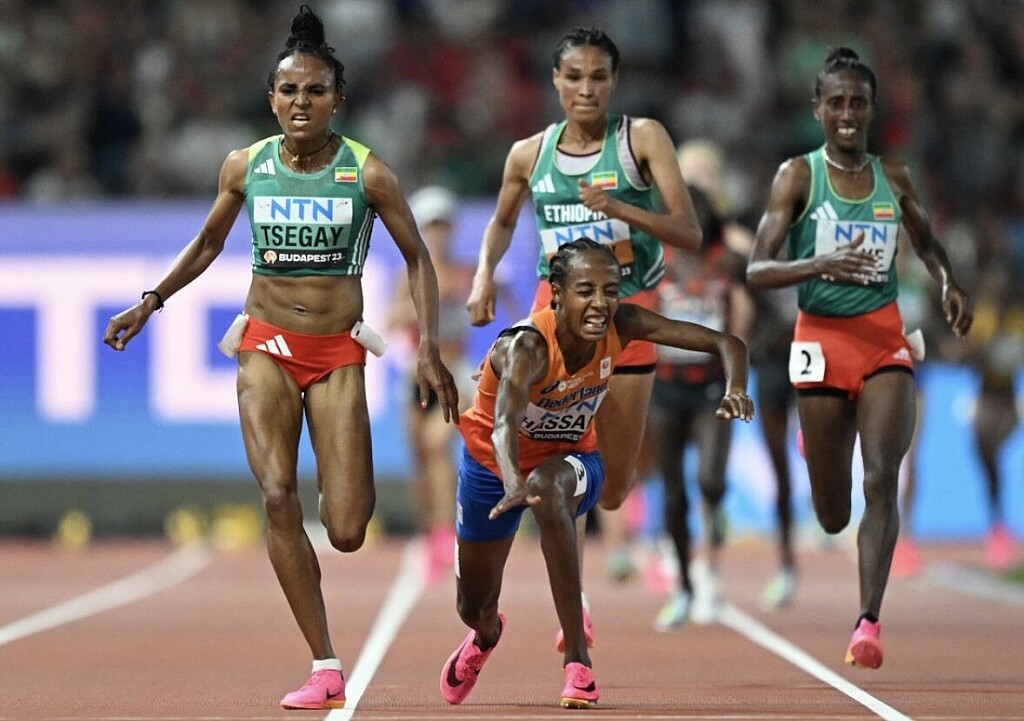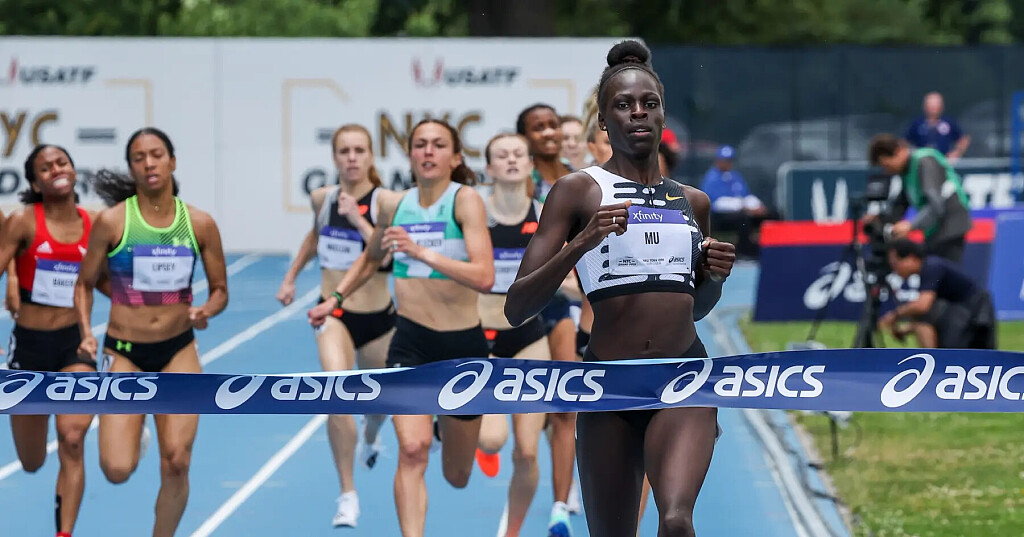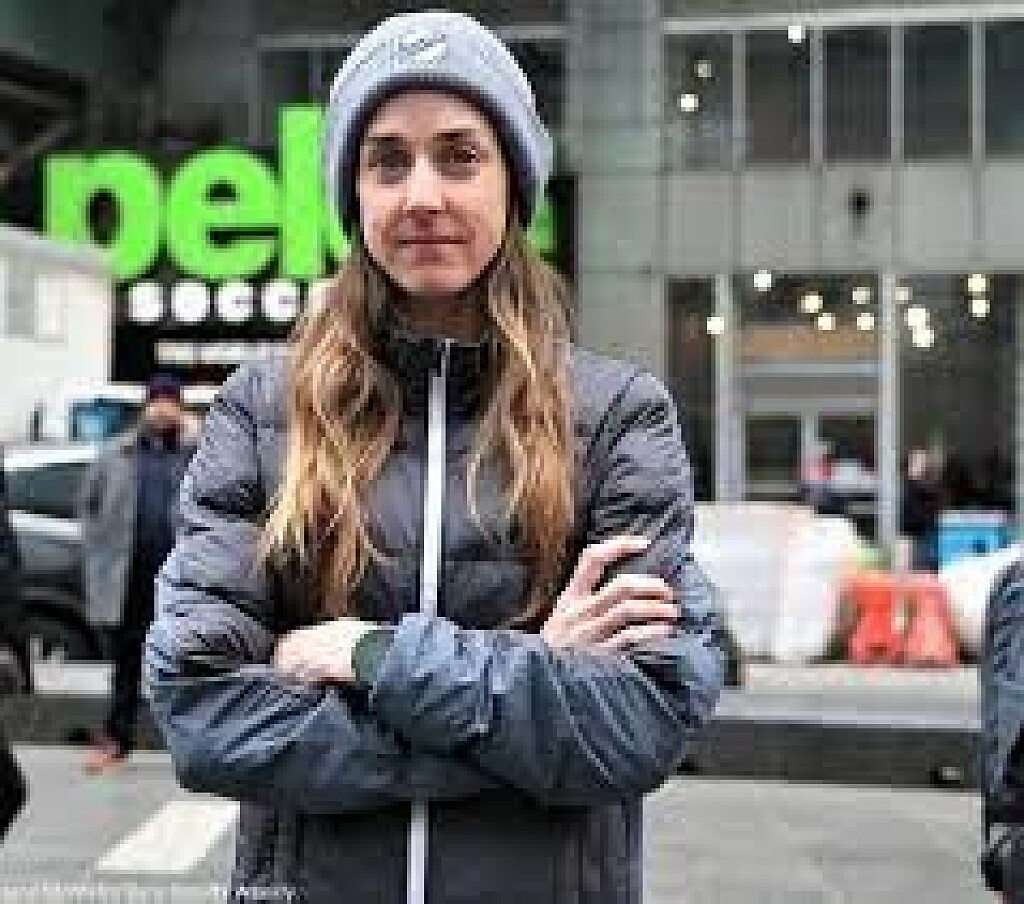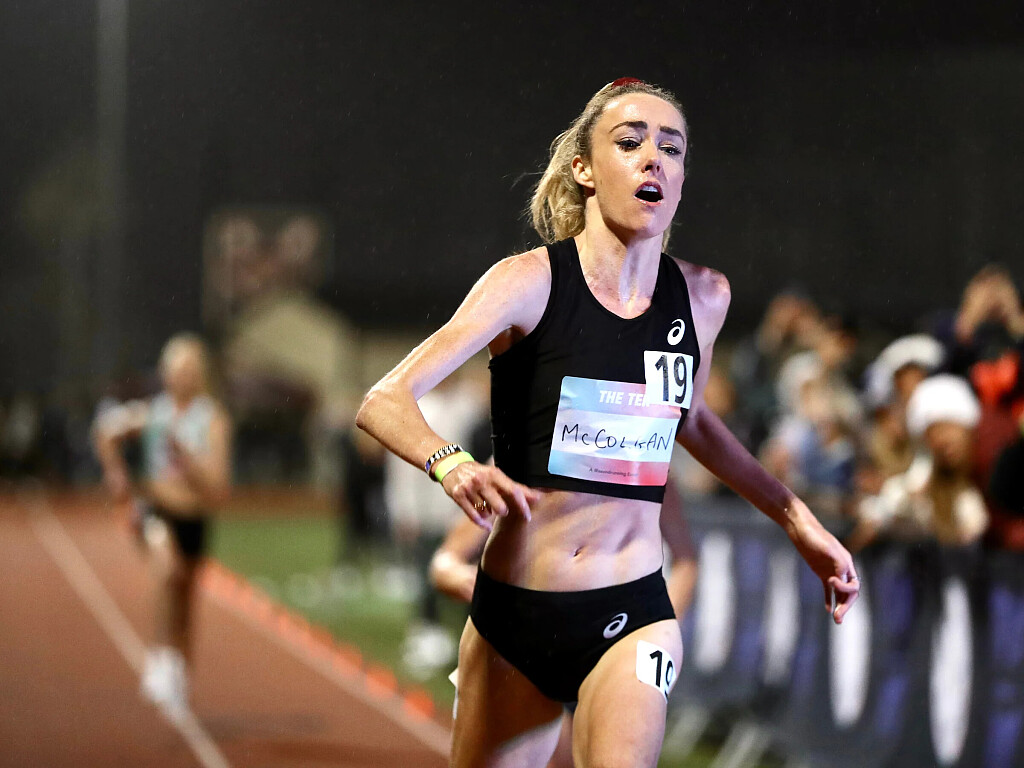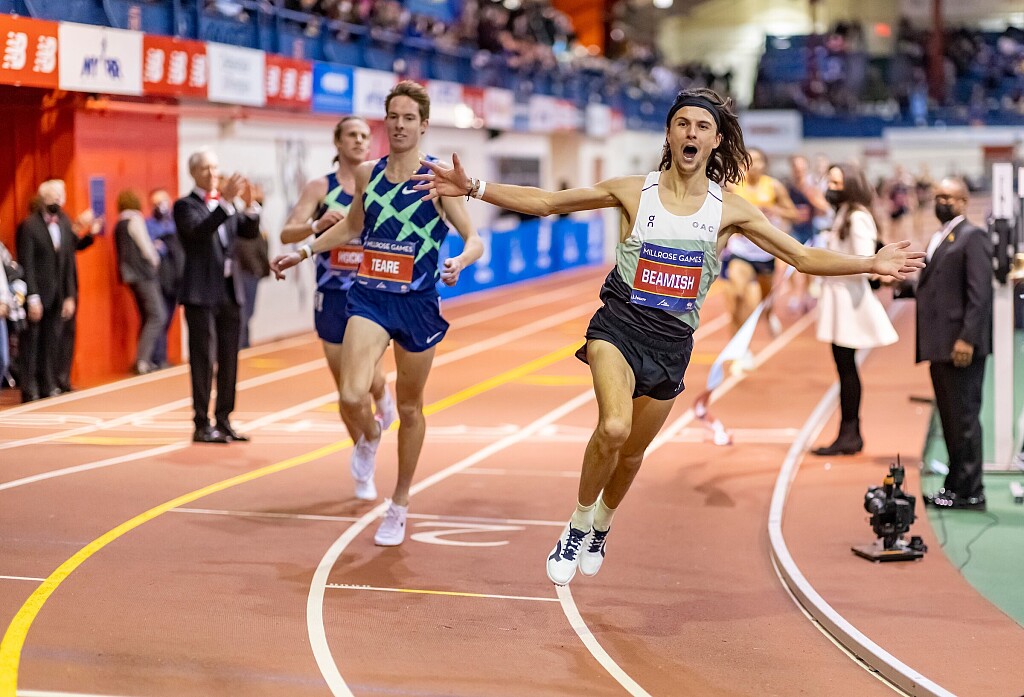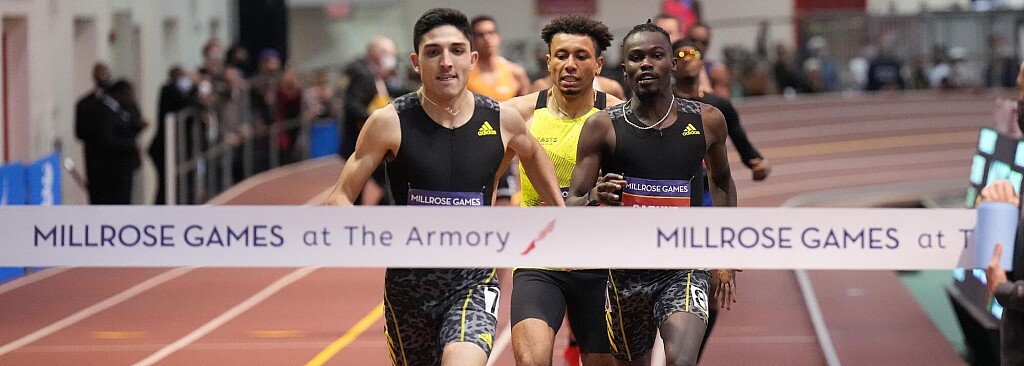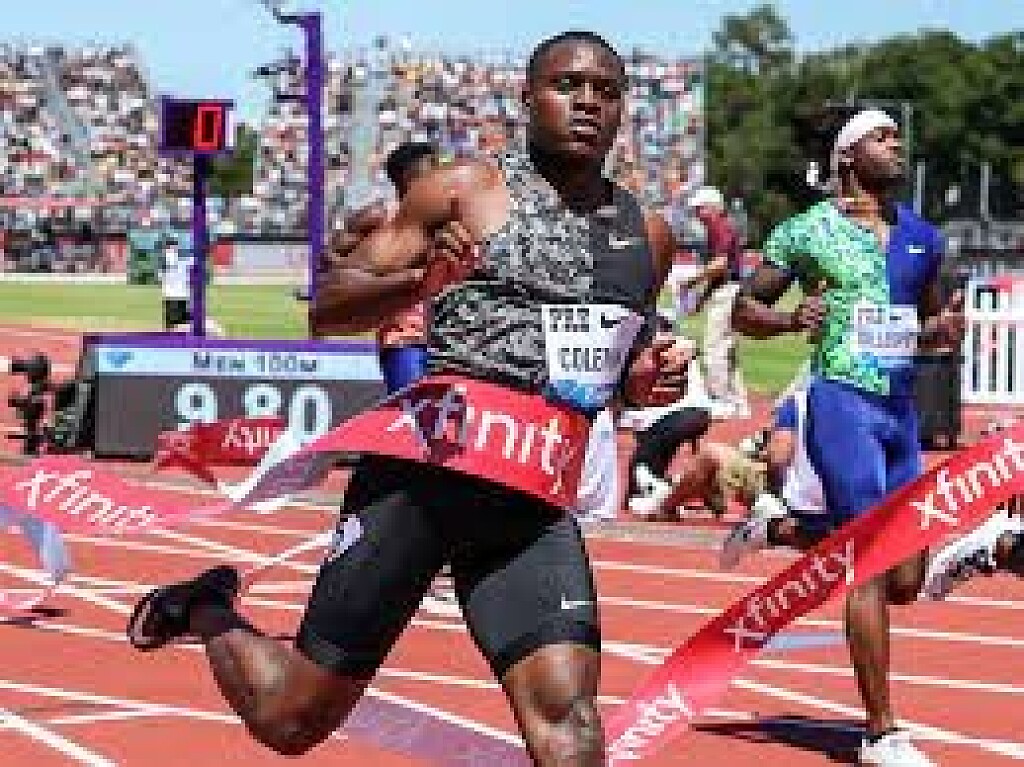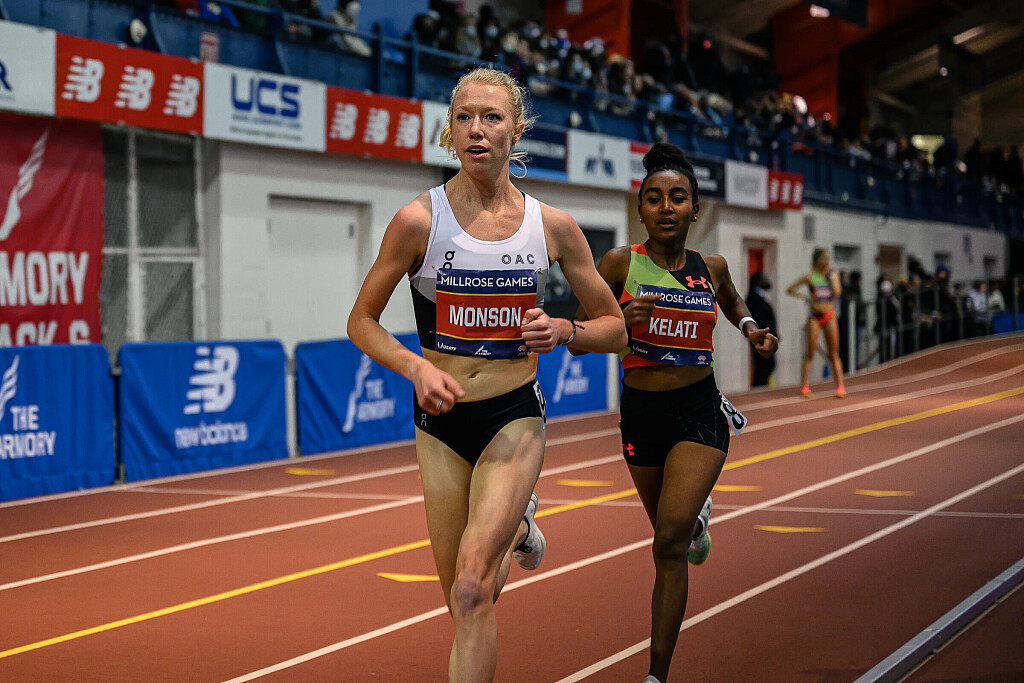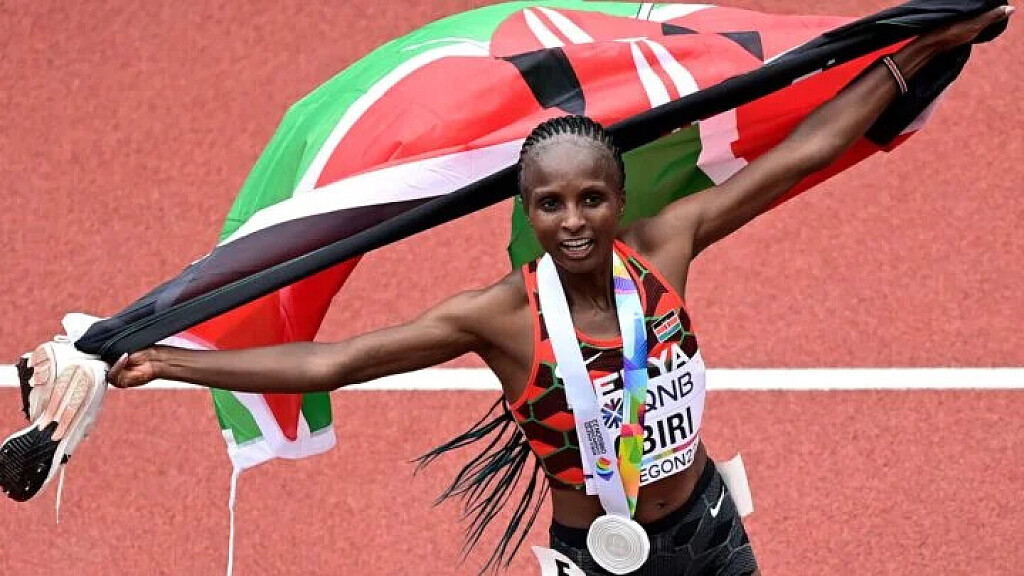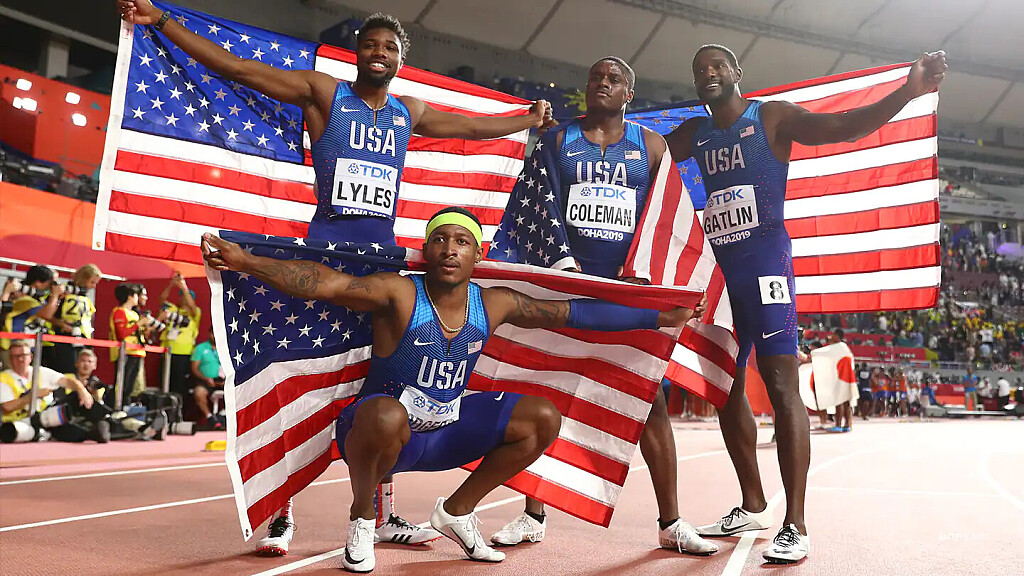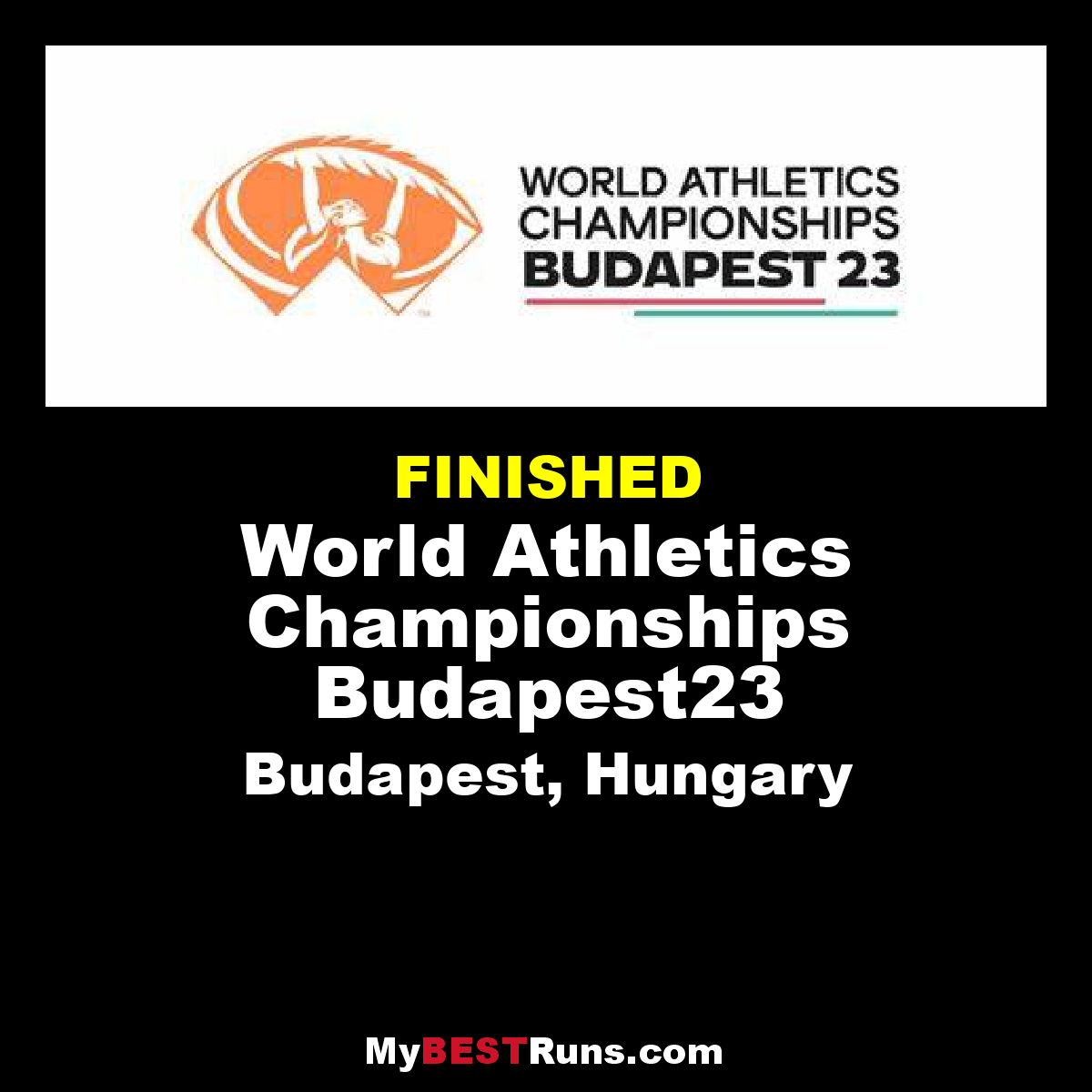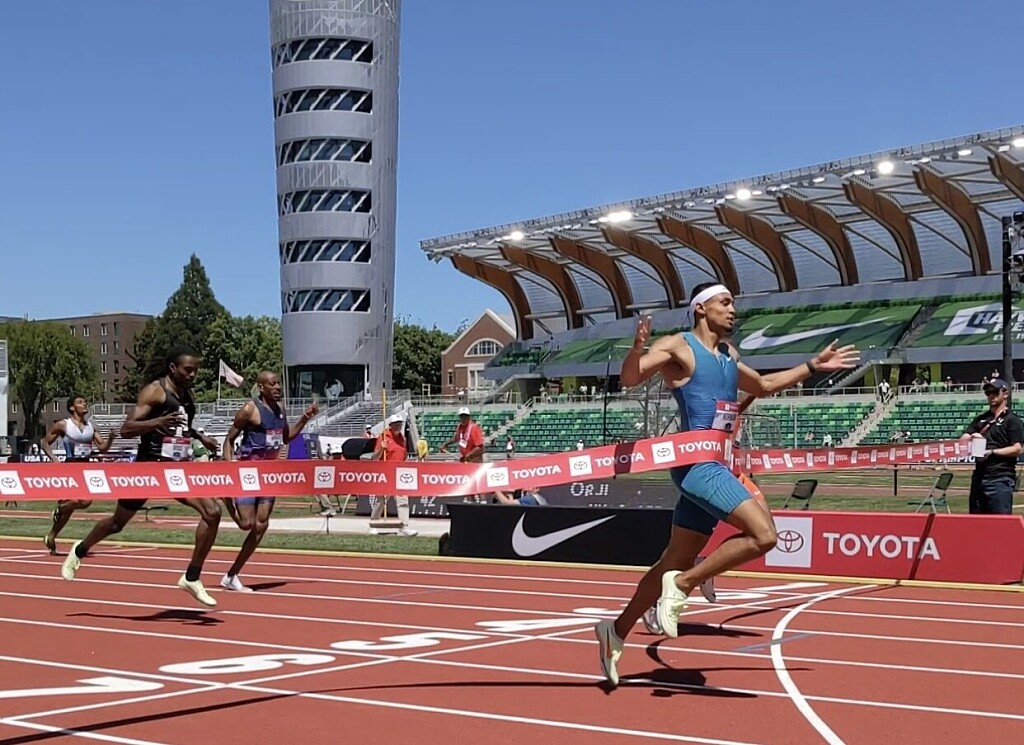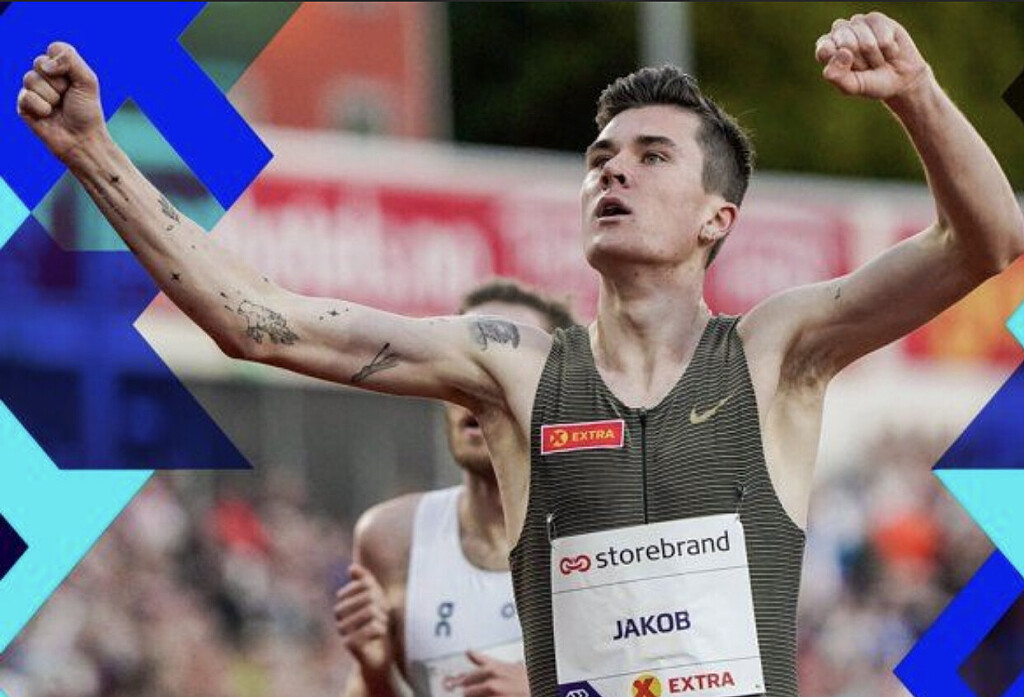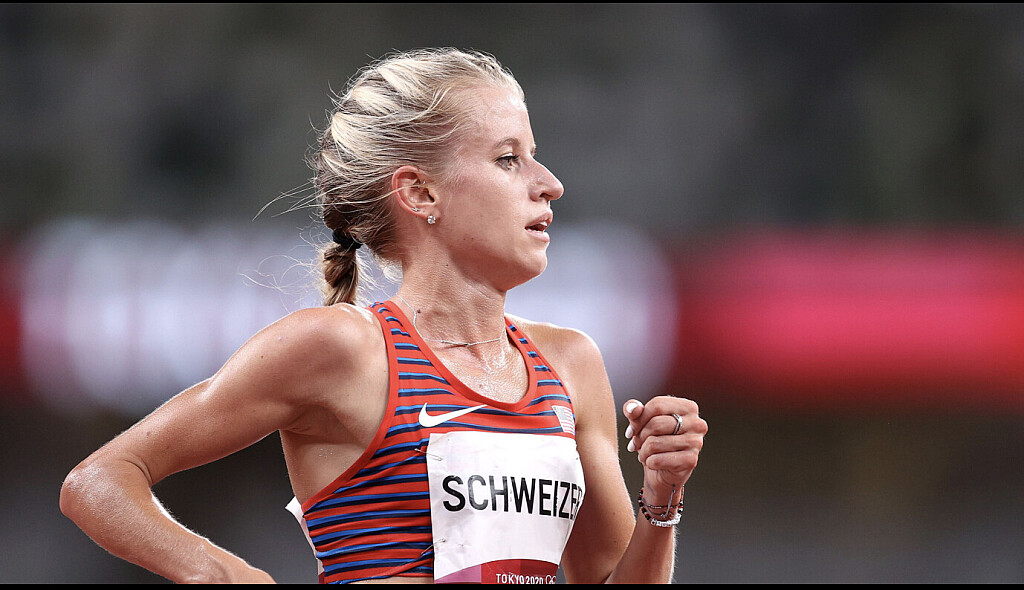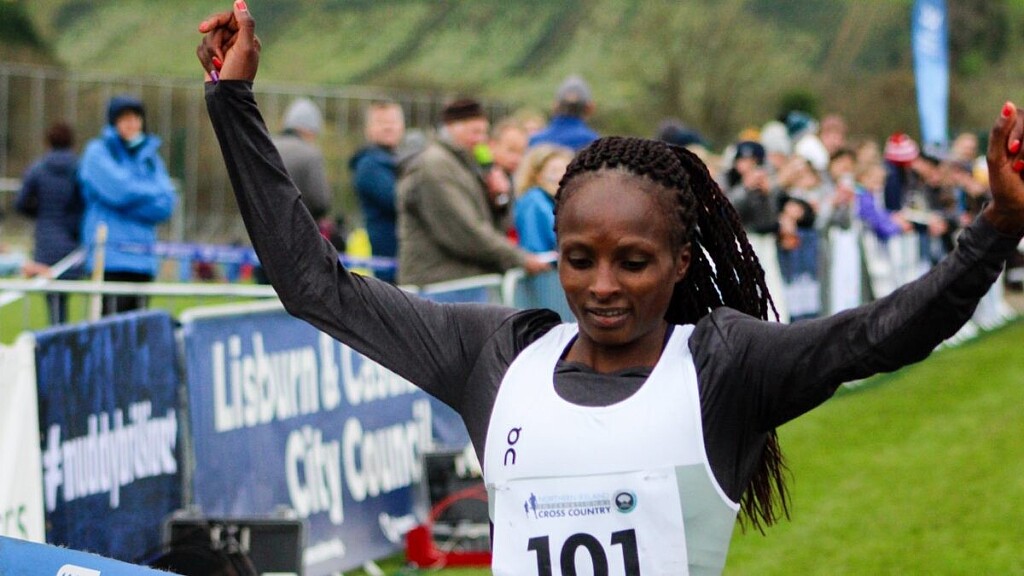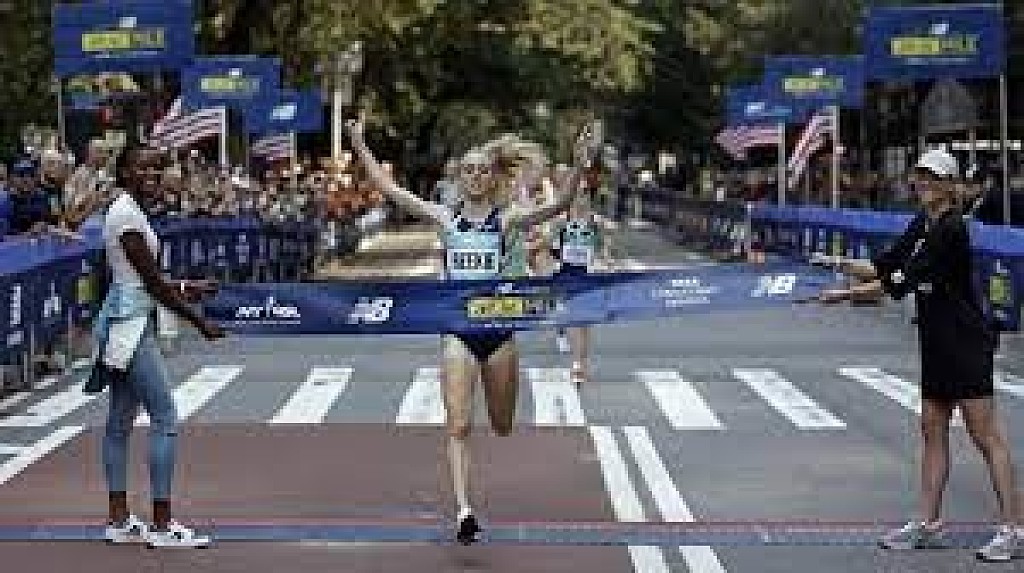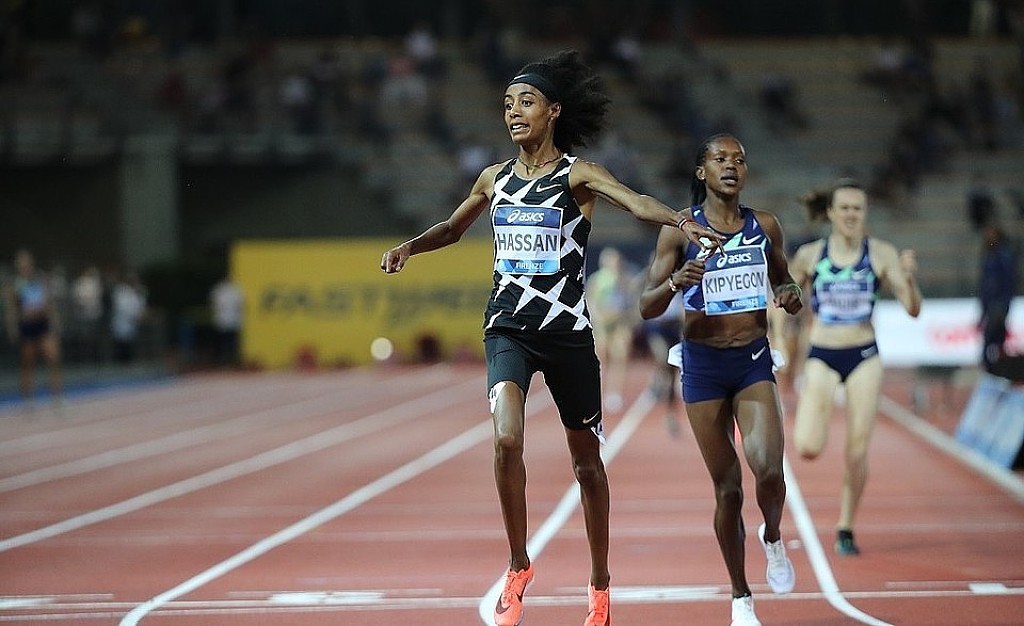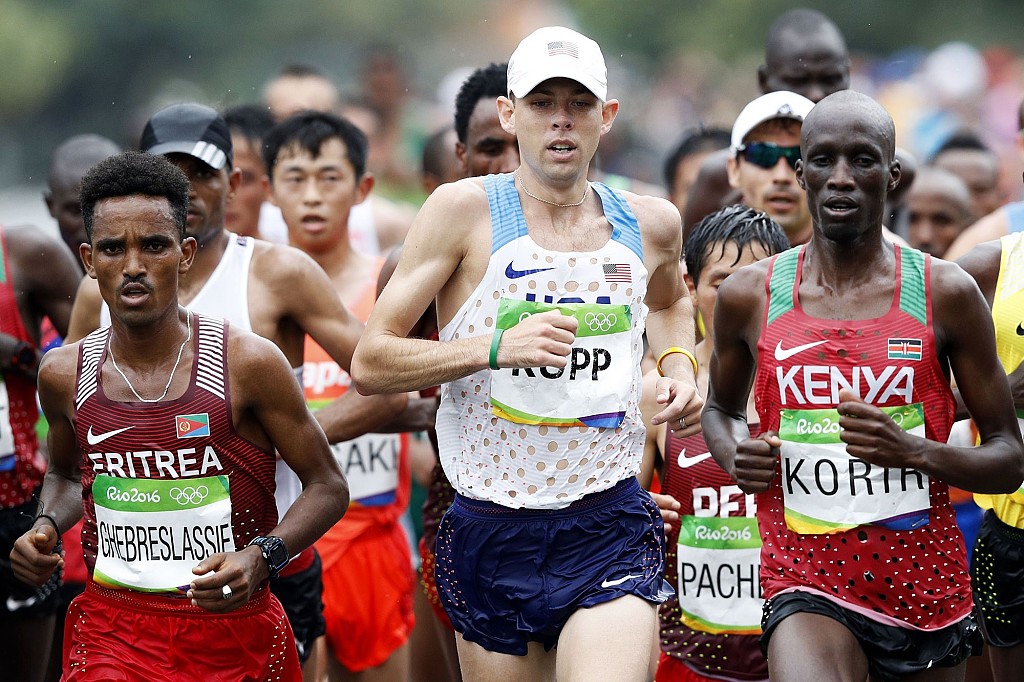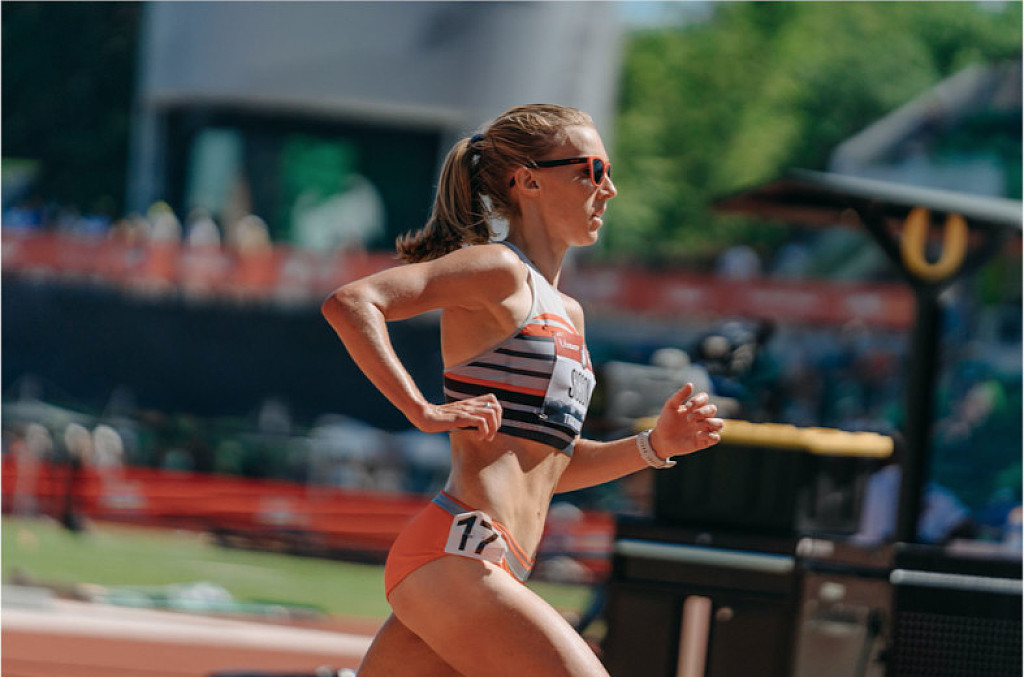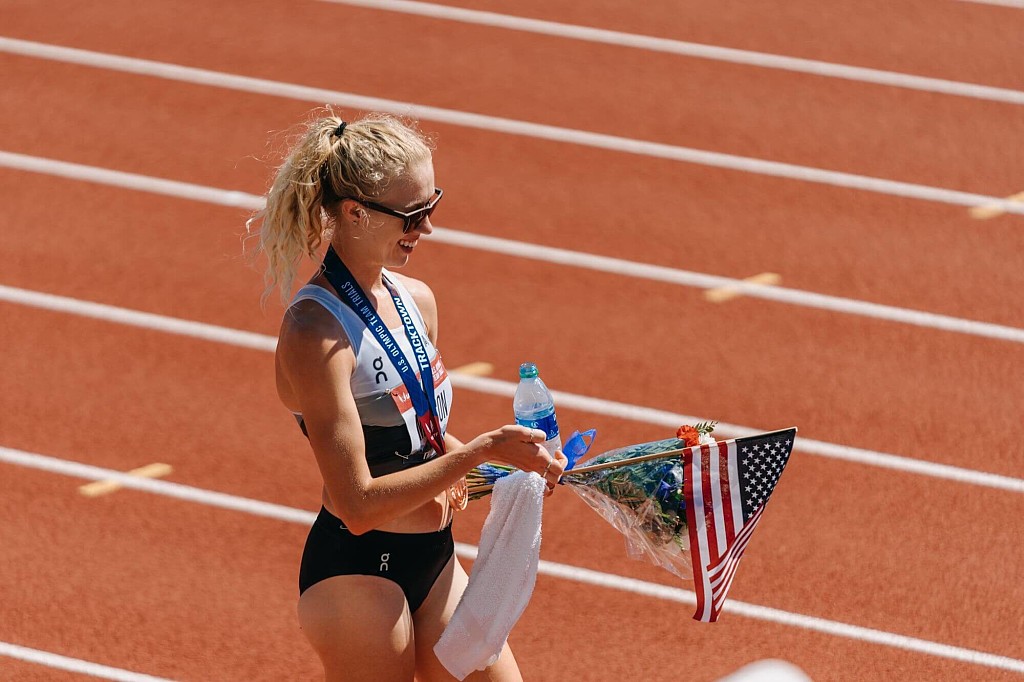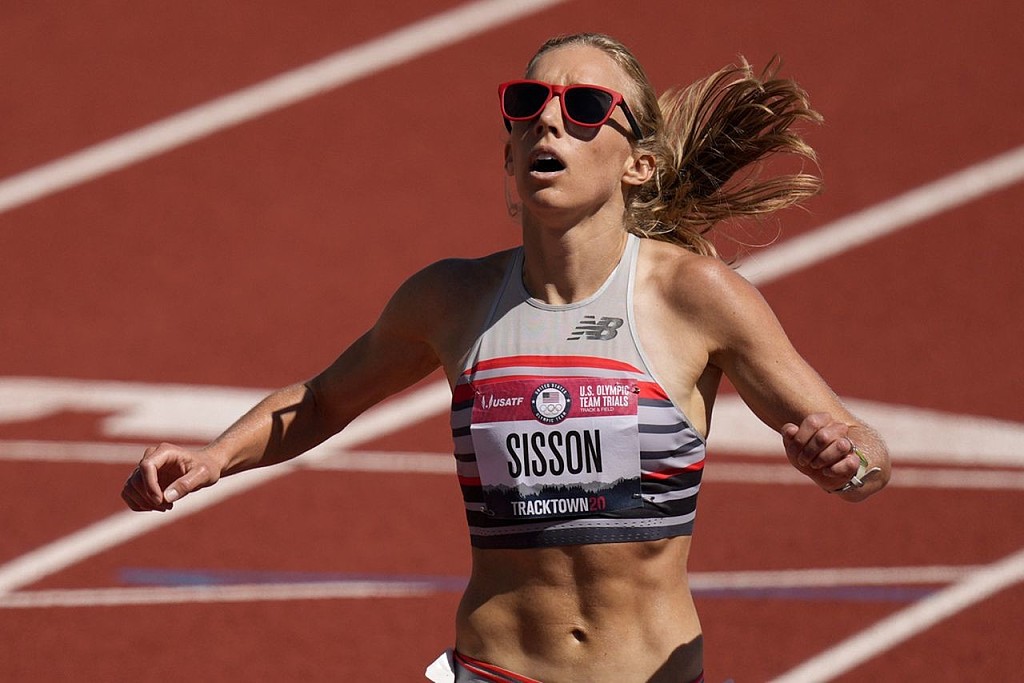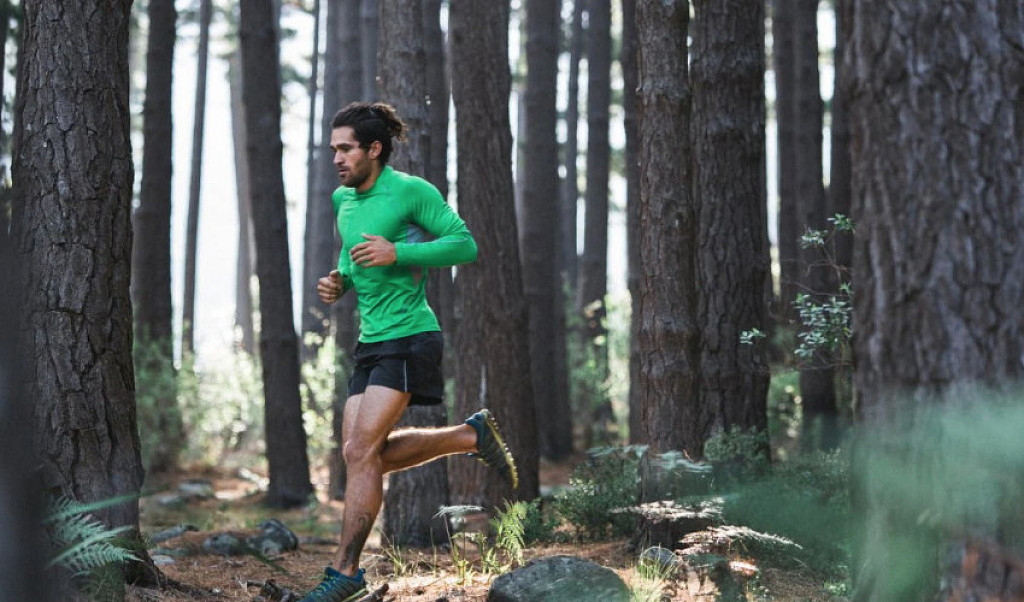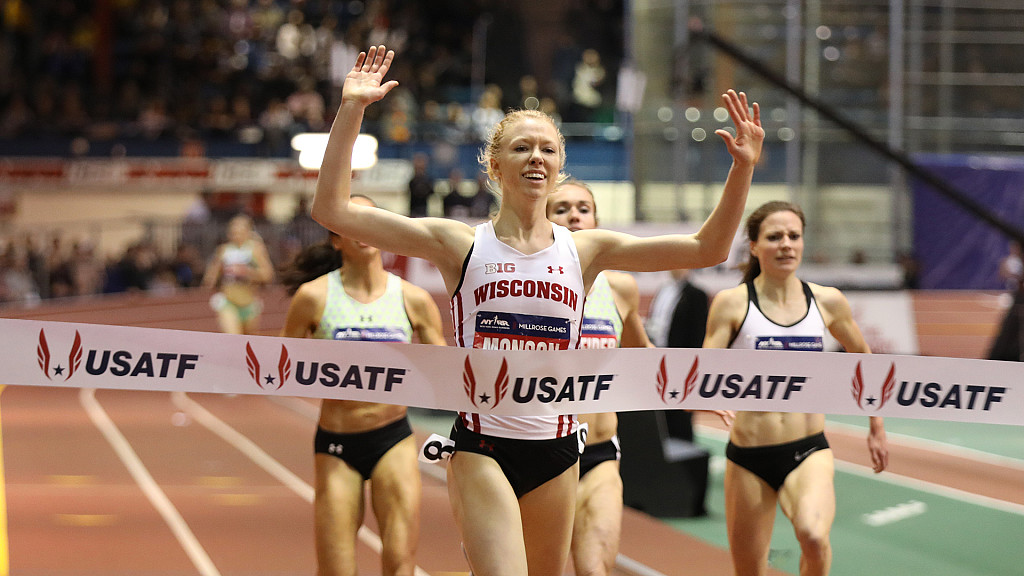Running News Daily
Running News Daily is edited by Bob Anderson. Send your news items to bob@mybestruns.com Advertising opportunities available. Train the Kenyan Way at KATA Kenya and Portugal owned and operated by Bob Anderson. Be sure to catch our movie A Long Run the movie KATA Running Camps and KATA Potato Farms - 31 now open in Kenya! https://kata.ke/
Index to Daily Posts · Sign Up For Updates · Run The World Feed
Articles tagged #Alicia Monson
Today's Running News
What You Need to Know About the U.S. Track and Field Olympic Trials
From June 21-30, more than 900 runners, throwers, and jumpers will put it all on the line for a chance to compete for Team USA at the Paris Olympics
The U.S. Track and Field Olympic Trials is a showcase of hundreds of America’s best track and field athletes who will be battling for a chance to qualify for Team USA and compete in this summer’s Paris Olympics. For many athletes competing in Eugene, simply making it on to the start line is a life-long accomplishment. Each earned their spot by qualifying for the trials in their event(s). The athlete qualifier and declaration lists are expected to be finalized this week.
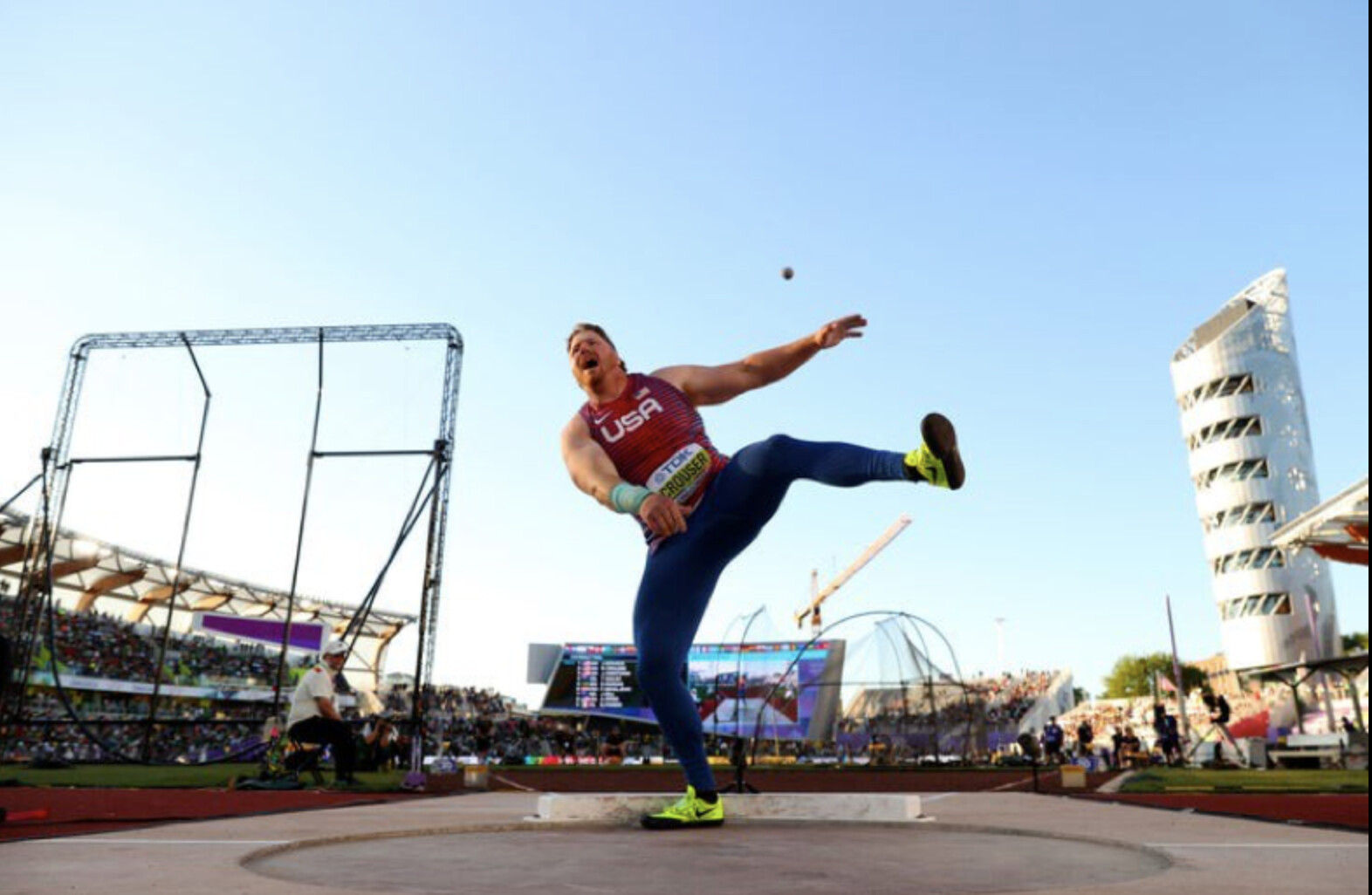
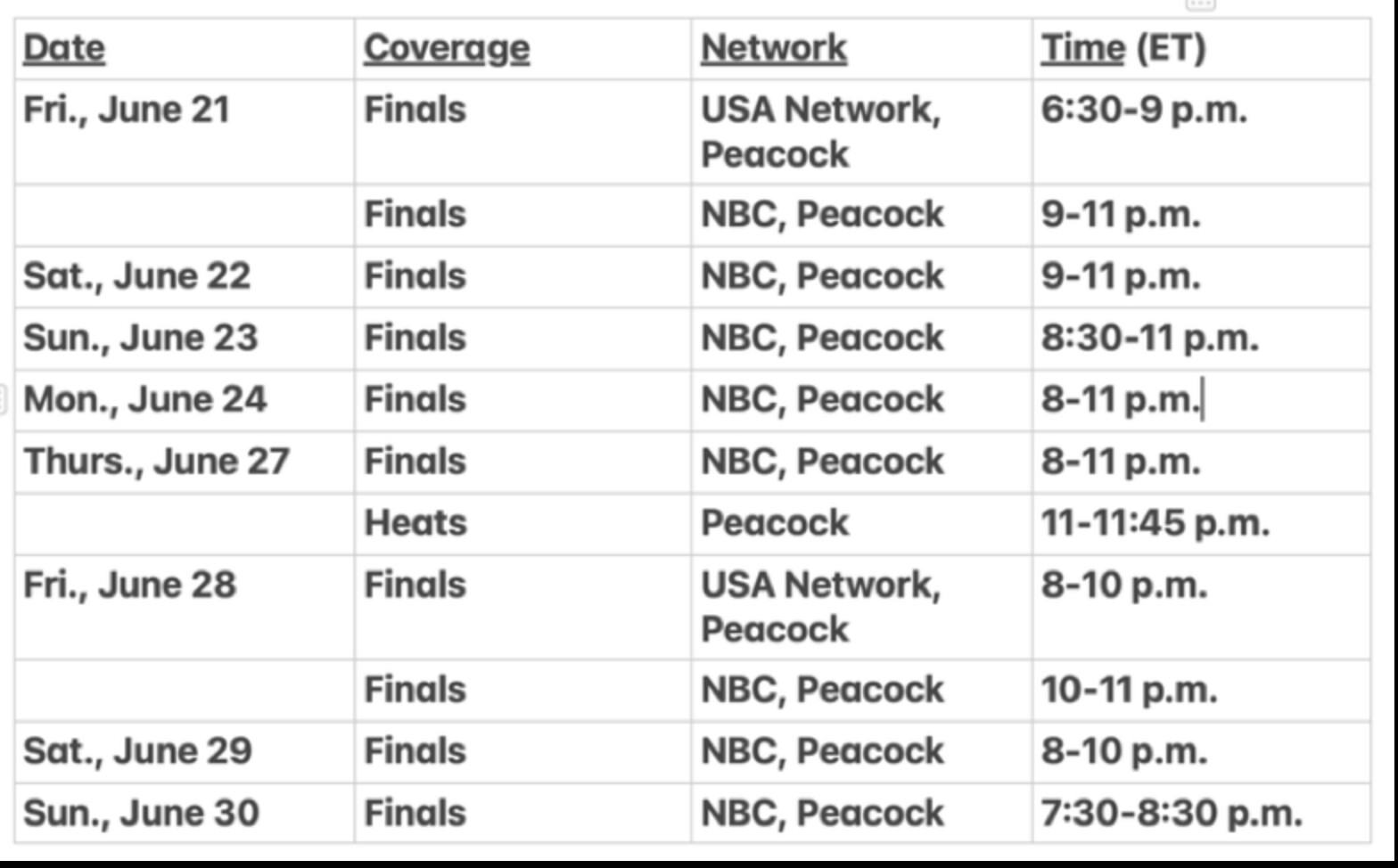
But for the highest echelon of athletes, the trials defines a make-or-break moment in their career. Only three Olympic team spots (in each gender) are available in each event, and given the U.S. depth in all facets of track and field—sprints, hurdles, throws, jumps, and distance running events—it’s considered the world’s hardest all-around team to make. How dominant is the U.S. in the world of track and field? It has led the track and field medal count at every Olympics since 1984.
At the trials, there are 20 total events for women and men—10 running events from 100 meters to 10,000 meters (including two hurdles races and the 3,000-meter steeplechase), four throwing events (discus, shot put, javelin, and hammer throw), four jumping events (long jump, triple jump, high jump, and pole vault), the quirky 20K race walking event, and, of course, the seven-event heptathlon (women) and the 10-event decathlon (men).
(At the Olympics, Team USA will also compete in men’s and women’s 4×100-meter and 4×400-meter relays, plus a mixed gender 4×400, and a mixed gender marathon race walk. The athletes competing on these teams will be drawn from those who qualify for Team USA in individual events, along with alternates who are the next-best finishers at the trials.
There’s also the Olympic marathon, but the U.S. Olympic Trials Marathon was held on February 3 in Orlando, Florida, to give the athletes enough time to recover from the demands of hammering 26.2 miles before the big dance in Paris.
Although some countries arbitrarily select their Olympic track and field teams, the U.S. system is equitable for those who show up at the Olympic Trials and compete against the country’s best athletes in each particular event. There’s just one shot for everyone, and if you finish among the top three in your event (and also have the proper Olympic qualifying marks or international rankings under your belt), you’ll earn the opportunity of a lifetime—no matter if you’re a medal contender or someone who burst onto the scene with a breakthrough performance.
The top performers in Eugene will likely be contenders for gold medals in Paris. The list of American stars is long and distinguished, but it has to start with sprinters Sha’Carri Richardson and Noah Lyles, who will be both competing in the coveted 100 and 200 meters. Each athlete won 100-meter titles at last summer’s world championships in Budapest and ran on the U.S. gold-medal 4×100 relays. (Lyles also won the 200) Each has been running fast so far this spring, but more importantly, each seems to have the speed, the skill, and swagger it takes to become an Olympic champion in the 100 and carry the title of the world’s fastest humans.
But first they have to qualify for Team USA at the Olympic Trials. Although Lyles is the top contender in the men’s 100 and second in the world with a 9.85-second season’s best, five other U.S. athletes have run sub-10-second efforts already this season. Richardson enters the meet No. 2 in the U.S. and No. 3 in the world in the women’s 100 (10.83), but eight other Americans have also broken 11 seconds. That will make the preliminary heats precariously exciting and the finals (women’s on June 22, men’s on June 23) must-see TV.
There are five returning individual Olympic gold medalists competing in the U.S. Olympic Trials with the hopes of repeating their medals in Paris—Athing Mu (800 meters), Sydney McLaughlin-Levrone (400-meter hurdles), Katie Moon (pole vault), Vallarie Allman (discus), and Ryan Crouser (shot put)—but there are more than a dozen other returning U.S. medalists from the Tokyo Olympics, as well as many more from the 2023 world championships, including gold medalists Chase Ealey (shot put), Grant Holloway (110-meter hurdles), Laulauga Tausaga (discus), and Crouser (shot put).
The most talented athlete entered in the Olympic Trials might be Anna Hall, the bronze and silver medalist in the seven-event heptathlon at the past two world championships. It’s an epic test of speed, strength, agility, and endurance. In the two-day event, Hall and about a dozen other women will compete in the 100-meter hurdles, high jump, shot put, 200 meters, long jump, javelin throw, and 800 meters, racking up points based on their performance in each event. The athletes with the top three cumulative totals will make the U.S. team. At just age 23, Hall is poised to contend for the gold in Paris, although Great Britain’s Katarina Johnson-Thompson, the world champion in 2019 and 2023, is also still in search of her first Olympic gold medal after injuries derailed her in 2016 and 2021.
If you can find your way to Eugene—and can afford the jacked-up hotel and Airbnb prices in town and nearby Springfield—you can watch it live in person at Hayward Field. Rebuilt in 2021, it’s one of the most advanced track and field facilities in the world, with an extremely fast track surface, a wind-blocking architectural design, and 12,650 seats that all offer great views and close-to-the-action ambiance. Tickets are still available for most days, ranging from $45 to $195.
If you can’t make it to Eugene, you can watch every moment of every event (including preliminary events) via TV broadcasts and livestreams. The U.S. Olympic Trials will be broadcast live and via tape delay with 11 total broadcast segments on NBC, USA Network, and Peacock. All finals will air live on NBC during primetime and the entirety of the meet will be streamed on Peacock, NBCOlympics.com, NBC.com and the NBC/NBC Sports apps.
The Olympic Trials will be replete with young, rising stars. For example, the men’s 1500 is expected to be one of the most hotly contested events and the top three contenders for the Olympic team are 25 and younger: Yared Nuguse, 25, the American record holder in the mile (3:43.97), Cole Hocker, 23, who was the 2020 Olympic Trials champion, and Hobbs Kessler, 21, who turned pro at 18 just before racing in the last Olympic Trials. Sprinter Erriyon Knighton, who turned pro at age 16 and ran in the Tokyo Olympics at age 17, is still only 20 and already has two world championships medals under his belt. Plus, the biggest track star from the last Olympics, Sydney McLaughlin-Levrone, is aiming for her third Olympics and third Olympic gold (she won the 400-meter hurdles and was on the winning 4×400 relay in Tokyo), and she’s only 24.
Several young collegiate stars could earn their place on the U.S. team heading to Paris after successful results in the just-completed NCAA championships. Leading the way are double-NCAA champions McKillenzie Long, 23, a University of Mississippi senior who enters the trials ranked sixth in the world in the 100 (10.91) and first in the 200 (21.83), and Parker Valby, a 21-year-old junior at the University of Florida, who ranks fifth in the U.S. in the 5,000 meters (14:52.18) and second in the 10,000 meters (30:50.43). Top men’s collegiate runners include 5,000-meter runner Nico Young (21, Northern Arizona University), 400-meter runner Johnnie Blockburger (21, USC), and 800-meter runners Shane Cohen (22, Virginia) and Sam Whitmarsh (21, Texas A&M).
It’s very likely. Elle St. Pierre is the top-ranked runner in both the 1500 and the 5,000, having run personal bests of 3:56.00 (the second-fastest time in U.S. history) and 14:34.12 (fifth-fastest on the U.S. list) this spring. Although she’s only 15 months postpartum after giving birth to son, Ivan, in March 2023, the 29-year-old St. Pierre is running better and faster than ever. In January, she broke the American indoor record in the mile (4:16.41) at the Millrose Games in New York City, then won the gold medal in the 3,000 meters at the indoor world championships in Glasgow in March.
St. Pierre could be joined by two world-class sprinters. Nia Ali, 35, the No. 2 ranked competitor in the 100-meter hurdles and the 2019 world champion, is a mother of 9-year-old son, Titus, and 7-year-old daughter, Yuri. Quanera Hayes, 32, the eighth-ranked runner in the 400 meters, is the mother to 5-year-old son, Demetrius. Hayes, a three-time 4×400 relay world champion, finished seventh in the 400 at the Tokyo Olympics.
Meanwhile, Kate Grace, a 2016 Olympian in the 800 meters who narrowly missed making Team USA for the Tokyo Olympics three years ago, is back running strong at age 35 after a two-year hiatus during which she suffered from a bout of long Covid and then took time off to give birth to her son, River, in March 2023.
No, unfortunately, there are a few top-tier athletes who are hurt and won’t be able to compete. That includes Courtney Frerichs (torn ACL), the silver medalist in the steeplechase at the Tokyo Olympics in 2021; Alicia Monson (torn medial meniscus), a 2020 Olympian in the 10,000 meters, the American record holder in the 5,000 and 10,000 meters, and the fifth-place finisher in the 5,000 at last year’s world championships; and Joe Klekcer (torn adductor muscle), who was 16th in the Tokyo Olympics and ninth in the 2022 world championships in the 10,000. Katelyn Tuohy, a four-time NCAA champion distance runner for North Carolina State who turned pro and signed with Adidas last winter, is also likely to miss the trials due to a lingering hamstring injury. There is also some doubt about the status of Athing Mu (hamstring), the Tokyo Olympics 800-meter champion, who has yet to race in 2024.
Meanwhile, Emma Coburn, a three-time Olympian, 2017 world champion, and 10-time U.S. champion in the 3,000-meter steeplechase, broke her ankle during her season-opening steeplechase in Shanghai on April 27. She underwent surgery a week later, and announced at the time that she would miss the trials, but has been progressing quickly through her recovery. If both she and Frerichs miss the meet, it will leave the door wide open for a new generation of steeplers—including 2020 Olympian Valerie Constein, who’s back in top form after tearing her ACL at a steeplechase in Doha and undergoing surgery last May.
The U.S. earned 41 medals in track and field at the 2020 Paralympic Games in Tokyo—including 10 gold medals—which ranked second behind China’s 51. This year’s Paralympics will follow the Olympics from August 28-September 8 in Paris.
The 2024 U.S. Paralympic Trials for track and field will be held from July 18-20 at the Ansin Sports Complex in Miramar, Florida, and Paralympic stars Nick Mayhugh, Brittni Mason, Breanna Clark, Ezra Frech, and Tatyana McFadden are all expected to compete.
In 2021 at the Tokyo Paralympics, Mayhugh set two new world records en route to winning the 100 meters (10.95) and 200 meters (21.91) in the T-37 category, and also took the silver medal in the 400 meters (50.26) and helped the U.S. win gold and set a world record in the mixed 4×100-meter relay (45.52). Clark returns to defend her Paralympic gold in the T-20 400 meters, while McFadden, a 20-time Paralympic medalist who also competed on the winning U.S. mixed relay, is expected to compete in the T-54 5,000 meters (bronze medal in 2021).
Livestream coverage of the U.S. Paralympic Trials for track and field will be available on Peacock, NBCOlympics.com, NBC.com, and the NBC/NBC Sports app, with TV coverage on CNBC on July 20 (live) and July 21 (tape-delayed).
Login to leave a comment
Gebreselama and Fisher win as records fall in San Juan Capistrano
Tsigie Gebreselama set a US all-comers' record to win the women’s 10,000m, while Grant Fisher topped a deep men’s race to triumph at The TEN, a World Athletics Continental Tour Silver event, in San Juan Capistrano, California, on Saturday (16).
Hitting the Olympic standards for Paris – 27:00.00 for men and 30:40.00 for women – was the aim for many athletes in San Juan Capistrano. A total of eight athletes managed it in the men’s race and four achieved it in the women’s.

Leading the way in that women’s race was Ethiopia’s world cross country silver medallist Gebreselama, who improved her PB to 29:48.34 to move to ninth on the world all-time list.
The 23-year-old won the Ras Al Khaimah Half Marathon in a PB of 1:05:14 three weeks ago and returned to the track to dip under 30 minutes for 10,000m for the first time, also becoming the first woman to break that time barrier on US soil.
Gebreselama, the fourth-place finisher in the World Road Running Championships half marathon in October, had been the only athlete to go with USA’s Alicia Monson from the start but when Monson struggled to maintain the pace, Gebreselama took over at the front and Monson later dropped out.
Chasing the Olympic standard in a group further back, USA’s Weini Kelati led the way and clocked a PB of 30:33.82 to finish second. She was followed by Lauren Ryan, who ran 30:35.66 to improve Benita Willis’s 20-year-old Australian record, and Britain’s Megan Keith, who ran 30:36.84 on her 10,000m debut.
Rachel Smith finished fifth in 31:04.02 and Karissa Schweizer sixth in 31:04.80.
In the men’s race, North American record-holder Fisher led one of the deepest 10,000m races in history as he sprinted into the lead in the closing stages to win in 26:52.04.
His 21-year-old US compatriot Nico Young followed him over the finish line in a US collegiate record of 26:52.72 and the next six were also under the Olympic entry standard.
Andreas Almgren ran a Swedish record of 26:52.87 to finish third, while Canada’s Mohammed Ahmed was fourth in 26:53.01, Eritrea’s Habtom Samuel was fifth in a PB of 26:53.84, Adriaan Wildschutt was sixth in a South African record of 26:55.54, USA’s Woody Kincaid was seventh in a PB of 26:57.57 and Kenya’s Edwin Kurgat was eighth in a PB of 26:57.66.
Login to leave a comment
The Ten
The world's fastest 10,000m races each year have taken place in a sleepy little coastal town in southern California. More national records were broken in 2022 than any other race on the planet as the best in the western hemisphere launched into rarified zones of time and space. The best return to San Juan Capistrano this year to cap off...
more...The TEN Preview: Nico Young Debuts, Alicia Monson Chases AR, and Karissa Schweizer Returns
Saturday night’s races at The TEN in San Juan Capistrano, Calif., will play a significant role in determining who gets to represent the United States in the 10,000 meters at this summer’s Olympics in Paris. The 2024 Olympic auto standards are incredibly tough — only three Americans have ever run under the 27:00.00 men’s standard and only five Americans have hit the 30:40.00 women’s standard — and you can count the number of world-class track 10,000-meter races each year on one hand. That’s why Grant Fisher, Nico Young, Woody Kincaid, Joe Klecker, Abdihamid Nur, Alicia Monson, Karissa Schweizer, Emily Infeld, Weini Kelati, and many more will be heading to SoCal Saturday night.
Since its first edition in 2021, The TEN has become the place for Americans to run a fast 10,000. Fisher set the men’s American record here in 2022 while Monson set the women’s American record here in 2023 and will be looking to repeat the feat in 2024.
To watch the main events, you’ll have to stay up late — the top heat of the women’s 10,000 does not start until 11:58 p.m. ET with the men to follow at 12:35 a.m. ET. Before then, we’ll get appetizer with the men’s 1500 (10:05 p.m. ET), which features Olympic medalists Matthew Centrowitz and Evan Jager kicking off their 2024 seasons.
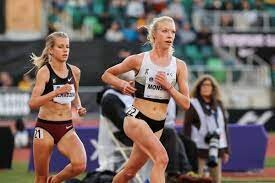
Matthew Centrowitz and Evan Jager have seen it all in running. They both graduated from high school in 2007 and made their first US teams as young guns — Jager as a 20-year-old in 2009, Centro at 21 in 2011. For much of the 2010s, they were among the very best in the world in their events, with Centro bringing home a gold medal from the 2016 Olympics and Jager a silver. Now Centro (34) and Jager (35) are the elder statesmen, trying to fend off a host of younger rivals and make one last Olympic team in Paris.
Both men will run their 2024 outdoor openers in the 1500 on Saturday (Centro did run a 3:59 indoor mile on January 27 while Jager ran the first 4k of a 5k in Boston on February 16 before dropping out). Which means it’s time for one of our favorite games: how fast (or slow) will Centro run?
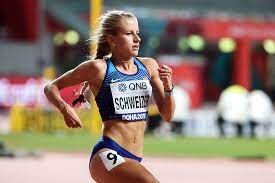
Throughout his career, Centrowitz has established himself as one of America’s greatest ever milers by delivering when it counts. He made every US team from 2011 through 2021 and won three outdoor medals as well as the 2016 World Indoor title. Yet in the latter years of his career, Centro thrown out some stinkers to begin his seasons before working his way into shape. In 2021, he opened with a 3:40 1500 on March 6 followed by a 1:50 800 on April 10 but ended the year running a 3:49 mile and making the Olympic team. Last year, he went to Australia and ran 1:56 for 800 on February 11 and 4:06 for the mile on February 23 but was running 3:36 for 1500 by May and eventually made the US final (though he only finished 10th).
So if Centro runs poorly here, it’s not cause for total panic. Heck, the fact that both he and Jager — who missed most of the 2023 campaign with a foot injury — are healthy enough to be racing is a promising sign. But the American 1500 scene is also more competitive than when Centro last made a team in 2021. Tactically, there is no better US racer than Centro, but he’s up against a group of young studs that includes three medalists from this year’s World Indoors (Yared Nuguse, Cole Hocker, Hobbs Kessler) and a trio of NCAA champions from the University of Washington (Luke Houser, Joe Waskom, Nathan Green). Nuguse is the oldest of that group at 24 — a full decade younger than Centro. Centrowitz is facing an uphill battle to make Olympic team #4 but if he can run 3:36 or 3:37 here and stay healthy for the next three months, he could still have a shot.
As far as the man most likely to win here, Sweden’s Samuel Pihlström ran 3:35 in February and just finished 8th at World Indoors.
Women’s 10,000 (11:58 p.m. ET): Alicia Monson tries to become the first US woman under 30:00 as Karissa Schweizer returns.
Unlike almost every other athlete in this meet, Alicia Monson already has the Olympic standard thanks to the 30:03 American record she ran here last year. So why is she back for another crack?
Monson laid it all out in an interview with LetsRun.com back in December:
Basically, it was just what can we do that would make me feel the most ready for the Olympics? And I feel like that’s running a sub-30:00 10k. I guess the plan would be to break the American record again, but really it’s how fast can I run to feel the most prepared? Because obviously I’m running against people who can run very fast and [I need to] be prepared to run at a pace that feels easy to them and then kick off of it.
Monson was still with the leaders at the bell at last year’s World Championships and her 5th-place finish was the best of her career in a global final. But she finished nearly four seconds out of the medals and the competition will be fierce in Paris. The last three global 10k champions — Sifan Hassan (29:06 pb), Letesenbet Gidey (29:01 pb), and Gudaf Tsegay (29:29 pb) — occupy three of the top four spots on the all-time 10,000m list. The slowest of them, Tsegay, still has a pb 34 seconds faster than Monson’s.
by Jonathan Gault
Login to leave a comment
The Ten
The world's fastest 10,000m races each year have taken place in a sleepy little coastal town in southern California. More national records were broken in 2022 than any other race on the planet as the best in the western hemisphere launched into rarified zones of time and space. The best return to San Juan Capistrano this year to cap off...
more...ST. PIERRE'S MILE RECORD EARNS HER USATF ATHLETE OF THE WEEK HONORS
INDIANAPOLIS — Bettering her own American record* in the women's mile, Elle St. Pierre (Enosburg, Vermont/USATF New England) earned recognition as the 5th USATF Athlete of the Week award winner for 2024.In only her second track race since giving birth to a son last March, St. Pierre clipped almost a half-second off her own AR in the mile to win the Millrose Games in 4:16.41. She became the third fastest woman ever and her en route 1500 time of 4:00.34 puts her second on the all-time U.S. indoor performer list.St. Pierre, the 2022 World Indoor Championships silver medalist in the 3000 and an Olympian at Tokyo in the 1500, beat a star-studded field at Millrose, making a strong move with 300 to go to pass Australia's Jessica Hull and take the lead. Her final quarter-mile of 61.33 put away a group of women who behind her set four national records and eight lifetime bests. Other top performances from last week:
Grant Fisher lowered the American best in the men's 2 mile with an 8:03.62 to place second at the Millrose Games. He is now the No. 3 all-time world performer. En route, his 7:30.88 for 3000 moved him to No. 3 on the all-time U.S. performer list.
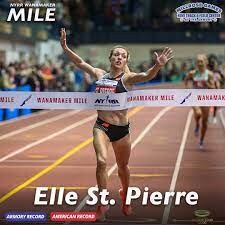
Alicia Monson lowered the American best in the women's 2 mile at the Millrose Games, placing third in 9:09.70. She is now the No. 5 all-time world performer.
Yared Nuguse won the men's mile at the Millrose Games in 3:47.83, the third fastest time ever indoors, and the second fastest by an American. His en route 3:33.43 for 1500 was the third fastest ever by an American.
Brandon Miller won the men's 600 at the Kirby Elite meet in Albuquerque in 1:14.03, making him the No. 2 all-time world performer.
Nia Akins won the women's 600 at the Kirby Elite meet in Albuquerque in a world-leading 1:24.32 to move to No. 8 on the all-time world performer list.
Grant Holloway continued his 10-year winning streak in the men's 60H with a 7.32 at the Liévin World Indoor Tour - Gold meet in France. He tied the fourth-fastest time ever and only one man besides him has ever run faster.
*All records subject to verification by the USATF Records Committee. Now in its 23nd year, USATF’s Athlete of the Week program is designed to recognize outstanding performers at all levels of the sport. USATF names a new honoree each week when there are high-level competitions and features the athlete on USATF.org. Selections are based on top performances and results from the previous week.2024 Winners: January 17, Weini Kelati; January 24, Cooper Teare; January 31, Nico Young; February 7, Fiona O'Keeffe; February 14, Elle St. Pierre.
Login to leave a comment
2026 USAFT Indoor Championships
The 2026 USATF Indoor Championships, presented by Prevagen, are set to take place on February 22-23 at the Ocean Breeze Athletic Complex in Staten Island, New York. This premier event will feature the nation's top track and field athletes competing for national titles and spots on the U.S. team for the 2025 World Indoor Championships in Nanjing, China. The Ocean...
more...World record holder Christian Coleman going for third victory at Millrose Games
World record holder Christian Coleman will be aiming for his third straight victory at the Millrose Games after bagging wins in 2022 and 2023.
World record-holder Christian Coleman will be seeking his third straight 60m victory at the Millrose Games, a World Athletics Indoor Tour Gold meeting in New York on Sunday, February 11.
Coleman will be opening his season at the event after a mixed 2023 season where he lost some races and emerged victorious in others.
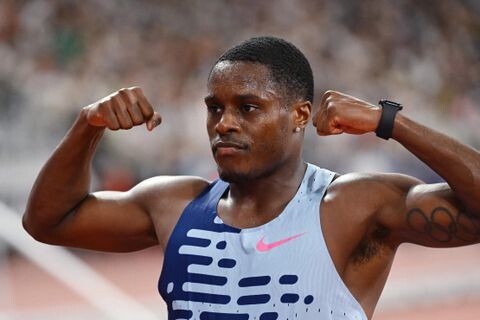
He completed his season at the Prefontaine Classic, the Diamond League final meeting where he stunned triple World Champion Noah Lyles.
At the Millrose Games, he will be up against Canada’s Olympic 200m champion Andre De Grasse, who has not run the 60m at Millrose since 2016.
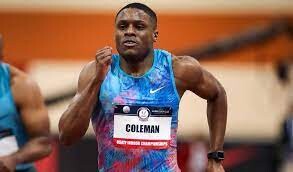
Jamaica’s Ackeem Blake, who set a PB of 6.45 in his first-ever indoor 60m race last weekend in Boston, should also prove to be a nightmare for the American.
Meanwhile, Tia Jones turned heads in Boston last week when she sped to victory in the 60m hurdles, clocking 7.72 – just 0.04 shy of the world indoor record.
At the Millrose Games, Jones will take on the likes of two-time world champion Danielle Williams, two-time world indoor champion Nia Ali, defending Millrose champion Devynne Charlton of The Bahamas, and NCAA champion Ackera Nugent of Jamaica.
Sprint sensation Julien Alfred is opening her season after an incredible 2023 campaign. The Saint Lucian star, who was undefeated last year in the 60m and 100m until placing fifth in the 100m at the World Championships in Budapest, will line up against Jamaicans Shashalee Forbes and Briana Williams and US contenders Tamara Clark and English Gardner.
In the men’s 60m hurdles, 2022 world silver medallist Trey Cunningham of the US, who is second on the world list, will take on a strong slate that includes 2023 world bronze medallist Daniel Roberts.
On her part, Alicia Monson broke the North American record in the 3000m last year at Millrose and is on a mission to win her third straight title on this track – with a record perhaps in a different event.
The two-mile distance is one more lap than 3000m and her ultimate goal is the continental record of 9:10.28. Monson will be in fast company with Olympic 1500m silver medalist Laura Muir of Great Britain, US mile record-holder Nikki Hiltz, and world U20 5000m champion Medina Eisa of Ethiopia.
World indoor silver medalist Elle St Pierre will vie for her third title in the women’s Wanamaker Mile with the race being a rematch between herself, and Jessica Hull of Australia, who won their showdown in the 3000m last week with an Oceanian indoor record.
Olympic 800m bronze medalist Raevyn Rogers, who contested the 400m last week in Boston, returns to her specialty at Millrose and will face Jamaica’s Natoya Goule-Toppin.
Noah Kibet and Bryce Hoppel, the world indoor silver and bronze medalists respectively, will clash in the men’s 800m.
by Abigael Wuafula
Login to leave a comment
NYRR Millrose Games
The Pinnacle of Indoor Track & Field The NYRR Millrose Games, first held in 1908, remains the premier indoor track and field competition in the United States. The 2025 edition will once again bring the world’s top professional, collegiate, and high school athletes to New York City for a day of thrilling competition. Hosted at the New Balance Track &...
more...Rhasidat Adeleke and Talitha Diggs head to Millrose Games
The past two women’s NCAA 400m champions, Rhasidat Adeleke and Talitha Diggs, will line up for a 300m clash at the Millrose Games in New York on February 11.
Racing them at this season’s penultimate World Athletics Indoor Tour Gold meeting will be Jamaica’s Leah Anderson and Candice McLeod.
Adeleke has already made a strong start to 2024 as she ran 7.15 for 60m and 22.49 for 200m to improve her own Irish indoor records in Albuquerque on 20 January.
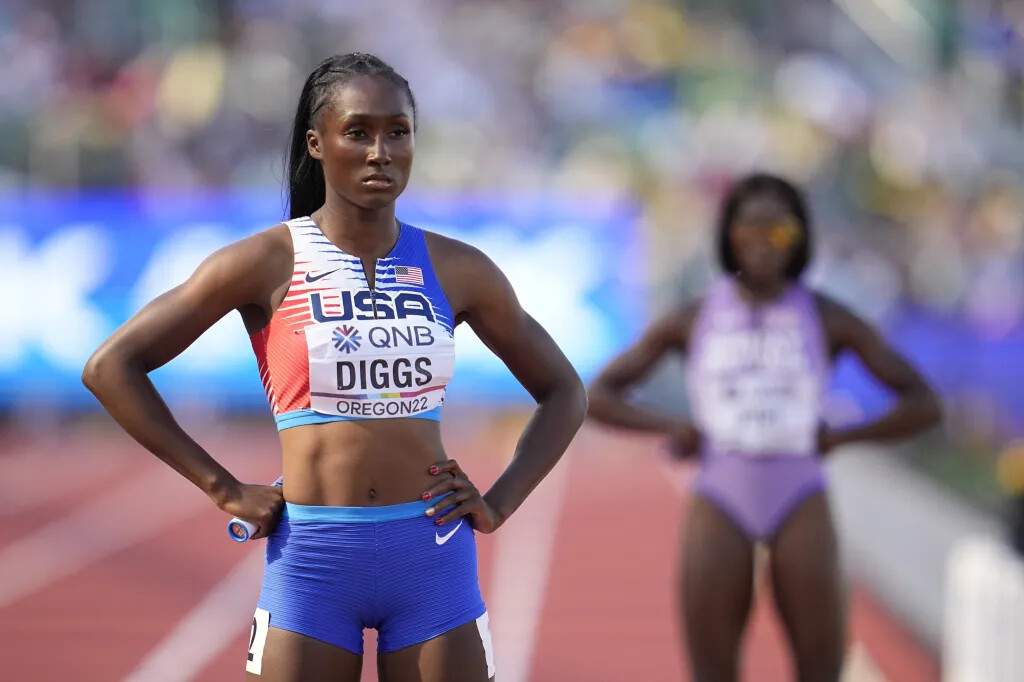
The 21-year-old, who finished fourth in the world 400m final last year in Budapest, has raced 300m once before, in 2022 when she ran a national record of 36.87.
In New York she’ll go up against the athlete who preceded her as NCAA 400m champion, Diggs.
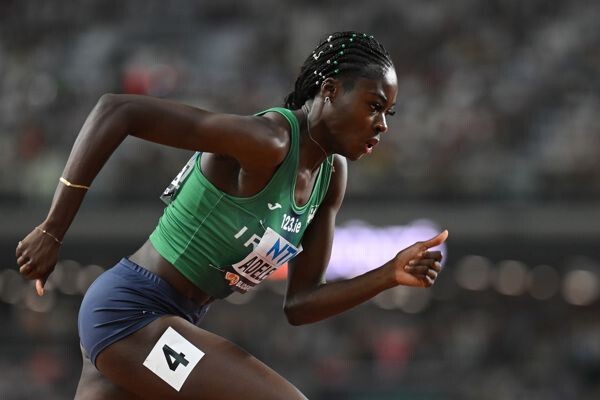
USA’s Diggs is set to make her season debut at this weekend’s World Indoor Tour Gold meeting in Boston, where she will also race the 300m.
New York offers a rematch as her PB of 36.37 was set when winning ahead of Adeleke in Clemson in 2022.
Anderson finished third in last year’s Millrose Games 300m in 36.68, while Olympic and world 4x400m medallist McLeod is set to race the distance for the first time.
Joining the already announced Alicia Monson in the two-mile race in New York will be North American mile record-holder Nikki Hiltz, who won the US 1500m title last year and started 2024 by running 2:34.09 for 1000m.
They will race against a field featuring USA’s Emily Infeld and Courtney Wayment, Japan’s Nozomi Tanaka, and Ethiopia’s Medina Eisa and Melknat Wudu.
In the high jump, the previously announced Yaroslava Mahuchikh will compete against 2016 world indoor champion Vashti Cunningham, NCAA champion Charity Griffith and Asian Games champion Safina Sadullayeva.
by World Athletics
Login to leave a comment
NYRR Millrose Games
The Pinnacle of Indoor Track & Field The NYRR Millrose Games, first held in 1908, remains the premier indoor track and field competition in the United States. The 2025 edition will once again bring the world’s top professional, collegiate, and high school athletes to New York City for a day of thrilling competition. Hosted at the New Balance Track &...
more...Stellar Field Assembled to Challenge Yared Nuguse in the NYRR Men's Wanamaker Mile
The 116th Millrose Games is now just 19 days away, as the eyes of the global athletics community will once again return to the Nike Track & Field Center at The Armory. As always, the meet will conclude with the NYRR Men’s Wanamaker Mile, a legendary race with over a century of tradition.
The Millrose Games is scheduled to take place on Sunday, February 11th.
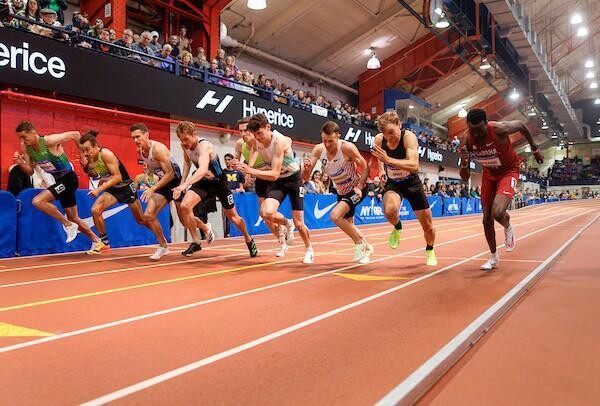
Previously announced as the headliner for this race is defending champion Yared Nuguese, the American record holder in the mile indoors and outdoors. Nuguse has his eyes on the world record of 3:47.01, but he will have to contend with a number of the best athletes in the world if he is to win his second straight Wanamaker title, including two additional 1500m finalists from last summer’s World Championships.
“[The world record] feels like a goal that’s within my grasp of achieving.” said Nuguse. “Not only am I stronger and smarter than I was last year, but I feel like I will be able to attack this race with a lot more confidence to chase the world record. When I went to Millrose for the first time, I was just chasing the American record. So changing that mindset, just seeing how far I’ve come, it feels like a very real possibility at this point.”
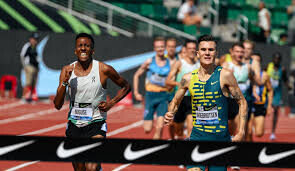
The elite athletes lining up to challenge Nuguse are as follows:
-Mario Garcia Romo was last year’s runner-up, and he is the 2022 1500m champion for Spain and a two-time World Championship finalist.
-Neil Gourley is a three-time British 1500m champion, and he holds the European indoor mile record.
-George Mills placed third in the mile at the Diamond League final, moving up to third on the all-time British list, before also placing second at the NYRR 5th Avenue Mile.
-Hobbs Kessler is the reigning World Road Mile champion, and he also holds the national high school indoor mile record.
-Andrew Coscoran is an Olympian and the Irish record holder over 1500m.
-Adam Spencer of the University of Wisconsin and Australia holds the NCAA 1500m record.
-Sam Prakel is the US Road Mile champion, and he placed fourth nationally in the 1500m.
-Charles Philibert-Thiboutot is a Canadian Olympian and the 2023 NACAC 1500m champion.
The winner of the mile at the Dr. Sander Invitational this Saturday, January 27th will be added to the NYRR Wanamaker Mile field as well.
Stay tuned over the coming weeks before the 116th Millrose Games, as the world-class start lists are finalized. Top athletes already confirmed to compete include Laura Muir, Elle Purrier-St. Pierre, Dina Asher-Smith, Julien Alfred, Alicia Monson, Grant Fisher, Danielle Williams, Josh Kerr, Cooper Teare, Yaroslava Mahuchikh, Christian Coleman, Andre De Grasse, Nia Ali, Chris Nilsen, and KC Lightfoot, with even more Olympians and World Championship medalists still to come.
As always, the Millrose Games will feature the absolute best athletes in the sport, including dozens of Olympians and world champions. The Millrose Games is a World Athletics Indoor Tour Gold meet. With highest-level competition at the youth, high school, collegiate, club, and professional levels, there is truly something for everyone at the Millrose Games.
Tickets can be purchased at https://www.millrosegames.org/
Login to leave a comment
NYRR Millrose Games
The Pinnacle of Indoor Track & Field The NYRR Millrose Games, first held in 1908, remains the premier indoor track and field competition in the United States. The 2025 edition will once again bring the world’s top professional, collegiate, and high school athletes to New York City for a day of thrilling competition. Hosted at the New Balance Track &...
more...The Pill That Over Half the Distance Medallists Used at the 2023 Worlds
What's the deal with sodium bicarbonate?What if there was a pill, new to the market this year, that was used by more than half of the distance medalists at the 2023 World Athletics Championships? A supplement so in-demand that there was a reported black market for it in Budapest, runners buying from other runners who did not advance past the preliminary round — even though the main ingredient can be found in any kitchen?
How did this pill become so popular? Well, there are rumors that Jakob Ingebrigtsen has been taking it for years — rumors that Ingebrigtsen’s camp and the manufacturers of the pill will neither confirm nor deny.
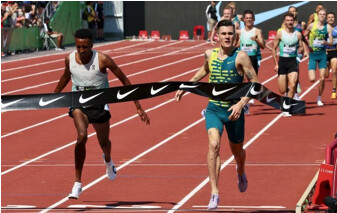
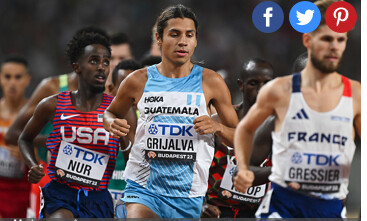
So about this pill…does it work? Does it actually boost athletic performance? Ask a sports scientist, someone who’s studied it for more than a decade, and they’ll tell you yes.
“There’s probably four or five legal, natural supplements, if you will, that seem to have withstood the test of time in terms of the research literature and [this pill] is one of those,” says Jason Siegler, Director of Human Performance in the College of Health Solutions at Arizona State University.
But there’s a drawback to this pill. It could…well, let’s allow Luis Grijalva, who used it before finishing 4th in the World Championship 5,000m final in Budapest, to explain.
“I heard stories if you do it wrong, you chew it, you kind of shit your brains out,” Grijalva says. “And I was a little bit scared.”
The research supports that, too.
“[Gastrointestinal distress] has by far and away been the biggest hurdle for this supplement,” Siegler says.Okay, enough with the faux intrigue. If you’ve read the subtitle of this article, you know the pill we are talking about is sodium bicarbonate. Specifically, the Maurten Bicarb System, which has been available to the public since February and which has been used by some of the top teams in endurance sports: cycling juggernaut Team Jumbo-Visma and, in running, the On Athletics Club and NN Running Team. (Maurten has sponsorship or partnership agreements with all three).Some of the planet’s fastest runners have used the Maurten Bicarb System in 2023, including 10,000m world champion Joshua Cheptegei, 800m silver medalist Keely Hodgkinson, and 800m silver medalist Emmanuel Wanyonyi. Faith Kipyegon used it before winning the gold medal in the 1500m final in Budapest — but did not use it before her win in the 5,000m final or before any of her world records in the 1500m, mile, and 5,000m.
Herman Reuterswärd, Maurten’s head of communications, declined to share a full client list with LetsRun but claims two-thirds of all medalists from the 800 through 10,000 meters (excluding the steeplechase) used the product at the 2023 Worlds.
After years of trial and error, Maurten believes it has solved the GI issue, but those who have used their product have reported other side effects. Neil Gourley used sodium bicarbonate before almost every race in 2023, and while he had a great season — British champion, personal bests in the 1500 and mile — his head ached after races in a way it never had before. When Joe Klecker tried it at The TEN in March, he felt nauseous and light-headed — but still ran a personal best of 27:07.57. In an episode of the Coffee Club podcast, Klecker’s OAC teammate George Beamish, who finished 5th at Worlds in the steeplechase and used the product in a few races this year, said he felt delusional, dehydrated, and spent after using it before a workout this summer.
“It was the worst I’d felt in a workout [all] year, easily,” Beamish said.
Not every athlete who has used the Maurten Bicarb System has felt side effects. But the sport as a whole is still figuring out what to do about sodium bicarbonate.
Many athletes — even those who don’t have sponsorship arrangements with Maurten — have added it to their routines. But Jumbo-Visma’s top cyclist, Jonas Vingegaard — winner of the last two Tours de France — does not use it. Neither does OAC’s top runner, Yared Nuguse, who tried it a few times in practice but did not use it before any of his four American record races in 2023.“I’m very low-maintenance and I think my body’s the same,” Nuguse says. “So when I tried to do that, it was kind of like, Whoa, what is this? My whole body felt weird and I was just like, I either did this wrong or this is not for me.”
How sodium bicarbonate works
The idea that sodium bicarbonate — aka baking soda, the same stuff that goes in muffins and keeps your refrigerator fresh — can boost athletic performance has been around for decades.
“When you’re exercising, when you’re contracting muscle at a really high intensity or a high rate, you end up using your anaerobic energy sources and those non-oxygen pathways,” says Siegler, who has been part of more than 15 studies on sodium bicarbonate use in sport. “And those pathways, some of the byproducts that they produce, one of them is a proton – a little hydrogen ion. And that proton can cause all sorts of problems in the muscle. You can equate that to that sort of burn that you feel going at high rates. That burn, most of that — not directly, but indirectly — is coming from the accumulation of these little hydrogen ions.”
As this is happening, the kidneys produce bicarbonate as a defense mechanism. For a while, bicarbonate acts as a buffer, countering the negative effects of the hydrogen ions. But eventually, the hydrogen ions win.The typical concentration of bicarbonate in most people hovers around 25 millimoles per liter. By taking sodium bicarbonate in the proper dosage before exercise, Siegler says, you can raise that level to around 30-32 millimoles per liter.
“You basically have a more solid first line of defense,” Siegler says. “The theory is you can go a little bit longer and tolerate the hydrogen ions coming out of the cell a little bit longer before they cause any sort of disruption.”
Like creatine and caffeine, Siegler says the scientific literature is clear when it comes to sodium bicarbonate: it boosts performance, specifically during events that involve short bursts of anaerobic activity. But there’s a catch.
***
Bicarb without the cramping
Sodium bicarbonate has never been hard to find. Anyone can swallow a spoonful or two of baking soda with some water, though it’s not the most appetizing pre-workout snack. The problem comes when the stomach tries to absorb a large amount of sodium bicarbonate at once.
“You have a huge charged load in your stomach that the acidity in your stomach has to deal with and you have a big shift in the partial pressure of carbon dioxide across the gut,” Siegler says. “And that’s what gives you the cramping.”
A few years ago, Maurten was trying to solve a similar problem for marathoners trying to ingest large amounts of carbohydrates during races. The result was their carbohydrate drink, which relies on something called a hydrogel to form in the stomach. The hydrogel resists the acidity of the stomach and allows the carbohydrates to be absorbed in the intestine instead, where there is less cramping.
“We thought, okay, we are able to solve that one,” Reuterswärd says. “Could we apply the hydrogel technology to something else that is really risky to consume that could be beneficial?”
For almost four years, Maurten researched the effects of encapsulating sodium bicarbonate in hydrogels in its Swedish lab, conducting tests on middle-distance runners in Gothenburg. Hydrogels seemed to minimize the risk, but the best results came when hydrogels were paired with microtablets of sodium bicarbonate.
The result was the Maurten Bicarb System — “system,” because the process for ingesting it involves a few steps. Each box contains three components: a packet of hydrogel powder, a packet of tiny sodium bicarbonate tablets, and a mixing bowl. Mix the powder with water, let it stand for a few minutes, and sprinkle in the bicarb.The resulting mixture is a bit odd. It’s gooey. It’s gray. It doesn’t really taste like anything. It’s not quite liquid, not quite solid — a yogurt-like substance flooded with tiny tablets that you eat with a spoon but swallow like a drink.
The “swallow” part is important. Chew the tablets and the sodium bicarbonate will be absorbed before the hydrogels can do their job. Which means a trip to the toilet may not be far behind.
When Maurten launched its Bicarb System to the public in February 2023, it did not have high expectations for sales in year one.
“It’s a niche product,” Reuterswärd says. “From what we know right now, it maybe doesn’t make too much sense if you’re an amateur, if you’re just doing 5k parkruns.”
But in March, Maurten’s product began making headlines in cycling when it emerged that it was being used by Team Jumbo-Visma, including by stars Wout van Aert and Primož Roglič. Sales exploded. Because bicarb dosage varies with bodyweight, Maurten’s system come in four “sizes.” And one size was selling particularly well.
“If you’re an endurance athlete, you’re around 60-70 kg (132-154 lbs),” Reuterswärd says. “We had a shortage with the size that corresponded with that weight…The first couple weeks, it was basically only professional cyclists buying all the time, massive amounts. And now we’re seeing a similar development in track & field.”
If there was a “Jumbo-Visma” effect in cycling, then this summer there was a “Jakob Ingebrigtsen” effect in running.To be clear: there is no official confirmation that Ingebrigtsen uses sodium bicarbonate. His agent, Daniel Wessfeldt, did not respond to multiple emails for this story. When I ask Reuterswärd if Ingebrigtsen has used Maurten’s product, he grows uncomfortable.
“I would love to be very clear here but I will have to get back to you,” Reuterswärd says (ultimately, he was not able to provide further clarification).
But when Maurten pitches coaches and athletes on its product, they have used data from the past two years on a “really good” 1500 guy to tout its effectiveness, displaying the lactate levels the athlete was able to achieve in practice with and without the use of the Maurten Bicarb System. That athlete is widely believed to be Ingebrigtsen. Just as Ingebrigtsen’s success with double threshold has spawned imitators across the globe, so too has his rumored use of sodium bicarbonate.
Grijalva says he started experimenting with sodium bicarbonate “because everybody’s doing it.” And everybody’s doing it because of Ingebrigtsen.
“[Ingebrigtsen] was probably ahead of everybody at the time,” Grijalva said. “Same with his training and same with the bicarb.”
OAC coach Dathan Ritzenhein took sodium bicarbonate once before a workout early in his own professional career, and still has bad memories of swallowing enormous capsules that made him feel sick. Still, he was willing to give it a try with his athletes this year after Maurten explained the steps they had taken to reduce GI distress.
“Certainly listening to the potential for less side effects was the reason we considered trying it,” says Ritzenhein. “I don’t know who is a diehard user and thinks that it’s really helpful, but around the circuit I know a lot of people that have said they’ve [tried] it.”
Coach/agent Stephen Haas says a number of his athletes, including Gourley, 3:56 1500 woman Katie Snowden, and Worlds steeple qualifier Isaac Updike, tried bicarb this year. In the men’s 1500, Haas adds, “most of the top guys are already using it.”
Yet 1500-meter world champion Josh Kerr was not among them. Kerr’s nutritionist mentioned the idea of sodium bicarbonate to him this summer but Kerr chose to table any discussions until after the season. He says he did not like the idea of trying it as a “quick fix” in the middle of the year.
“I review everything at the end of the season and see where I could get better,” Kerr writes in a text to LetsRun. “As long as the supplement is above board, got all the stamps of approvals needed from WADA and the research is there, I have nothing against it but I don’t like changing things midseason.”
***
So does it actually work?
Siegler is convinced sodium bicarbonate can benefit athletic performance if the GI issues can be solved. Originally, those benefits seemed confined to shorter events in the 2-to 5-minute range where an athlete is pushing anaerobic capacity. Buffering protons does no good to short sprinters, who use a different energy system during races.
“A 100-meter runner is going to use a system that’s referred to the phosphagen or creatine phosphate system, this immediate energy source,” Siegler says. “…It’s not the same sort of biochemical reaction that eventuates into this big proton or big acidic load. It’s too quick.”
But, Siegler says, sodium bicarbonate could potentially help athletes in longer events — perhaps a hilly marathon.
“When there’s short bursts of high-intensity activity, like a breakaway or a hill climb, what we do know now is when you take sodium bicarbonate…it will sit in your system for a number of hours,” Siegler says. “So it’s there [if] you need it, that’s kind of the premise behind it basically. If you don’t use it, it’s fine, it’s not detrimental. Eventually your kidneys clear it out.”Even Reuterswärd admits that it’s still unclear how much sodium bicarbonate helps in a marathon — “honestly, no one knows” — but it is starting to be used there as well. Kenya’s Kelvin Kiptum used it when he set the world record of 2:00:35at last month’s Chicago Marathon; American Molly Seidel also used it in Chicago, where she ran a personal best of 2:23:07.
Siegler says it is encouraging that Maurten has tried to solve the GI problem and that any success they experience could spur other companies to research an even more effective delivery system (currently the main alternative is Amp Human’s PR Lotion, a sodium bicarbonate cream that is rubbed into the skin). But he is waiting for more data before rendering a final verdict on the Maurten Bicarb System.
“I haven’t seen any peer-reviewed papers yet come out so a bit I’m hesitant to be definitive about it,” Siegler said.
Trent Stellingwerff, an exercise physiologist and running coach at the Canadian Sport Institute – Pacific, worked with Siegler on a 2020 paper studying the effect of sodium bicarbonate on elite rowers. A number of athletes have asked him about the the Maurten Bicarb System, and some of his marathoners have used the product. Like Siegler, he wants to see more data before reaching a conclusion.
“I always follow the evidence and science, and to my knowledge, as of yet, I’m unaware of any publications using the Maurten bicarb in a double-blind, placebo-controlled clinical trial,” Stellingwerff writes in a text to LetsRun. “So without any published data on the bicarb version, I can’t really say it does much.”
The closest thing out there right now is a British study conducted by Lewis Goughof Birmingham City University and Andy Sparks of Edge Hill University. In a test of 10 well-trained cyclists, Gough and Sparks found the Maurten Bicarb System limited GI distress and had the potential to improve exercise performance. Reuterswärd says the study, which was funded by Maurten, is currently in the review process while Gough and Sparks suggested further research to investigate their findings.
What about the runners who used sodium bicarbonate in 2023?
Klecker decided to give bicarb a shot after Maurten made a presentation to the OAC team in Boulder earlier this year. He has run well using bicarb (his 10,000 pb at The TEN) and without it (his 5,000 pb in January) and as Klecker heads into an Olympic year, he is still deciding whether the supposed benefits are worth the drawbacks, which for him include nausea and thirst. He also says that when he has taken the bicarb, his muscles feel a bit more numb than usual, which has made it more challenging for him to gauge his effort in races.
“There’s been no, Oh man I felt just so amazing today because of this bicarb,” Klecker says. “If anything, it’s been like, Oh I didn’t take it and I felt a bit more like myself.”
Klecker also notes that his wife and OAC teammate, Sage Hurta-Klecker, ran her 800m season’s best of 1:58.09 at the Silesia Diamond League on July 16 — the first race of the season in which she did not use bicarb beforehand.
A number of athletes in Mike Smith‘s Flagstaff-based training group also used bicarb this year, including Grijalva and US 5,000 champion Abdihamid Nur. Grijalva did not use bicarb in his outdoor season opener in Florence on June 2, when he ran his personal best of 12:52.97 to finish 3rd. He did use it before the Zurich Diamond League on August 31, when he ran 12:55.88 to finish 4th.“I want to say it helps, but at the same time, I don’t want to rely on it,” Grijalva says.
Almost every OAC athlete tried sodium bicarbonate at some point in 2023. Ritzenhein says the results were mixed. Some of his runners have run well while using it, but the team’s top performer, Nuguse, never used it in a race. Ritzenhein wants to continue testing sodium bicarbonate with his athletes to determine how each of them responds individually and whether it’s worth using moving forward.
That group includes Alicia Monson, who experimented with bicarb in 2023 but did not use it before her American records at 5,000 and 10,000 meters or her 5th-place finish in the 10,000 at Worlds.
“It’s not the thing that’s going to make or break an athlete,” Ritzenhein says. “…It’s a legal supplement that has the potential, at least, to help but it doesn’t seem to be universal. So I think there’s a lot more research that needs to be done into it and who benefits from it.”
The kind of research scientists like Stellingwerff want to see — double-blind, controlled clinical trials — could take a while to trickle in. But now that anyone can order Maurten’s product (it’s not cheap — $65 for four servings), athletes will get to decide for themselves whether sodium bicarbonate is worth pursuing.
“The athlete community, obviously if they feel there’s any sort of risk, they’re weighing up the risk-to-benefit ratio,” Siegler said. “The return has got to be good.”
Grijalva expects sodium bicarbonate will become part of his pre-race routine next year, along with a shower and a cup of coffee. Coffee, and the caffeine contained wherein, may offer a glimpse at the future of bicarb. Caffeine has been widely used by athletes for longer than sodium bicarbonate, and the verdict is in on that one: it works. Yet plenty of the greats choose not to use it.
Nuguse is among them. He does not drink coffee — a fact he is constantly reminded of by Ritzenhein.
“I make jokes almost every day about it,” Ritzenhein says. “His family is Ethiopian – coffee tradition and ceremony is really important to them.”
Ritzenhein says he would love it if Nuguse drank a cup of coffee sometime, but he’s not going to force it on him. Some athletes, Ritzenhein says, have a tendency to become neurotic about these sorts of things. That’s how Ritzenhein was as an athlete. It’s certainly how Ritzenhein’s former coach at the Nike Oregon Project, Alberto Salazar, was — an approach that ultimately earned Salazar a four-year ban from USADA.
Ritzenhein says he has no worries when it comes to any of his athletes using sodium bicarbonate — Maurten’s product is batch-tested and unlike L-carnitine, there is no specific protocol that must be adhered to in order for athletes to use it legally under the WADA Code. Still, there is something to be said for keeping things simple.
“Yared knows how his body feels,” Ritzenhein says. “…He literally rolls out of practice and comes to practice like a high schooler with a Eggo waffle in hand. Probably more athletes could use that kind of [approach].”
Talk about this article on our world-famous fan forum / messageboard.
by Let’s Run
Login to leave a comment
Four Olympic Medalists Set to Toe the Line in the Women's 60m at the 116th Millrose Games
With just over three weeks to go until the running of the 116th Millrose Games, the excitement for this spectacular event has never been greater. One of the deepest races of the afternoon will be the Women’s 60 Meter Dash, which features no fewer than four Olympic medalists, in addition to an NCAA champion, last year’s runner-up, and more.
The 116th Millrose Games will take place at the Nike Track & Field Center at The Armory on Sunday, February 11th.
The stellar field is as follows:

-Dina Asher-Smith is the 2019 World Champion in the 200m. She is a two-time Olympic bronze medalist, and her 2019 gold is one of five World Championship medals that she owns. Asher-Smith holds the British records in the 60m, 100m, and 200m.
“The Millrose Games is one of the most prestigious and historic indoor competitions in the USA, and I am looking forward to racing there for the first time,” said Asher-Smith. “I am really enjoying my new training set up in Austin, and I’m looking forward to a big year in 2024.”
-Julien Alfred was a seven-time NCAA champion at the University of Texas. Her 60m best is not only the NCAA record, it also equals the North American record. In her first season as a professional, Alfred finished fifth in the 100m at the 2023 World Championships, representing St. Lucia.

-English Gardner is an Olympic gold medalist on the 4x100m relay in 2016. A local favorite from New Jersey, she is the tenth-fastest woman in history in the 100m, and she won this race at the Millrose Games in 2019.
-Briana Williams won Olympic gold on the 4x100m relay for Jamaica in 2021, and she is a two-time World Junior Champion.
-Shashalee Forbes is an Olympic silver medalist on the 4x100m relay, and she won the 200m Jamaican championship in 2017.
-Tamari Davis placed second in this race at last year’s Millrose Games, before winning a gold medal on the 4x100m relay at the World Championships.
-Marybeth Sant-Price is the 60m bronze medalist at the 2022 World Indoor Championships.
-Celera Barnes is an NACAC champion on the 4x100m relay.
Stay tuned over the coming weeks before the 116th Millrose Games, as the world-class start lists are finalized. Top athletes already confirmed to compete include Laura Muir, Elle Purrier-St. Pierre, Yared Nuguse, Alicia Monson, Grant Fisher, Danielle Williams, Josh Kerr, Yaroslava Mahuchikh, Christian Coleman, Keni Harrison, Andre De Grasse, Nia Ali, Chris Nilsen, and KC Lightfoot, with even more Olympians and World Championship medalists still to come.
As always, the Millrose Games will feature the absolute best athletes in the sport, including dozens of Olympians and world champions. The Millrose Games is a World Athletics Indoor Tour Gold meet. With highest-level competition at the youth, high school, collegiate, club, and professional levels, there is truly something for everyone at the Millrose Games.
Login to leave a comment
NYRR Millrose Games
The Pinnacle of Indoor Track & Field The NYRR Millrose Games, first held in 1908, remains the premier indoor track and field competition in the United States. The 2025 edition will once again bring the world’s top professional, collegiate, and high school athletes to New York City for a day of thrilling competition. Hosted at the New Balance Track &...
more...Elle St Pierre will toe the line again at the Millrose Games
World indoor silver medalist Elle St Pierre set a meeting and North American record of 4:16.85 to win the Wanamaker Mile in 2020. The 2024 indoor season marks St Pierre’s return to the track following the birth of her first child.
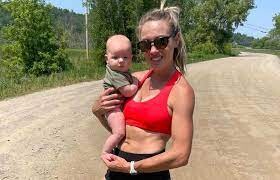
Two-time world indoor silver medalist Axumawit Embaye is also in the line-up, alongside 2022 US 1500m champion Sinclaire Johnson, British 1500m champion Katie Snowden, 2023 Wanamaker Mile runner-up Josette Andrews, Australian record-holder Jessica Hull, Olympic finalist Marta Perez, and two-time NCAA champion Sage Hurta-Klecker.
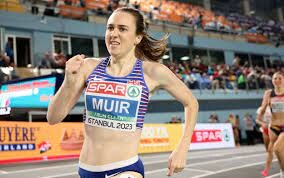
Olympic 1500m silver medalist Laura Muir made her Wanamaker Mile debut last year, winning in 4:20.15. The 2022 world bronze medalist holds the British record for the distance outdoors with the 4:15.24 she clocked last year.
Other top athletes already confirmed to compete include Yaroslava Mahuchikh, Danielle Williams, Nia Ali, Andre De Grasse, Josh Kerr, Keni Harrison, Chris Nilsen, KC Lightfoot, Yared Nuguse, Alicia Monson, Grant Fisher and Christian Coleman.
by World Athletics
Login to leave a comment
NYRR Millrose Games
The Pinnacle of Indoor Track & Field The NYRR Millrose Games, first held in 1908, remains the premier indoor track and field competition in the United States. The 2025 edition will once again bring the world’s top professional, collegiate, and high school athletes to New York City for a day of thrilling competition. Hosted at the New Balance Track &...
more...Shocker! Sifan Hassan falls near the finish, Ethiopians sweep the 10,000 meters at the World Championships
The World Athletics Championships is the most important meet of the year for most elite track and field athletes. From August 19 to August 27, the best from across the globe will compete for medals and titles during a thrilling nine days in Budapest, Hungary.
Sifan Hassan had gold in her sights. Hours after winning her heat in the 1500 meters, she’d moved from eighth place to the lead in the final two laps of the women’s 10,000 meters—the first final of the meet.
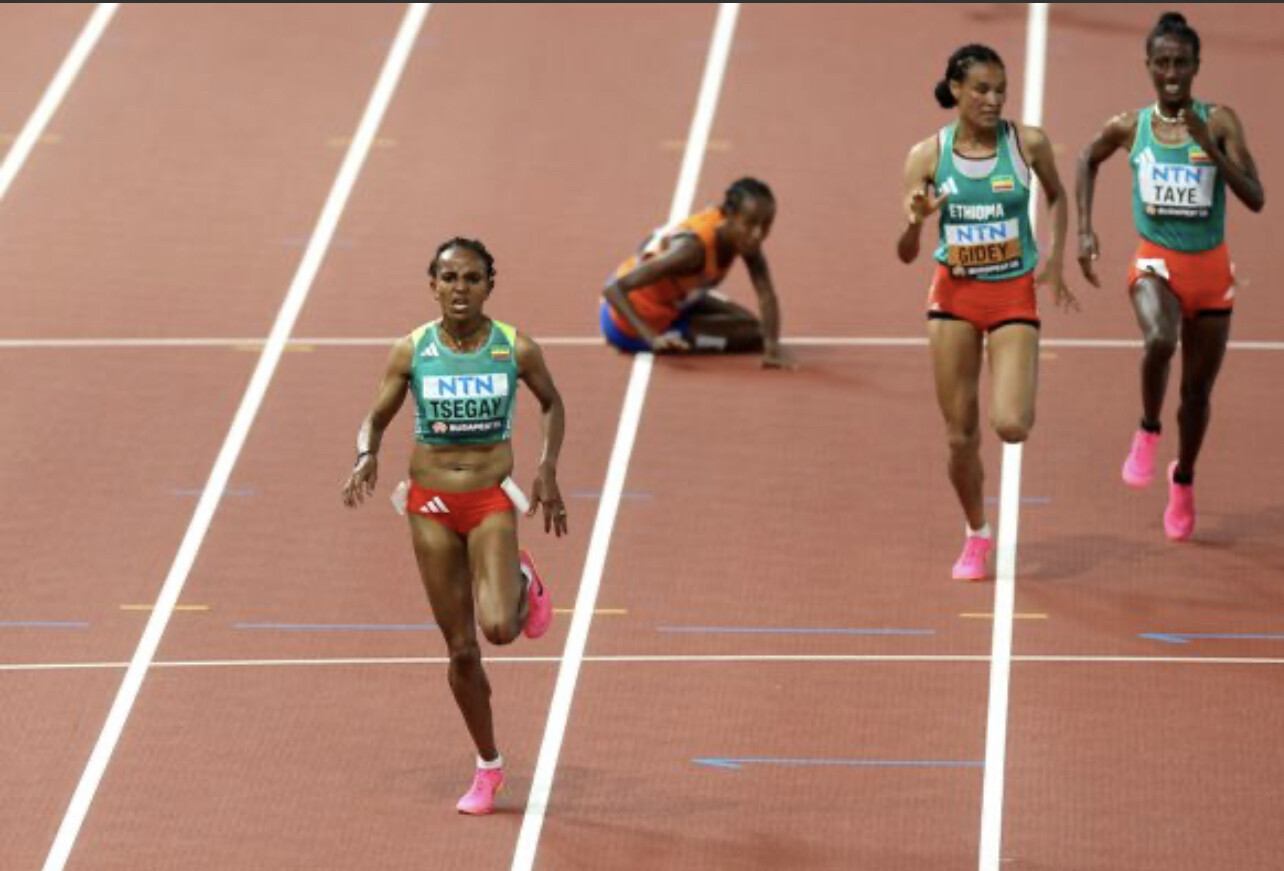
It was a head-to-head battle that many may have predicted, but the closing drama came as a shock.
Gudaf Tsegay and Sifan Hassan – shoulder to shoulder with their arms pumping and their eyes fixed on the finish – both chasing 10,000m gold in a thrilling first track final of the World Athletics Championships Budapest 23.
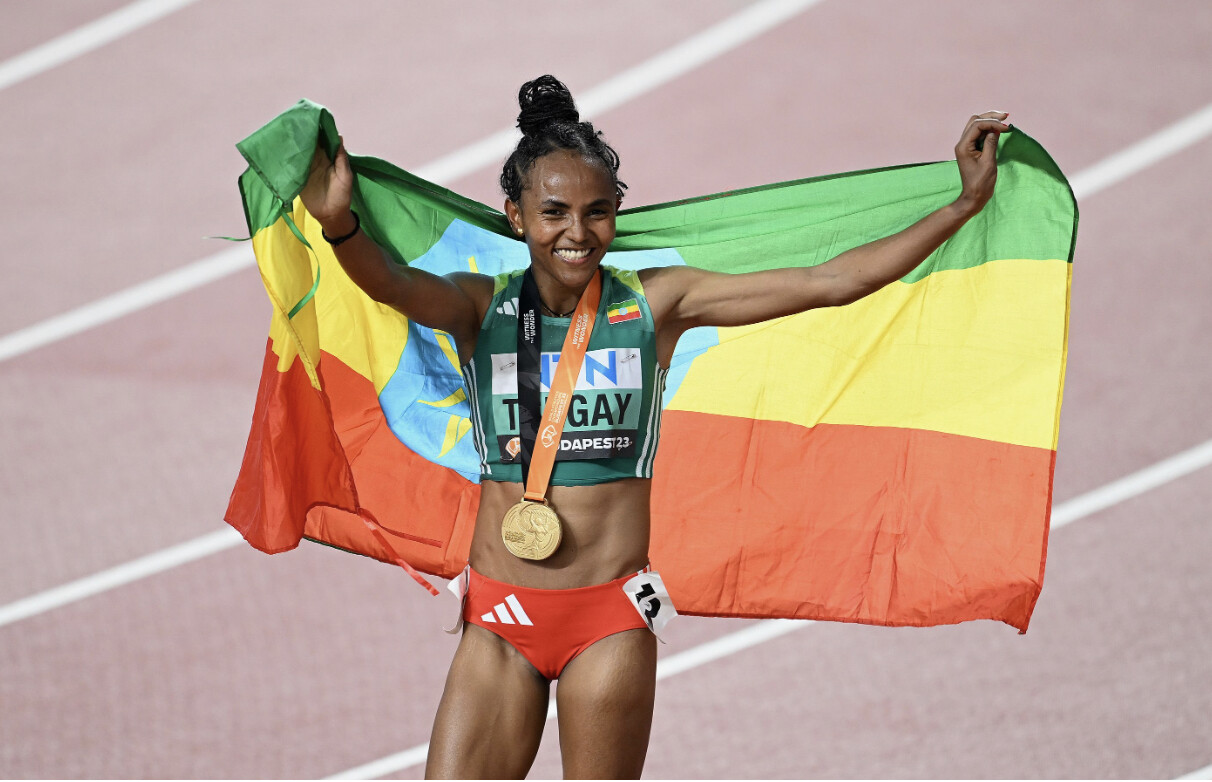
Two of the fastest ever women over 25 laps of the track, locked in a fierce fight. Until suddenly, they weren’t. Just metres from the finish line, after both had used their 1500m speed to superb effect, Hassan fell – the Olympic champion's dreams of another global medal treble crashing down with her.
As Hassan stumbled, Tsegay remained resolute. The world 5000m champion from Oregon last year gritted her teeth and ended up adding a maiden 10,000m title to her burgeoning global medal haul, clocking 31:27.18 to lead an Ethiopian medal sweep ahead of world record-holder and defending champion Letesenbet Gidey, and world indoor medallist Ejgayehu Taye.
At first, Hassan played it safe. Sticking to the back of the pack as the race set out at a conservative pace, she covered the first 400m in 87 seconds, four seconds back at the end of a line of athletes snaking around the track.
As they ticked the laps off, the Dutch star moved up a few places – still sitting back off the leaders but close enough to cover any moves, if necessary. Tsegay and then Gidey took a turn at the front, as the race continued to build.
Then Hassan pounced. Gidey led at the bell – a stride ahead of Tsegay, with USA’s Alicia Monson just behind them. Hassan was fourth at that stage, having passed Taye plus Kenya’s Grace Loibach Nawowuna and Agnes Jebet Ngetich.
Unleashing the sort of pace that helped her to the world 1500m title in 2019, the 30-year-old blazed past her rivals along the back straight and led into the final bend. She was holding off a chasing Tsegay and seemed strong.
But Tsegay – the world indoor 1500m record-holder – wasn’t giving up. She drew level with Hassan on the home straight and they jostled for position. As Hassan stretched, she lost her rhythm and fell to the track, only able to watch as gold ran away.
So did silver, and bronze. After crossing the finish line in 31:28.16 to add 10,000m silver to the gold she won in Oregon, Gidey went back to help Hassan.
Taye ran 31:28.31 to complete the third medal sweep for her nation in the event at the World Championships, while Kenya’s Irine Jepchumba Kimais finished fourth, Monson fifth and Ngetich sixth.
Hassan wound up finishing in 11th place in a time of 31:53.35.
American Alicia Monson ran a strong race, looking as if she was in position to contend for a medal before Hassan’s last surge. She finished fifth in 31:32.29. Elise Cranny was 12th in 31:57.51, her best time this season, and Natosha Rogers was 14th in 32:08.05.
by World Athletics (NBC sports Video)
Login to leave a comment
World Athletics Championships Budapest 23
From August 19-27, 2023, Budapest will host the world's third largest sporting event, the World Athletics Championships. It is the largest sporting event in the history of Hungary, attended by athletes from more than 200 countries, whose news will reach more than one billion people. Athletics is the foundation of all sports. It represents strength, speed, dexterity and endurance, the...
more...2023 US Outdoor Track and Field Championships preview from Chris Chavez
Last night was the deadline for athletes to declare their event for the 2023 U.S. Outdoor Track and Field Championships, which will take place in Eugene from July 6-9. At USAs, athletes are allowed to enter multiple events and then make a decision about which event(s) they wish to contest once entries are in, which allows those who’ve achieved multiple qualifiers to be strategic about where they want to concentrate their efforts. The top three in each event who meet the qualifying standards for the World Athletics Championships will go on to represent the United States in Budapest in August.
Reigning World champions have a “bye” to the next year’s Worlds, which means the country they represent gets to send four athletes, not three. Similarly, reigning Diamond League and World Athletics Continental Tour champs earn a bye, but if there is both a World and other champion in the same event, their country still only gets to send one extra athlete.
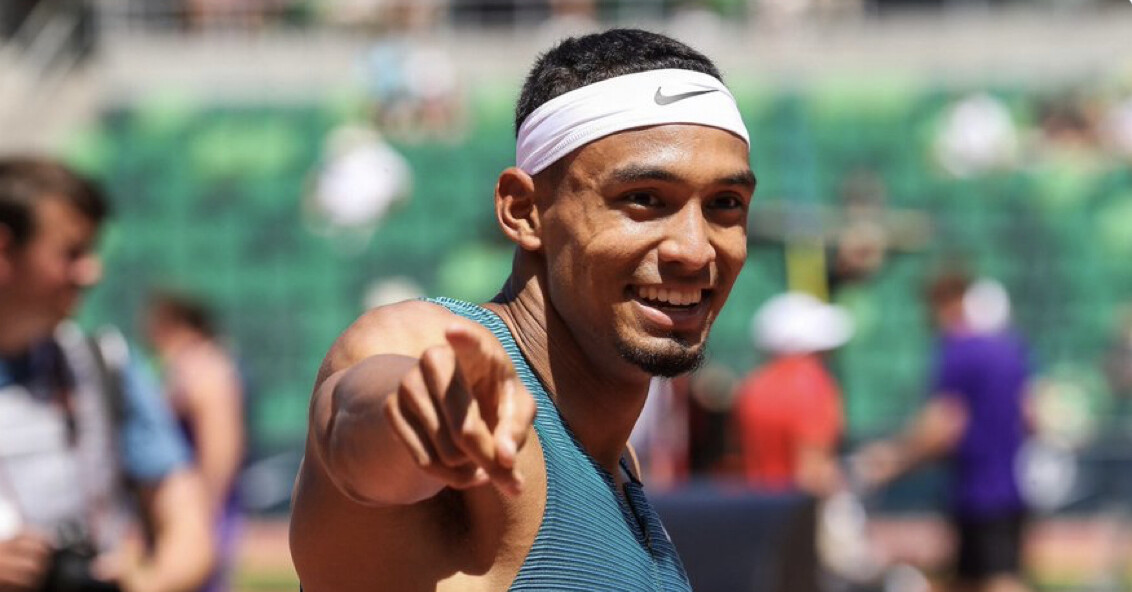
These complex rules lead many American World champions to make interesting choices about what events they wish to contest at USAs and how hard they want to push while still in the middle of the championship season.
MEN’S SPRINTS
– 100m world champion Fred Kerley has the bye to the world championships and will only run the 200m. Last year, he qualified for the World Championships in the 200m with a third place finish behind Noah Lyles and Erriyon Knighton. He injured his quad in the semifinal of the 200m and was unable to run the 4x100m relay for Team USA. Kerley has a season’s best of 19.92 from his win at the Doha Diamond League.
– 200m world champion Noah Lyles has the bye to the world championships and will only run the 100m. He ran a season's best of 9.95 in his outdoor opener in April. The last time he ran the 100m at a U.S. Championship, he finished seventh at the 2021 U.S. Olympic Trials final.
– 400m world champion Michael Norman is declared for the 100m and 200m at the U.S. Championships. He ran a wind-aided 10.02 (+3.0m/s wind) at the Mt. SAC Relays in April. He has not raced since a last place finish in the 200m at the Doha Diamond League in 20.65 on May 5.
WOMEN’S SPRINTS
– Sha’Carri Richardson is running the 100m and 200m. She is looking to qualify for her first World championship team. Her season’s best of 10.76 from her victory at the Doha Diamond League is the second-fastest performance in the world this year. Her season’s best of 22.07 from the Kip Keino Classic at altitude in Nairobi is No. 4 on the world list.
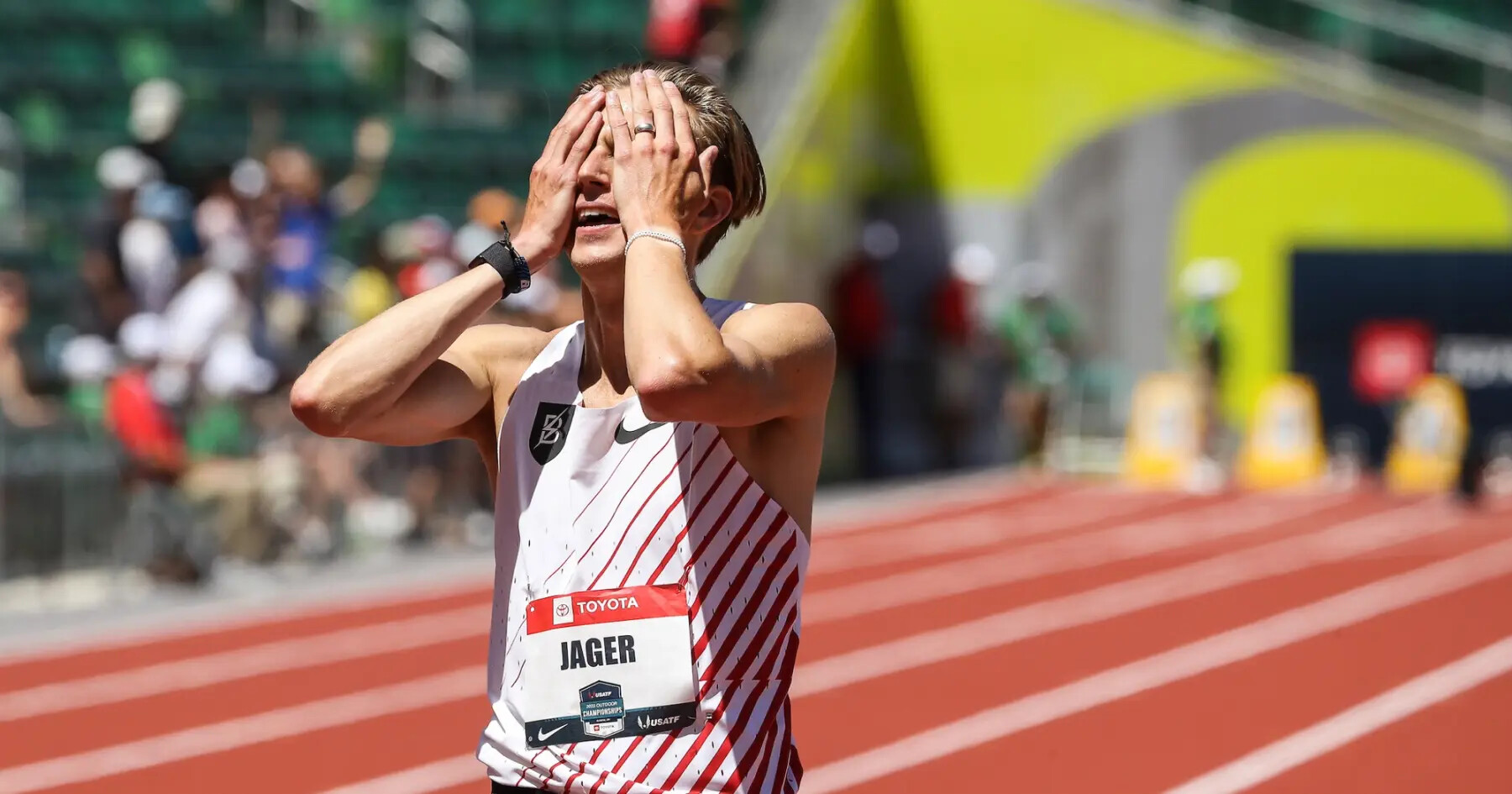
Only Gabby Thomas’ 22.05 from the Paris Diamond League is faster this year by an American woman. Richardson, the 2019 NCAA champion, attempted the double at USAs in both 2019 and 2022, where her highest finish was 8th in the 100m in 2019. She has yet to make a U.S. final in the 200m.
– Reigning U.S. champion Abby Steiner is only running the 200m despite qualifying in both the 100m and the 400m as well. She just ran her season’s best of 22.19 to win the NYC Grand Prix.
– As previously announced, 400m hurdles Olympic champion, World champion and world record holder Sydney McLaughlin-Levrone is running the flat 400m. She plans to make a decision after the U.S. Championships whether she will run the flat 400m (if she qualifies) or defend her 400m hurdles title in Budapest.
– NCAA record holder Britton Wilson, who ran 49.14 to become No. 4 on the U.S. all-time list, will only run the 400m and not the 400m hurdles. She hurdled at last year’s World championships and participated in the 4x400m relay.
MEN’S DISTANCE
– This year’s men’s steeplechase team should have a new look. 2016 Olympic silver medalist Evan Jager is not entered in the steeplechase. He has raced just once this outdoor season. Hillary Bor, the reigning U.S. champion who also owns the fastest steeplechase time by an American this year in 8:11.28, broke his foot earlier this spring and will miss the U.S. Championships. This is the first U.S. team he has missed since 2015. The top returner is Benard Keter, who made the Olympic team in 2021 and the World team in 2022, but he is only the fifth-fastest entrant by seed time.
– For the first time, 2021 U.S. 5000m champPaul Chelimo is entered in both the 5000m and the 10,000m. Chelimo, the 3x global medalist at 5000m, has typically only focused on the shorter event, but after his 27:12.73 performance at the Night of the 10,000m PBs in the U.K. earlier this season, he has decided to contest both events. He’s seeded No. 4 by qualifying time in both events behind Grant Fisher, Woody Kincaid, and Joe Klecker (all also double-entered).
WOMEN’S DISTANCE
– 800m Olympic and world champion Athing Mu entered the 1500m, as previously announced with coach Bobby Kersee. She has the bye to the world championships in the 800m. Her personal best of 4:16.06 is well outside the automatic standard of 4:05.00 and was achieved outside the qualifying window for the championships, but USATF rules allow for significant discretion in accepting entries from the Sports Committee chair.
– Josette Norris and On Athletics Club coach Dathan Ritzenhein have decided to focus solely on the 5000m. Norris ran 14:43.36 at Sound Running’s Track Fest in early May. That’s the second-fastest time by an American woman on the year behind her teammate and training partner Alicia Monson’s 14:34.88 at the Paris Diamond League. Monson is entered in both the 5000m and 10,000m after choosing to only contest the 10,000m last year.
– NC State’s NCAA record holder Katelyn Tuohy will only run the 5000m. Tuohy qualified for NCAAs in both the 1500m and the 5000m but ended up only running the 1500m after an uncharacteristically disappointing performance in the final.
– The Bowerman Track Club’s Elise Cranny has declared for the 1500m, 5000m and the 10,000m. The first round of the women’s 1500m is 19 minutes before the final of the 10,000m on Day 1 of the competition, so Cranny will likely scratch one or more events at a later point.
by Chris Chavez (Citius magazine)
Login to leave a comment
USATF Outdoor Championships
With an eye toward continuing the historic athletic success of 2022, USATF is pleased to announce competitive opportunities for its athletes to secure qualifying marks and prize money, including a new Grand Prix series, as they prepare for the 2023 World Athletics Championships in Budapest, Hungary.As announced a few months ago, the 2023 Indoor Championships in Nanjing, China have been...
more...3-time champion Molly Huddle is ready for 2023 NYC Half
The United Airlines NYC Half came into Molly Huddle‘s life in 2014 and it was one of the key turning points in the now 38 year-old’s storied career. Never a fan of cross country or indoor track, the 28-time national champion liked to de-camp from her Providence, R.I., home in the winter to put in her pre-season base miles in the warmth of Arizona. The NYC Half, with its mid-March date, was the perfect race to close-out her winter training block. Her long-time coach Ray Treacy, whom Huddle affectionately calls “The Guru,” gave his blessing and she signed-up for the 2014 race. It would be her first-ever half-marathon.
With the temperature right at the freezing mark, Huddle ran the entire race with the leaders. She went through the first 10-K in 33:01, and the second in a much faster 32:21 as the pace heated up. Although too far behind eventual winner Sally Kipyego (1:08:31), she finished a close third to eventual 2014 Boston Marathon champion Buzunesh Deba, 1:08:59 to 1:09:04.
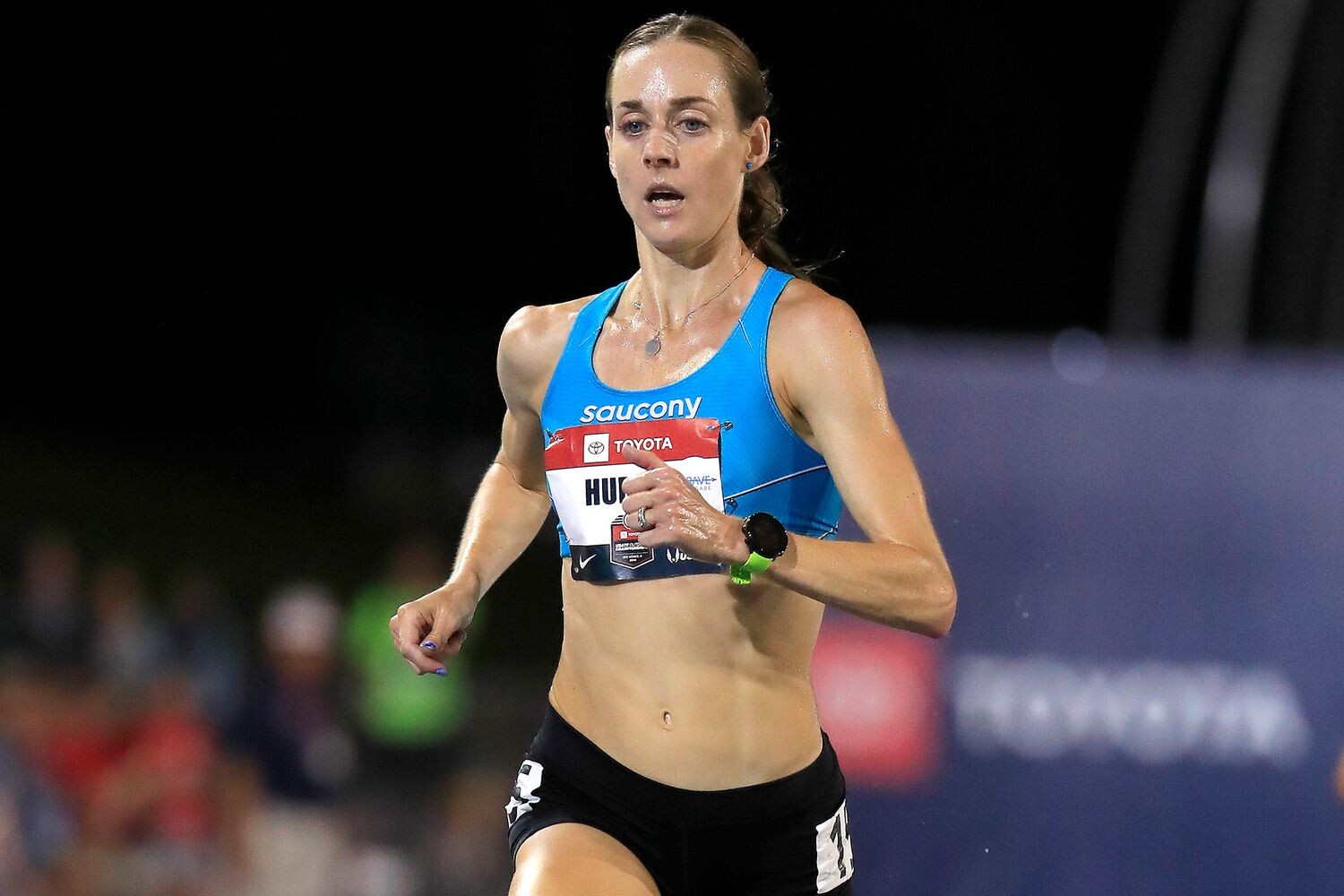
“It was good,” a shivering Huddle told Race Results Weekly’s Chris Lotsbom that day. “I think I stuck my nose in it in the beginning and the distance got to me a little in the end, but it was definitely a fun experience. I definitely want to do another one.”
The rest, shall we say, is history.
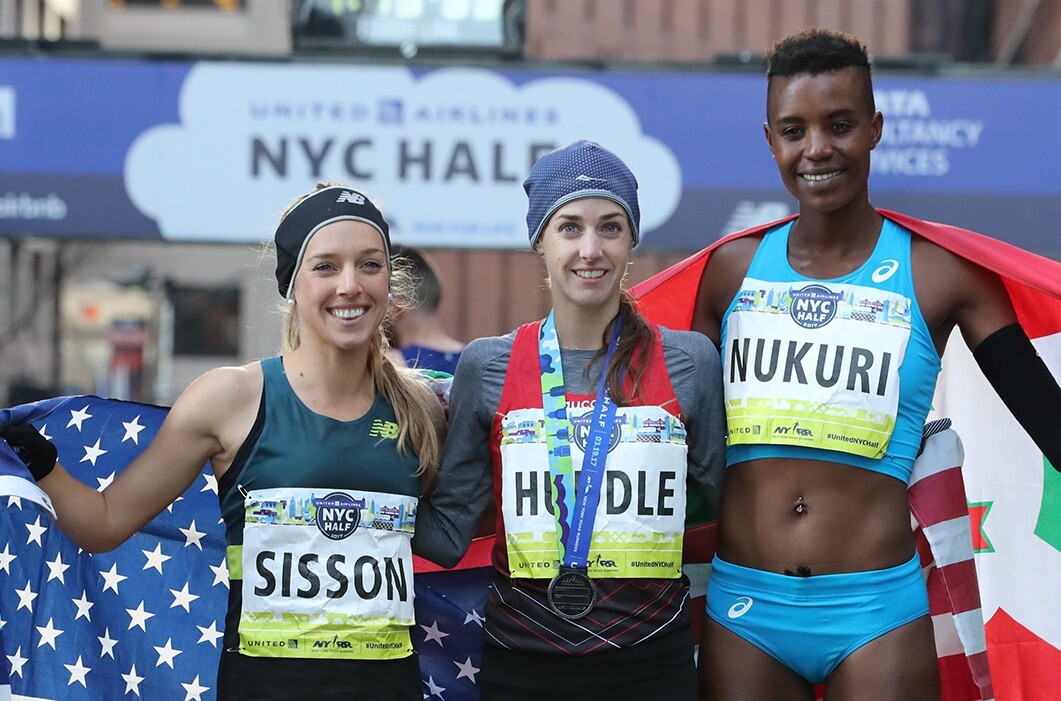
For the next three years Huddle would repeat the same winter program, training in Arizona then coming to New York for the NYC Half before starting her track season*. She won in 2015, 2016 and 2017, and in the 2016 race she set the still-standing USATF record for an all-women’s race: 1:07:41. During her reign at the top, she beat top athletes like Sally Kipyego, Caroline Rotich, Des Linden, Aliphine Tuliamuk, Buzunesh Deba, Emily Sisson, Edna Kiplagat, Diane Nukuri, and Amy Cragg. She also lowered her 10,000m personal best from 31:28.66 to an American record 30:13.17, a mark which would stand for more than six years until Alicia Monson broke it just 11 days ago at The Ten in San Juan Capistrano, Calif. She also collected $65,500 in prize money from the event which is organized by New York Road Runners.
Huddle returns to the NYC Half for the first time in six years on Sunday, but she’s no longer focused on winning. The race comes about 11 months after she, and husband Kurt Benninger, had their first child, daughter Josephine Valerie Benninger, whom Huddle calls “JoJo.” Speaking to Race Results Weekly at a press event yesterday in Times Square, she reflected on her history with the race.
“The last time I did the Half was 2017, I think, so a long time,” said Huddle, wearing a warm hat and jacket on a cold, late-winter day. “Great to be back. Great to be running again seriously after having the baby in April. So, this will be a good test.”
Huddle has been slowly building her fitness since giving birth to Josephine. She first returned to racing last August at the low-key Bobby Doyle Summer Classic 5 Mile in Narragansett, R.I., –very close to her home– clocking 29:17. Since then she has run in a series of local races in New England –a pair of 10-K’s, a 5-K cross country, and a half-marathon– to regain her racing chops.
Then, in January of this year, she ran the super-competitive Aramco Houston Half-Marathon and clocked a very good 1:10:01, a mark which qualified her for the 2024 USA Olympic Team Trials Marathon. She went back to training, and the NYC Half should give her a good reading on her progress.
“I’m really happy to fit it back in the schedule,” said Huddle, who is still breastfeeding and will be pumping while she is in New York (Kurt is with Josephine at home in Providence). “I feel like I’m having more baseline workouts now, less of a building phase and more back to normal. I’ve had a few little injury problems last month, but I’m coming around.”
A well-traveled athlete, Huddle is sticking close to home for her races now. New York is a three and one-half hour drive (or train ride) from Providence.
“I love racing within a drive distance of home now because of the baby, and this is an easier race for me to get to,” Huddle said. “So that’s good.”
Sunday’s race has yet another purpose for Huddle. It will kick-off her training for her next marathon, a distance that she hasn’t taken on since the 2020 Olympic Trials in Atlanta when she was forced to drop out with an injury. Although she wasn’t at liberty to reveal which race it will be, she said that the timing of the NYC Half was perfect, just like it always was.
“So, I’m really focusing more on the roads now; it fits in really well with that plan now,” Huddle said. She continued: “This is going to kick off a marathon build-up for me, so this will be a really good race to fit into my marathon block as we go forward the next two months.”
by David Monti
Login to leave a comment
United Airlines NYC Half-Marathon
The United Airlines NYC Half takes runners from around the city and the globe on a 13.1-mile tour of NYC. Led by a talent-packed roster of American and international elites, runners will stop traffic in the Big Apple this March! Runners will begin their journey on Prospect Park’s Center Drive before taking the race onto Brooklyn’s streets. For the third...
more...Eilish McColgan (30:00.87) and Alicia Monson (30:03.82) Break National Records At The TEN
The British and American records in the women’s 10,000 meters both went down late Saturday night in California as Eilish McColgan outdueled Alicia Monson over the final lap of The TEN in San Juan Capistrano. McColgan, the Commonwealth Games champion at 10,000 who is building up for her marathon debut in London on April 23, was only added to the field this week but felt confident in her fitness after five weeks of altitude training in Colorado. It proved an inspired decision as she ran 30:00.87 to narrowly break Paula Radcliffe’s British record of 30:01.09 set in August 2002.
A few seconds behind McColgan, Alicia Monson nabbed her second American record of 2023, running 30:03.82 to smash the previous record of 30:13.17 set by Molly Huddle in the 2016 Olympic final in Rio. Three weeks ago, Monson ran 8:25.05 at the Millrose Games to break the American indoor (and overall) record for 3,000 meters.
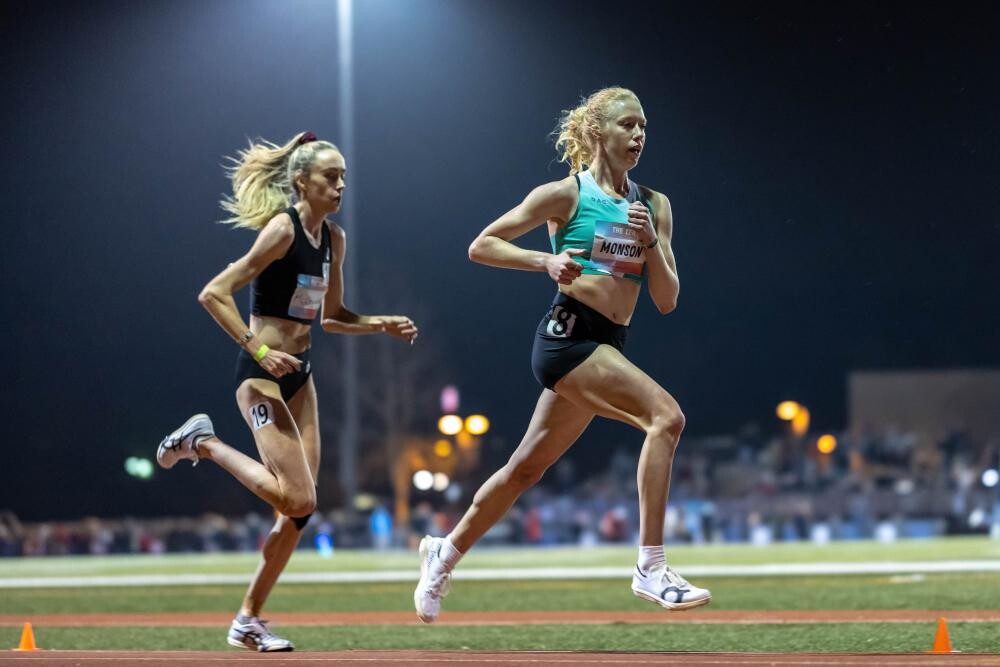
Both women were also safely under the 30:40 standard for the 2023 World Championships and 2024 Olympics on a good night for running fast (50-degree temps, still conditions).
Monson and her camp had billed the race as an American record attempt and they enlisted her On Athletics Club teammate Josette Andrews (a 14:51 5k runner) to handle pacing duties, along with Eleanor Fulton. When Andrews dropped out at 5k (15:09 for McColgan and Monson), they were actually a few seconds behind AR pace, but Monson took over and righted the ship, dropping the pace from 73-second laps to 72’s, then 71’s. By the bell, which Monson reached in the lead thanks to a 70.45 penultimate lap, the question was not whether the AR would go down, but whether either woman would break 30:00 – and of course, who would win the race?

McColgan, who had clung faithfully to Monson throughout the race, finally went wide on the backstraight of the bell lap and passed Monson, and the American had no response as McColgan powered to victory with a 64.87 last 400m. Monson could not match that speed, closing out her effort in 67.99, and though she did not win, her American record was very well-deserved after so much grinding from the front.
No one else earned the World/Olympic standard, but a trio of Americans earned big personal bests in 3rd-4th-5th. Running just her second 10k, 2021 NCAA 5k champ Elly Henes won the battle for 3rd in 30:48.26 to edge 2022 Worlds team member Natosha Rogers (30:48.69) as both women moved ahead of Emily Sisson (30:49.57) and Deena Kastor (30:50.32) into 6th and 7th on the all-time US list. Rogers’ Puma Elite teammate Fiona O’Keeffe also got a pb in 5th, running 30:55.05 to become the 11th American woman to go sub-31.
Results (Analysis at bottom)
1 Eilish McColgan Asics 30:00.86 #$WRLD
2 Alicia Monson On Athletics Club 30:03.82 #$WRLD
3 Elly Henes Adidas 30:48.26
4 Natosha Rogers Puma Elite 30:48.69
5 Fiona O’Keeffe Puma Elite 30:55.05
6 Laura Galvan Hoka 31:04.08
7 Dominique Scott Adidas 31:14.00
8 Carrie Verdon TEAM Boulder 31:52.94
9 Susanna Sullivan unattached 31:55.80
10 Amy Davis-Green Hansons-Brooks ODP 32:10.59
11 Katie Izzo Adidas 32:22.47
12 Jeralyn Poe Tracksmith 32:39.10
Men’s race
The men’s race came down to a battle of the last two US 10,000-meter champions: Woody Kincaid and Joe Klecker. Just as he did five weeks ago over 5,000 meters in Boston, Kincaid earned the victory, though he made his move slightly earlier this time around, taking the lead with 900m to run and holding off Klecker on the last lap, closing in 55.96 to Klecker’s 56.92 as Kincaid ran 27:06.37 to Klecker’s 27:07.57. Both men ran personal bests (they now sit #5 and #7 on the all-time US list) and both hit the 2023 World Championship standard of 27:10, but neither was able to earn the Olympic standard of 27:00.
Klecker and Kincaid both went in with the aim of hitting the Olympic standard and joining Grant Fisher, Galen Rupp, and Chris Solinsky as the only American members of the sub-27:00 club. Klecker’s OAC teammate Ollie Hoare was the main pacemaker (though there were several: Ehab El-Sandali, Amon Kemboi, and Athanas Kioko all helped out) and he took them through 5k in 13:35, at which point British Olympian Sam Atkin, running with the lead pack, surprisingly dropped out.
When Hoare stepped off after covering 6400m in 17:23.90 (27:11 pace), sub-27:00 was within striking distance. But Klecker, despite working hard, could not increase the pace, and Kincaid showed no interest in sharing the lead despite Klecker motioning for him to do so.
By a mile to go, Klecker and Kincaid had dropped everyone else, and Kincaid, sensing the World standard slipping away, hit the front with 900 to go. Klecker stuck right with him, however, and it wasn’t until the final turn that Kincaid was able to gain real separation as both men closed well to get under the World standard – though not the Olympic standard.
Kioko, who stayed in the race, was the best of the rest, running 27:23.84 for 3rd, holding off Conner Mantz, who ran 27:25.30 in the midst of his Boston Marathon buildup (just .07 off his personal best from this meet last year).
Results (analysis below results) *Lap by lap splits
1 Woody Kincaid Nike 27:06.37 WRLD
2 Joe Klecker On Athletics Club 27:07.57 WRLD
3 Athanas Kioko pacer 27:23.84
4 Connor Mantz Nike 27:25.30
5 Jonas Raess On Athletics Club 27:26.40
6 Ren Tazawa Komazawa Univ 27:28.04
7 Nils Voigt Puma 27:30.01
8 Sam Chelagna US Army WCAP 27:38.02
9 Luis Grijalva Hoka 27:42.56
10 Alex Masai Hoka NAZ Elite 27:42.80
11 Wesley Kiptoo Hoka NAZ Elite 27:45.81
12 Ben Flanagan On Running 27:49.67
13 Kanta Shimizu Subaru 27:51.23
14 Benjamin Eidenschink unattached 27:51.74
15 Tatsuhiko Ito Honda 27:54.64
16 Aaron Bienenfeld unattached 27:55.96
17 Ahmed Muhumed unattached 27:56.99
18 Frank Lara Altra/Roots Running Project 28:00.75
19 Emmanuel Bor unattached 28:01.09
20 Alberto Gonzalez Mindez Guatemala 28:30.63
21 Zach Panning Hansons-Brooks ODP 28:35.52
Login to leave a comment
The Ten
The world's fastest 10,000m races each year have taken place in a sleepy little coastal town in southern California. More national records were broken in 2022 than any other race on the planet as the best in the western hemisphere launched into rarified zones of time and space. The best return to San Juan Capistrano this year to cap off...
more...Nuguse breaks North American indoor mile record at Millrose Games
Yared Nuguse ran the second-fastest indoor mile in history as three national records fell or were equalled in a thrilling men’s Wanamaker Mile at the Millrose Games. Alicia Monson also set an area record in the 3000m, while Abby Steiner claimed a US record in the 300m at the World Athletics Indoor Tour Gold meeting in New York on Saturday (11).
In the infield, Ryan Crouser demonstrated his effective new shot put technique and Katie Moon returned to her winning ways in the pole vault before a roaring crowd that also cheered runners in competitions from U8 through high school and college.
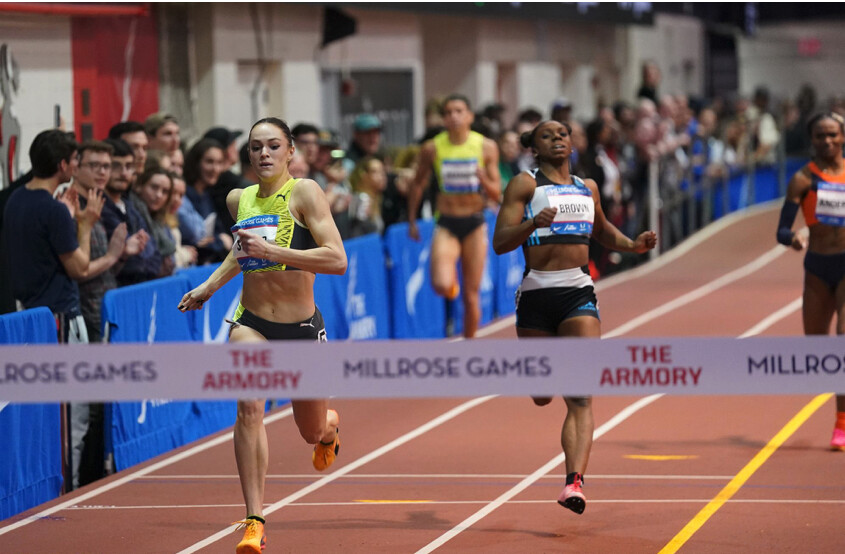
As always, the men’s Wanamaker mile culminated the meeting, and Nuguse ran away with the race in a world-leading 3:47.38 to claim his second area record of the season to go along with the 3000m.
Pace setter Erik Sowinski brought the runners through half way in 1:52.99 – just as he had been asked – with Nuguse and training mates Mario Garcia Romo and Olli Hoare in the lead group. But Nuguse turned on the jets and covered the final quarter of the race in 54.23, breaking the meeting record, facility record, and crushing Bernard Lagat’s 15-year-old US indoor record of 3:49.98.
“Running that race the way we did,” Nuguse said, “all three of us right there up for the first half of the race, I felt good knowing I had my closest guys having my back. And then that last part was give it everything I had and I was able to close with something crazy and get it.”
Great Britain’s Neil Gourley ran a PB of 3:49.46 to move to sixth on the world indoor all-time list, and Hoare equalled the Oceanian record with 3:50.83. New Zealand’s Sam Tanner ran a PB of 3:51.70, while Romo’s 3:51.79 was a Spanish record.
Yuguse has now eclipsed Hicham El Guerrouj on the all-time list; only Ethiopia’s Yomif Kejelcha has run faster, clocking 3:47.01 in 2019.
“I’m always excited to see what else I can do next,” Nuguse said. “There was definitely a nice confidence boost. After that 3000m (where he broke the US record), I was feeling pretty confident already, but to do this in the event that I love the most and the one that I feel like I’m going for at the world championships, that makes me feel even better.”
Laura Muir won the women’s Wanamaker Mile in 4:20.15, followed by Josette Andrews in 4.20.88. Muir, the Olympic silver medallist, led for most of the race, then Andrews hit the front with two laps to go. But the Briton kicked again on the final lap and went on to win comfortably.
Sprint sensations
World record-holder Christian Coleman took a bow after winning the men’s 60m in a season’s best of 6.47. “I feel like this is what I do best and I came to put on a show,” he said.
Noah Lyles was charged with a false start and ran the race under protest, clocking 6.53, although the time would not count. Lyles, the US record-holder in the 200m outdoors, admitted a little bit of movement, but said his feet never left the pad. “I got a time that I’m very happy to see,” Lyles said. “Everybody knows I’m just here to play around. I’m not a 60-metre runner, but if I can take some heads, I’m going to do it.”
Jamaica’s Travis Williams was awarded second place with a PB of 6.59, followed by Josephus Lyles, Noah’s younger brother, also with a PB of 6.59. Williams edged Lyles by .003.
Aleia Hobbs set an Armory record of 7.04 to win her fourth straight competition, having clocked a world-leading 6.98 at the end of January. Teenager Tamari Davis was second in a PB of 7.08, followed by Marybeth Sant-Price in 7.11, Mikiah Brisco at 7.13 and 17-year-old Shawnti Jackson in 7.16.
“I don’t think my start was as good as it’s been, but I was patient,” Hobbs said.
In only her second 300m, Steiner broke the US record, clocking 35.54 to easily go under Quanera Hayes’ time of 35.71 from 2017. Steiner held off a spirited challenge from Brittany Brown, who ran 36.13.
“It’s definitely one of those races I think you learn a little bit about every time you run it,” said Steiner, who set the collegiate record in her first race.
Although this 300m is her last of the season, she still wants the world record of 35.45, shared by Shaunae Miller-Uibo and Irina Privalova. “I clean up my start a little bit,” Steiner said, “and I think it’s there.”
World indoor champion Jereem Richards of Trinidad & Tobago ran a season’s best of 45.84 to avenge the previous week’s loss to Noah Williams, who clocked 46.20. In Boston, they were separated by only .004 as both ran 45.88.
Devynne Charlton won the women’s 60m hurdles in 7.91, while Tonea Marshall ran a season’s best of 7.94 and Sharika Nelvis clocked 7.96 to edge Olympic silver medallist Nia Ali in 7.97.
Login to leave a comment
NYRR Millrose Games
The Pinnacle of Indoor Track & Field The NYRR Millrose Games, first held in 1908, remains the premier indoor track and field competition in the United States. The 2025 edition will once again bring the world’s top professional, collegiate, and high school athletes to New York City for a day of thrilling competition. Hosted at the New Balance Track &...
more...Giants of track and field prepare for battle at Millrose Games
print showdowns, the world’s greatest shot putters and magnificent mile fields highlight the Millrose Games, this season’s fourth World Athletics Indoor Tour Gold meeting, in New York on Saturday (11).
Fresh off a PB and 60m win in Boston, world 200m champion Noah Lyles takes on 60m world record holder and defending Millrose champion Christian Coleman at The Armory, which boasts the nickname ‘The Fastest Track in the World’.
Shot putters Ryan Crouser and Joe Kovacs open their 2023 campaigns by resuming their fierce rivalry, essentially picking up where they left off last September in Switzerland. As the women’s shot returns to Millrose for the first time since 2003, the event couldn’t ask for a better field led by Chase Ealey, the world champion and world indoor silver medallist.
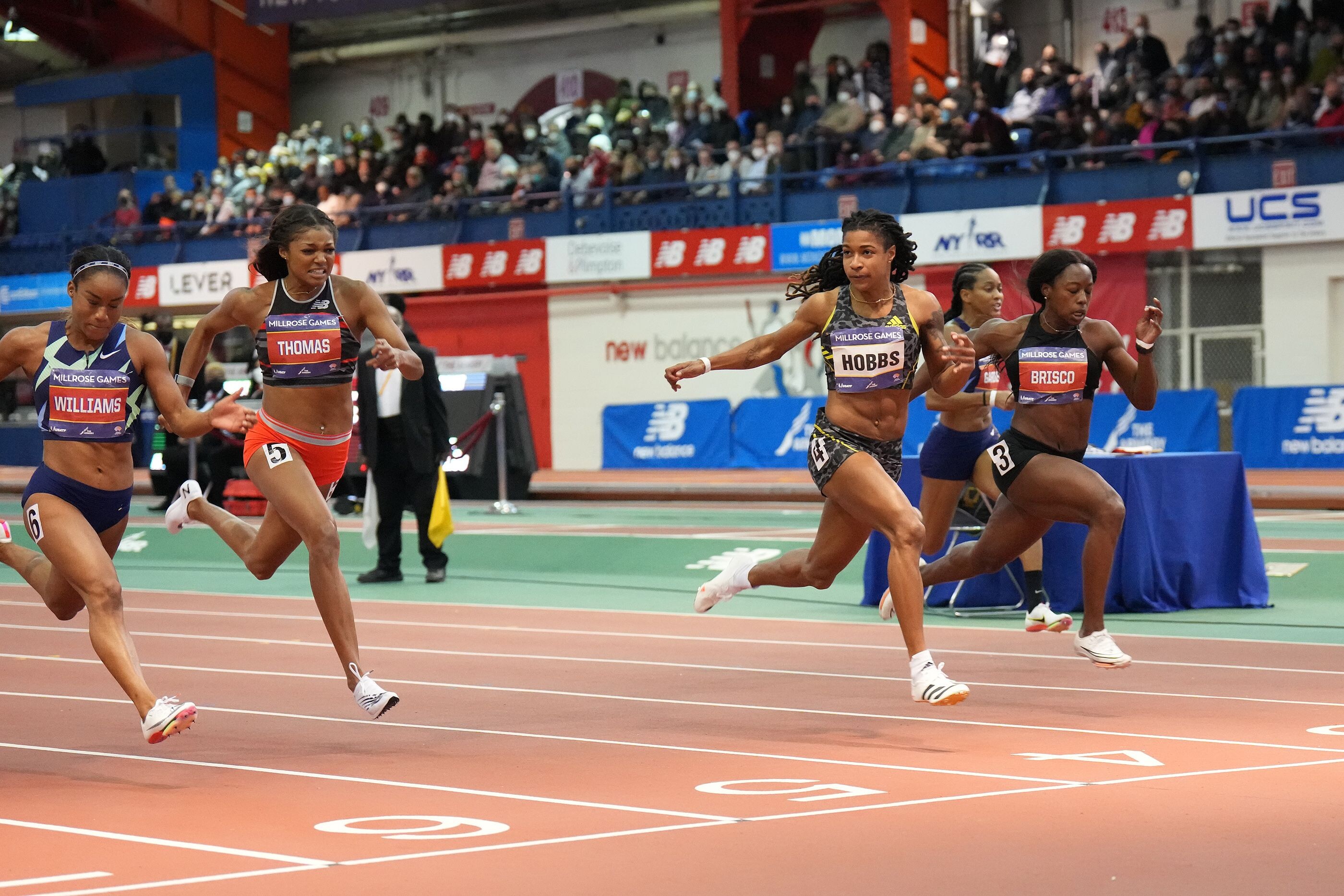
According to tradition, the Rudin Wanamaker Miles cap the storied meeting, which was founded in 1908. A national record might be needed to win the men’s race, but which country will take the honours? Defending champion Ollie Hoare of Australia, USA’s Yared Nuguse, Sam Tanner of New Zealand and Mario Garcia Romo of Spain are top contenders. Great Britain’s Olympic and world medallist Laura Muir is the favourite in the women’s mile, having already claimed a New York record on the road.
Straight down the middle
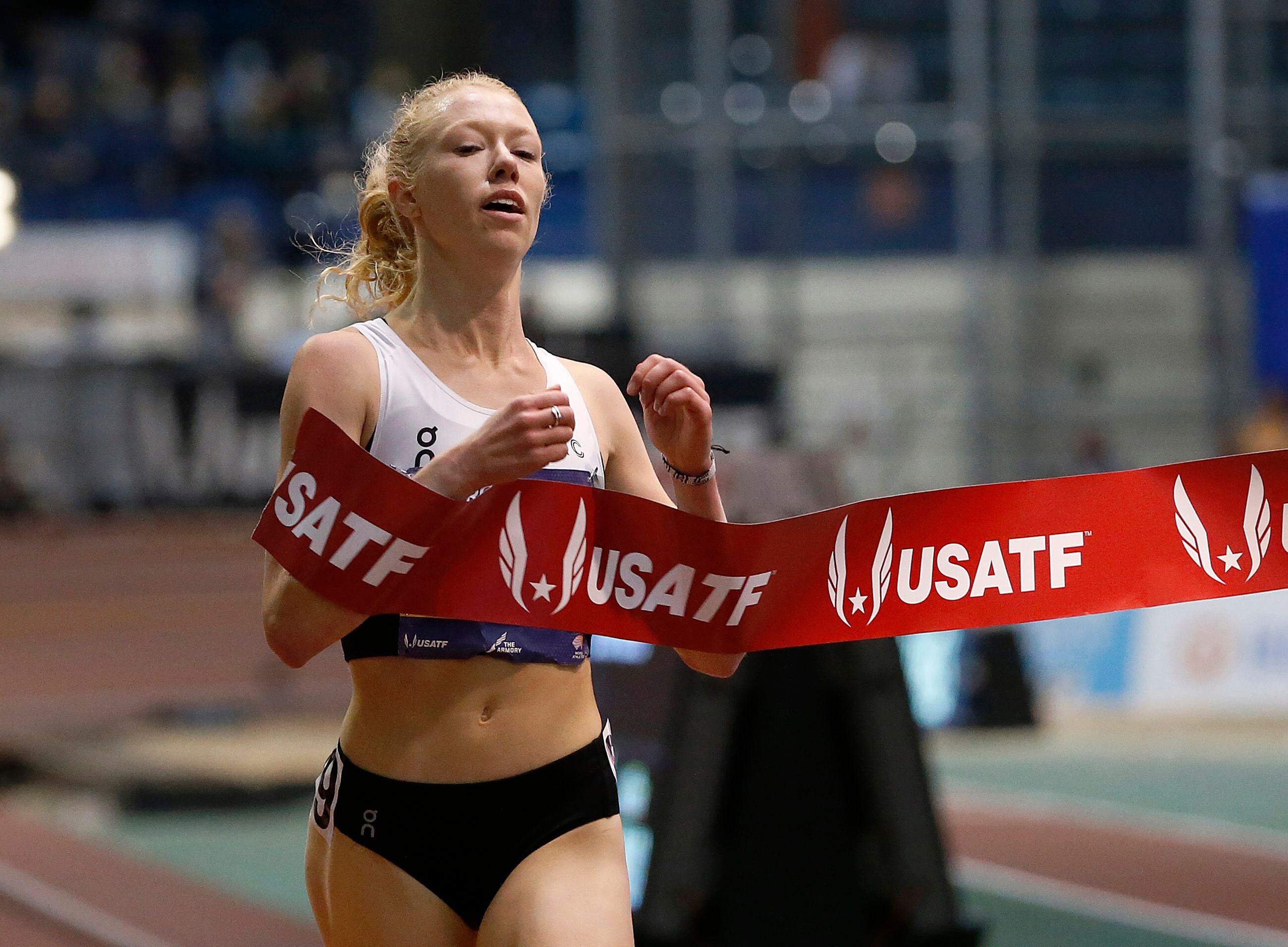
Although The Armory is far from the neon lights of Times Square, it’s still a hop, step and a jump from Broadway – and perhaps no athlete enjoys putting on a show more than Lyles.
At the New Balance Indoor Grand Prix Boston, he posted a PB of 6.51, edging Trayvon Bromell by .002. Coleman clocked 6.71 in Fayetteville two weeks ago to open his season, well off his world record of 6.34 set in 2018 when he was also world indoor champion. Lyles, the Olympic 200m bronze medallist, has been working on his start in a bid to double in the 100m and 200m at the World Athletics Championships later this year in Budapest.
Lyles will also attempt to avenge an early season loss to his younger brother Josephus in Florida. Ronnie Baker, the third-fastest 60m runner in history and 2018 world indoor bronze medallist, won this event in 2018 and 2020. Ackeem Blake of Jamaica, Miles Lewis, the Puerto Rican record-holder, and Kendal Williams, who defeated Lyles in Florida but lost to him in Boston, are also in the field.
Aleia Hobbs is seeking her second straight win in the women’s 60m after exploding to a meeting record 7.02 in Boston. She also owns the world-leading time of 6.98, run in Fayetteville in late January. In Boston, Hobbs held off world indoor silver medallist Mikiah Brisco and Celera Barnes, who get another chance to defeat her at Millrose.
Melissa Jefferson, who edged Hobbs in the 100m at last year’s USA Championships; world indoor bronze medallist Marybeth Sant-Price, and English Gardner are also in the field. Shawnti Jackson was third at Millrose last year, setting a national high school record of 7.18, and will look to improve both her placement and her time.
Olympic silver medallist Keni Harrison, the Millrose 60m hurdles winner in 2020, will take on 2019 world champion Nia Ali, heptathlete Anna Hall, and Olympians Anna Cockrell, Devynne Charlton and Cindy Sember.
Ring rivalry renewed
The road to Budapest begins for the top shot putters on the planet. World and Olympic champion Crouser will face Kovacs, a double outdoor world champion and two-time Olympic silver medallist.
While Crouser has won at Millrose three years in a row and holds both the indoor and outdoor world records, he knows his compatriot is always in the hunt to topple him. Kovacs set the world-leading mark in 2022 while moving to second on the all-time list and winning the Diamond league final in Zurich. At the season-ending meeting for both, Kovacs won at Bellinzona with a toss of 22.19m, with Crouser next at 22.00m. Tripp Piperi and Nick Ponzio of Italy round out the field.
Ealey had a dream season in 2022, building on her world indoor silver to take the world title in Oregon and then capture the Diamond League title. Compatriots Maggie Ewen, the 2021 Diamond League champion, and Jessica Woodard will challenge Ealey for the first Millrose crown in 20 years, along with Canada’s Commonwealth champion Sarah Mitton.
The women’s pole vault features Katie Moon (formerly Nageotte) and Katerina Stefanidi, the last two Olympic gold medallists. However, in their previous meeting, the Greek vaulter was third and the Tokyo champion placed fourth in Boston, with Bridget Williams and Gabriela Leon going 1-2. All four athletes will be on the runway at Millrose.
Steiner seeks another record
The rarely run 300m has become something of a specialty for USA’s Abby Steiner. She already holds the NCAA record and is targeting the national record of 35.71 in her first indoor season as a professional. Two weekends ago, Steiner raced to a 400m victory in Fayetteville in 50.59. The world record of 35.45 is shared by Irina Privalova and Shaunae Miller-Uibo, with the Bahamian clocking her winning time in 2018 at Millrose. Jenna Prandini, Steiner’s teammate on the victorious 4x100m relay in Oregon, and 2019 world 200m silver medallist Brittany Brown offer strong competition.
The men’s 400m could be another duel between USA’s Noah Williams and Trinidad & Tobago’s world indoor champion Jereem Richards. In Boston, both clocked 45.88, but Williams surged on the inside to win by .004. Michael Cherry, fourth in the 400m in Tokyo and an Olympic and world gold medallist at 4x400m, opens his season at Millrose, along with the fourth man in the field, Bryce Deadmon, another Olympic and world gold medallist on relays.
Going the distance
The great Paavo Nurmi raced at the Millrose Games nearly 100 years ago and the distance races never disappoint. Of course, the signature event is the Rudin Wanamaker Mile.
After recently setting a North American indoor record over 3000m, Yared Nuguse is in a New York state of mind to break another continental record: Bernard Lagat’s 3:49.89 in the indoor mile. Nuguse and training partners Hoare and Romo are hoping for a fast pace to propel them into the record books. Hoare set an Oceanian record of 3:50.83 in winning the 2022 Wanamaker Mile and is the Commonwealth 1500m champion. Other contenders include Tanner, a three-time New Zealand champion; Great Britain’s Neil Gourley, whose home straight sprint led to a world-leading 3:52.84 in Boston; 2022 US indoor 1500m champion Cole Hocker, Johnny Gregorek, Sam Prakel and Kenya’s Eliud Kipsang.
Muir had a US indoor race debut in Boston, clocking 8:40.34 in the 3000m, and now is dropping back down to more familiar territory. The world and Olympic medallist in the 1500m set a course record of 4:14.8 on the road in the Fifth Avenue Mile in 2022. At Millrose, the record is 4:16.85, set by Elle Purrier St Pierre in 2020, which is the third-fastest indoor mile in history after Gudaf Tsegay’s 4:16.16 in Torun. In a deep field, Muir will be challenged by training partner and Olympic 800m finalist Jemma Reekie, and US champion Sinclaire Johnson.
In the men’s 3000m, Geordie Beamish and Cooper Teare, who went 1-2 last year, return to the Armory track where they will try to fend off Josh Kerr, the Olympic 1500m bronze medallist; Joe Klecker, Guatemala’s Luis Grijalva and Nico Young.
Alicia Monson, defending Millrose champion in the women’s 3000m, faces national indoor 5000m record-holder Elise Cranny with Karissa Schweizer’s national indoor 3000m record of 8:25.70 in their sights. Monson set a Millrose Games and Armory record last year of 8:31.62 en route to a stellar outdoor season. Katelyn Tuohy recently set an NCAA mile record of 4:24.26 in a race won by Monson; she’s primed for another test against the pros. European champion and 2019 world bronze medallist Konstanze Klosterhalfen won the Wanamaker mile in 2019 and has the fastest 3000m time in the field, clocking 8:20.07 outdoors.
Streaks at stake for Wilson
In the 600m, world indoor 800m champion Ajee’ Wilson will attempt to extend some impressive winning streaks.
Since losing to Alysia Montano in the 600m at the 2013 Millrose Games, she has won 17 straight races at The Armory, including seven at Millrose. She also has won 15 straight races indoors, most recently the 800m in Boston with a time of 2:00.45. Wilson is the second-fastest woman in history in the 600m outdoors and could threaten Keely Hodgkinson’s newly minted world indoor best of 1:23.41. The fastest performer in the field this season Shamier Little, the 2015 world silver medallist in the 400m hurdles, who clocked 1:24.65.
The men’s 800m will be a rematch between world indoor silver medallist Noah Kibet, still just 18 years of age, and world indoor bronze medallist Bryce Hoppel, the defending Millrose champion. The loaded field includes his compatriots Clayton Murphy, the 2016 Olympic bronze medallist, world indoor finalist Isaiah Harris, Great Britain’s Kyle Langford, Mexico’s Tonatiu Lopez and Irish record-holder Mark English. Cade Flatt, the second-fastest US high school runner at this distance, is also in the field.
by World Athletics
Login to leave a comment
NYRR Millrose Games
The Pinnacle of Indoor Track & Field The NYRR Millrose Games, first held in 1908, remains the premier indoor track and field competition in the United States. The 2025 edition will once again bring the world’s top professional, collegiate, and high school athletes to New York City for a day of thrilling competition. Hosted at the New Balance Track &...
more...Bryce Hoppel and Noah Kibet head Millrose Games 800m
Bryce Hoppel and Noah Kibet will renew their rivalry at the Millrose Games, the fourth Gold level meeting in this season’s World Athletics Indoor Tour, in New York on February 11.
Hoppel is back to defend his Millrose Games 800m title, now as a world indoor bronze medallist. The 25-year-old, who won US titles indoors and outdoors in 2022, claimed the first global medal of his career in Belgrade, where he clocked 1:46.51 to finish third in a race won by Spain’s Mariano Garcia.
Second in that Belgrade final was Kibet, who at the age of 17 became the youngest ever track medallist in World Indoor Championships history. Now aged 18, the Kenyan seeks further indoor success in New York. Kibet ran 1:46.35 to win his world indoor medal and also claimed bronze at the World Athletics U20 Championships in Nairobi in 2021.
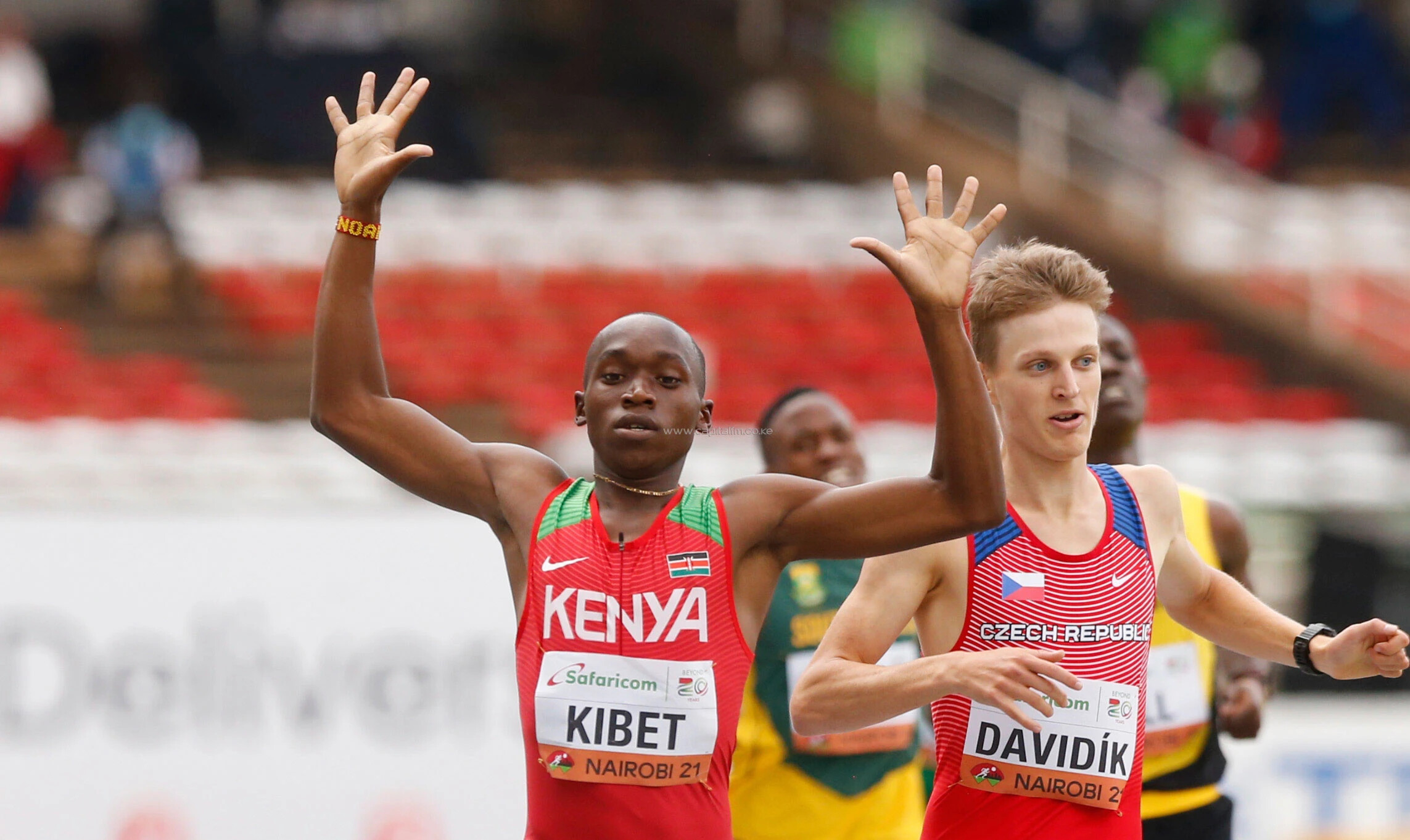
Looking to challenge them both will be Clayton Murphy, the 2016 Olympic bronze medallist and fourth-fastest US athlete in the history of the event. Murphy made a second Olympic final in Tokyo and is also a six-time national champion.
Lining up alongside them will be Isaiah Harris, who finished runner-up behind Hoppel at last year’s US Indoor Championships, and Kyle Langford, Britain’s 2018 Commonwealth silver medallist.
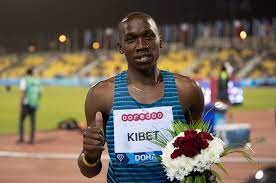
Also in the field are Mexican record-holder Jesus Tonatiu Lopez, Irish record-holder Mark English and USA’s Cade Flatt.
Already announced for the meeting are showdowns in the pole vault between Katie Moon, Sandi Morris and Katerina Stefanidi, and in the shot put between Ryan Crouser and Joe Kovacs. The women's 300m will feature Abby Steiner, Jenna Prandini and Brittany Brown, while the women’s 3000m will star Konstanze Klosterhalfen and Alicia Monson. Two-time world 200m champion Noah Lyles will race for more sprint success in the 60m and Laura Muir will race the Rudin Women’s Wanamaker Mile.
by World Athletics
Login to leave a comment
NYRR Millrose Games
The Pinnacle of Indoor Track & Field The NYRR Millrose Games, first held in 1908, remains the premier indoor track and field competition in the United States. The 2025 edition will once again bring the world’s top professional, collegiate, and high school athletes to New York City for a day of thrilling competition. Hosted at the New Balance Track &...
more...Laura Muir headlines Millrose Games Wanamaker Mile
Laura Muir will race the Rudin Women’s Wanamaker Mile at the Millrose Games when she makes her debut at the World Athletics Indoor Tour Gold meeting in New York on February 11.
Muir won her long-awaited Olympic silver medal in Tokyo, then backed it up with a bronze medal at the World Athletics Championships Oregon22. The 29-year-old is a six-time European gold medallist, two-time Diamond League champion and the 2022 Commonwealth Games champion in the 1500m. In total, she holds six British records indoors and outdoors.
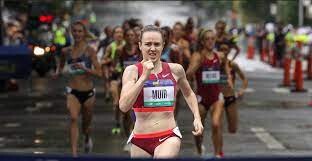
Muir blasted a 4:14.8 road mile last September at her most recent race in New York City, setting the course record for the 5th Avenue Mile. The Wanamaker Mile event record of 4:16.85 was set by Elinor Purrier St. Pierre in 2020, that mark also being the US record and second-fastest indoor mile in history.
“This will be my first time racing at the Millrose Games, so I am really excited as it has been a competition that I have wanted to do for a long time,” said Muir, who will also compete at the World Indoor Tour Gold meetings in Boston and Birmingham. “I have very fond memories of racing in the city, and I cannot wait to return and tackle the same distance indoors.”
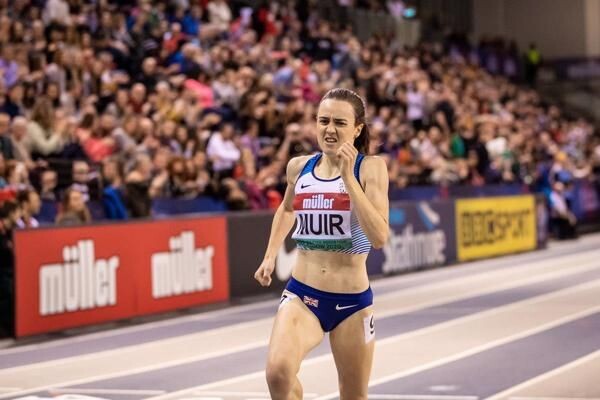
As always, the Wanamaker Mile will feature a deep field of talented runners hungry for an upset victory. Athletes to watch include US 1500m champion Sinclaire Johnson, British indoor mile record-holder Jemma Reekie, Josette Norris, Sage Hurta-Klecker, Nikki Hiltz, Medina Eisa, Allie Wilson, Lucia Stafford, Sintayehu Vissa, Marta Pen Freitas and Helen Schlachtenhaufen.
These are the latest stars announced for the Millrose Games, joining the showdowns in the pole vault between Katie Moon, Sandi Morris and Katerina Stefanidi, and in the shot put, featuring Ryan Crouser and Joe Kovacs. The women's 300m will feature Abby Steiner, Jenna Prandini and Brittany Brown, and the women’s 3000m will star Konstanze Klosterhalfen and Alicia Monson. In the men’s 60m, two-time world 200m champion Noah Lyles will race for more sprint success.
by World Athletics
Login to leave a comment
NYRR Millrose Games
The Pinnacle of Indoor Track & Field The NYRR Millrose Games, first held in 1908, remains the premier indoor track and field competition in the United States. The 2025 edition will once again bring the world’s top professional, collegiate, and high school athletes to New York City for a day of thrilling competition. Hosted at the New Balance Track &...
more...Christian Coleman, Noah Lyles and Ronnie Baker to Clash in Epic 60m at 2023 Millrose Games
The 115th Millrose Games, the world’s most historic indoor track & field event is only six weeks away. The Men’s 60m will surely be one of the most anticipated races of the entire meet, as Christian Coleman, Noah Lyles, and Ronnie Baker, three of the best sprinters in the world, will be taking their talents to the infield straightaway at the iconic New Balance Track & Field Center at The Armory.
The 115th Millrose Games is scheduled for Saturday, February 11th.
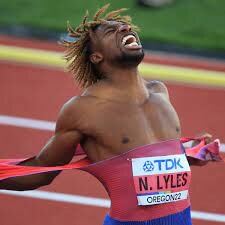
Coleman is the defending Millrose Games champion, World Record holder, and 2018 World Indoor Champion in the 60m. His lightning-quick starting ability makes him nearly unstoppable over this short distance, and he set the current world record of 6.34 seconds in 2018. Outdoors, he has two World Championship gold medals and three silver medals in the 100m and 4x100m relay.
Lyles is the reigning back-to-back World Champion, American Record holder, and the third-fastest man ever in the 200m. He also claimed the Olympic bronze medal in Tokyo. Lyles, the 2022 USATF Male Athlete of the Year, has been open about his pursuit of the world records held by Usain Bolt, and by dropping down in distance to challenge the short-sprint specialists, he hopes to continue improving his start and putting the pieces together for another year of dominance.
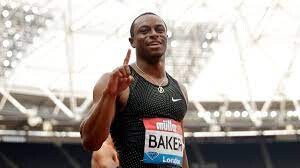
Baker is the third-fastest 60m runner in history, and one of the most consistent sprinters competing on the circuit. He is an Olympic finalist, World Indoor bronze medalist, and two-time NCAA champion. Baker is no stranger to the Millrose Games stage, winning the 60m in both 2018 and 2020.
Other athletes in the field include:
–Josephus Lyles, Noah’s younger brother. Lyles is a former World Junior Champion, and he placed fifth in the 200m final at this year’s USATF Outdoor Championships.
–Ackeem Blake of Jamaica, NACAC 100m Champion, and semifinalist at the World Championships.
–Miles Lewis, the 60m national record holder for Puerto Rico.
As always, the Millrose Games will feature the absolute best athletes in the sport, including dozens of Olympians and world champions. Some of the big names already announced include Alicia Monson, Konstanze Klosterhalfen, Abby Steiner, Jenna Prandini, Geordie Beamish, Cooper Teare, Josh Kerr, Katie Nageotte, Sandi Morris, Katerina Stefanidi, Ryan Crouser, and Joe Kovacs, with many more still to come.
The Millrose Games is a World Athletics Indoor Tour Gold meet. With the highest-level competition at the youth, high school, collegiate, club, and professional levels, there is truly something for everyone at the Millrose Games.
by Letsrun
Login to leave a comment
NYRR Millrose Games
The Pinnacle of Indoor Track & Field The NYRR Millrose Games, first held in 1908, remains the premier indoor track and field competition in the United States. The 2025 edition will once again bring the world’s top professional, collegiate, and high school athletes to New York City for a day of thrilling competition. Hosted at the New Balance Track &...
more...Alicia Monson and Konstanze Klosterhalfen headline Millrose Games 3000m
Alicia Monson will defend her 3000m title against a field including Konstanze Klosterhalfen when she returns to the Millrose Games, a World Athletics Indoor Tour Gold meeting, in New York on February 11.
Monson ran away from the field in 2022, setting a meeting record of 8:31.62. That performance would prove to be a springboard to more success for the 24-year-old, who went on to have the best season of her career outdoors, running personal bests at 3000m, 5000m and 10,000m, competing at the World Athletics Championships Oregon22 and placing in the top five at three Diamond League meetings.

"I’m looking forward to coming back to defend the 3000m this year," said Monson. "The atmosphere in The Armory makes for an awesome start to the track season."
Her main challenger may be Klosterhalfen, this year's European 5000m champion and the 2019 world bronze medalist. Klosterhalfen holds eight national records for Germany and won the 2019 Wanamaker Mile at the Millrose Games.
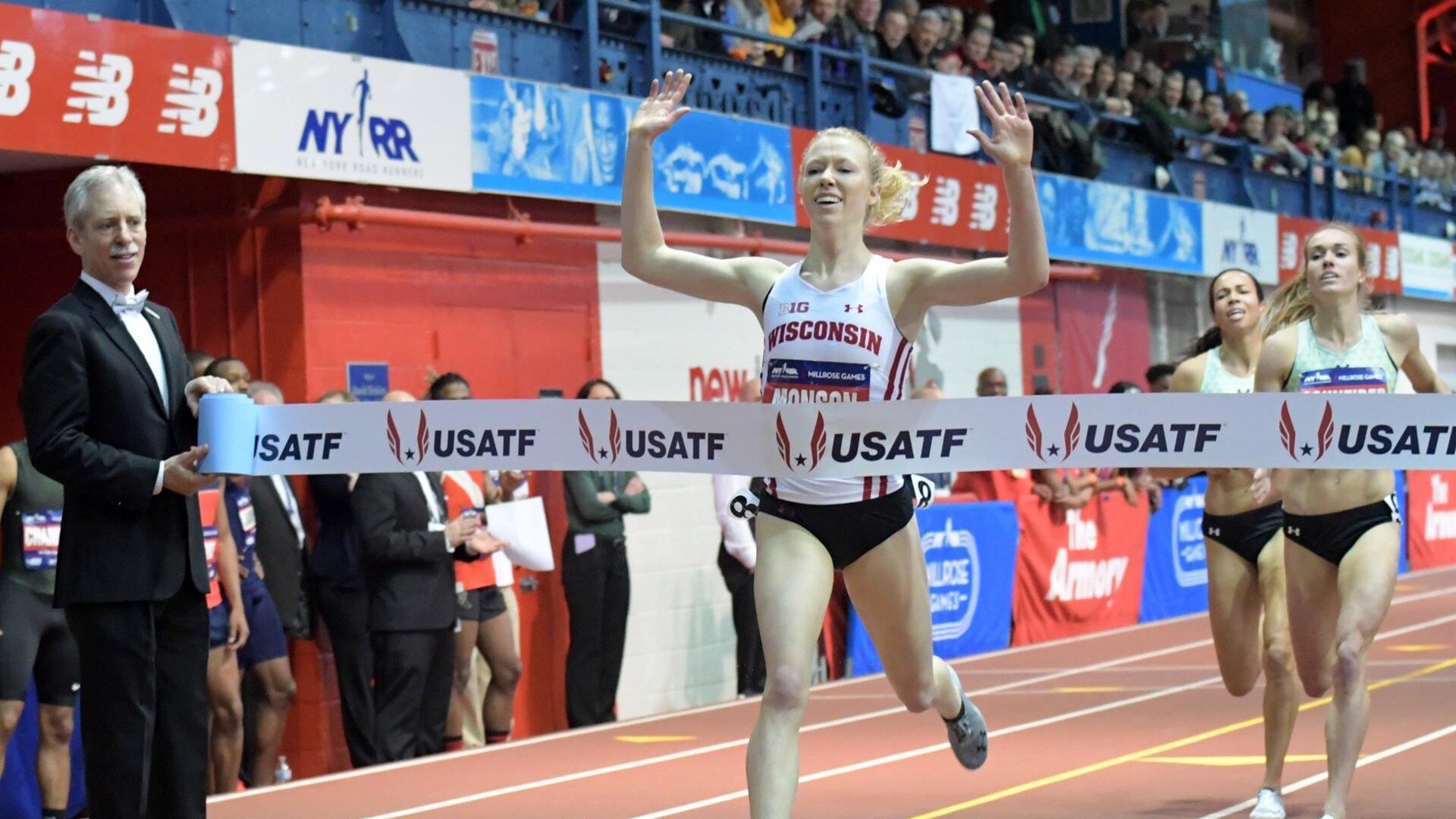
Other athletes to watch include Katelyn Tuohy, Elly Henes, Courtney Wayment, Whittni Orton Morgan and Fantaye Belayneh, Ethiopian champion and African Championships silver medalist in the 5000m.
These are the latest stars announced for the Millrose Games, joining the showdowns in the pole vault between Katie Nageotte, Sandi Morris, and Katerina Stefanidi, and in the shot put, featuring Ryan Crouser and Joe Kovacs. The men’s 3000m, meanwhile, will star Geordie Beamish, Cooper Teare and Josh Kerr, while the women's 300m will feature Abby Steiner, Jenna Prandini and Brittany Brown.
by World Athletics
Login to leave a comment
NYRR Millrose Games
The Pinnacle of Indoor Track & Field The NYRR Millrose Games, first held in 1908, remains the premier indoor track and field competition in the United States. The 2025 edition will once again bring the world’s top professional, collegiate, and high school athletes to New York City for a day of thrilling competition. Hosted at the New Balance Track &...
more...Hellen Obiri Wants To Win NYC In Her Marathon Debut
After earning a silver medal in the 10,000 meters at the World Athletics Championships in Eugene, Oregon, in July, Hellen Obiri was already looking toward the next big thing: making her 26.2-mile debut at the 2022 New York City Marathon.
Racing in New York was always her main goal for 2022, even though she made a late decision to compete on the track at the world championships. Immediately after her September 11 win at the Great North Run in northeast England, Obiri finally made her long-planned move from Ngong, Kenya to Boulder, Colorado, to start training with the On Athletics Club under three-time Olympian and coach Dathan Ritzenhein.
Obiri’s agent and former coach, Ricky Simms, worked with Ritzenhein to plan out her training for the Great North Run and the New York City Marathon as she made the move, and although she’s only been training in her new environment for nearly two months, she has proven to be adjusting nicely to the transition.

“Everyone has been very welcoming and the training environment is perfect; training is very similar to Kenya,” Obiri says. “I think it will be a good place for my daughter to grow up. The biggest challenge has been being away from my family, as I am missing them a lot. They have not been able to come as they do not yet have U.S. visas.”
So far, due to most of her teammates having been on vacation after the track season, Obiri, 32, has mainly trained with Ritzenhein, who either accompanies her on her training runs or leads her on a bike, and fellow countrywoman Edna Kiplagat, a two-time marathon world champion who has been living in Boulder for a decade and who will also be racing in New York.
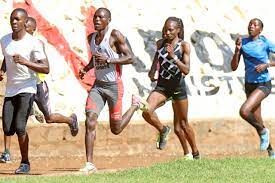
“Every day, I show up and wonder how Hellen is going to amaze me that day–she is completely dialed for New York,” Ritzenhein says. “We’ve spent a lot of early mornings out there, and it’s been a great couple months of getting to know each other and trusting in this new process. It’s really amazing to me how talented and focused she is.”
A Multifaceted Athlete
Obiri is one of the only women to have won world championships in outdoor track, indoor track and cross country. Among the 11 global championship medals she’s earned, she owns two world championship gold medals in the 5,000m (2017, 2019), another from the 3,000 at the 2012 indoor world championships and one more from the 2019 world cross country championships.
But the marathon has always been waiting in the wings. Given her speed, endurance and championship pedigree, Obiri seems to have the right qualities to be ever better over the longer distance, Ritzenhein says. After several weeks training in the U.S., he’s confident the challenging terrain Obiri has gotten used to in Kenya and now the rolling dirt roads north of Boulder will translate well to New York’s undulating course.
“Coming off the world championships this summer, we knew Hellen still had the wheels. But it had been a big increase in total running volume but also the volume and intensity of the long runs and workouts,” Ritzenhein says. “We tried to do some quality sessions on hilly terrain that mimics the course, and she has handled it all very well. I am very confident she will handle the course.”
Ritzenhein noted that Obiri will also likely eventually serve as a guide for fellow 10,000-meter runner Alicia Monson, who will likely make the move to the marathon within the next few years. The 24-year-old third-year pro placed 13th in the 10,000 at both the Olympics in 2021 and the World Athletics Championships in 2022.
“[Monson’s] track times are getting close, so hopefully the training with Hellen will be a bridge to her career on the roads in years,” Ritzenhein says. “Now that the team is back, [Obiri] will do some of the easy morning runs with them, but her workouts are still so much bigger than where they are in training.”
The Marathon Distance Beckons
After her solid 1:07:05 half marathon at the Great North Run, it’s no surprise that Obiri is exuding confidence as she approaches what’s expected to be a highly competitive field for her first go at the marathon distance. It was her fifth time competing in the half-marathon distance, which she says she has grown very comfortable with. In February, she finished second in a half marathon in the United Arab Emirates in 1:04:22, which remains the No. 2 time in the world this year.
“I aim to win [in New York]—the time doesn’t matter,” Obiri says.
Obiri is one of the only women to have won world championships in outdoor track, indoor track and cross country. Among the 11 global championship medals she’s earned, she owns two world championship gold medals in the 5,000m (2017, 2019), another from the 3,000 at the 2012 indoor world championships and one more from the 2019 world cross country championships.
But the marathon has always been waiting in the wings. Given her speed, endurance and championship pedigree, Obiri seems to have the right qualities to be ever better over the longer distance.
“With Peres [Jepchirchir, the reigning 2020 Olympic and 2021 New York City Marathon champion] now out of the race, it definitely changes the landscape a little,” Ritzenhein adds. “But with multiple world championship medalists and last year’s podium finishers, it’s still such a strong field. The marathon debut should always be cautious early on, but there isn’t anything that I think [Obiri] can’t handle.”
Obiri was also eager to share her thoughts on transitioning from training and racing in shoes from Nike, her former sponsor, to the On Cloudboom Echo 3.
“The fact that I was able to transition seamlessly to the new racing shoes and feel very comfortable in them is credit to the designers and team at On,” she says. “I hope I can give them more podium finishes.”
Looking ahead after New York, Obiri plans to continue to focus on road racing in 2023, though she may still jump into some track races if she feels as though she can remain competitive. After the marathon, she’ll wind down with a return to Kenya for the holidays, followed by some winter cross country running before jumping back for marathon training for a to-be-decided spring race, Ritzenhein says.
“[Obiri] could honestly train with the men’s team for much of the long training,” he says. “She’s doing things which are really incredible, and it’s inspiring for them and me to see.”
As with many elite long-distance runners, Obiri is unsurprisingly also looking ahead to the 2024 Paris Olympics as she plans out her future schedule and sets goals for future accolades.
“I have already won the world championships, world cross country championships, world indoor championships, Commonwealth Games and African Championships,” she says. “But I only have silver medals from the Olympics, and I would love an Olympic Games gold.”
by Emilia Benton
Login to leave a comment
TCS New York City Marathon
The first New York City Marathon, organized in 1970 by Fred Lebow and Vince Chiappetta, was held entirely in Central Park. Of 127 entrants, only 55 men finished; the sole female entrant dropped out due to illness. Winners were given inexpensive wristwatches and recycled baseball and bowling trophies. The entry fee was $1 and the total event budget...
more...USA names 151-strong team for World Championships in Oregon
A team of 151 athletes will represent the USA on home soil at the World Athletics Championships Oregon22 on July 15-24.
Multiple global champions and world record-holders feature in the squad as Eugene’s Hayward Field gets ready to welcome the world for the first-ever outdoor World Athletics Championships to be hosted in the USA.
World record-holder and Olympic champion Sydney McLaughlin will take on the former world record-holder and reigning world champion Dalilah Muhammad as they look to further cement the US women’s global dominance in the 400m hurdles final on July 22.
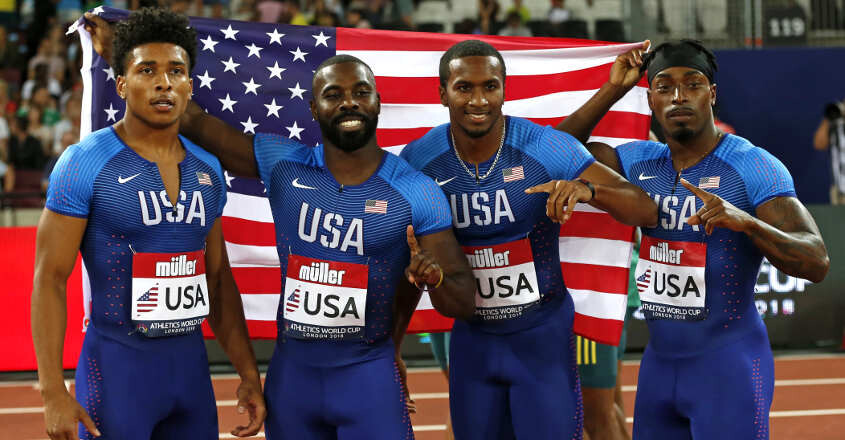
In the men’s shot put on July 17, world record-holder and Olympic champion Ryan Crouser will go after the one title that has so far eluded him – that of world champion – and will take on two-time world champion Joe Kovacs.
Such is the strength of the women’s 800m squad of Athing Mu, Ajee Wilson and Raevyn Rogers, as well as the men’s 200m team of Noah Lyles, Erriyon Knighton, Fred Kerley and Kenny Bednarek, that athletes will be aiming for USA medal sweeps.
Returning to defend the titles they won in Doha in 2019 are Nia Ali (women's 100m hurdles), Donavan Brazier (men's 800m), Christian Coleman (men's 100m), Grant Holloway (men's 110m hurdles), Kovacs (men's shot put), Lyles (men's 200m), Muhammad (women's 400m hurdles), DeAnna Price (women's hammer) and Christian Taylor (men's triple jump).
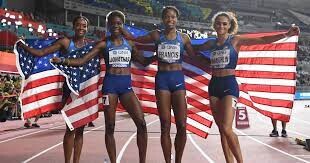
Making her 10th World Championships appearance will be Allyson Felix, who has 18 world medals, including 13 golds, to her name and will be in the mixed 4x400m pool.
“I couldn’t be prouder to lead this amazing team for this once-in-a-lifetime event,” said USATF CEO Max Siegel. “We have been given the unique opportunity to impact the track and field landscape in the US, and we’ve put our best team forward.”
USA team for Oregon
Women
100m: Aleia Hobbs, Melissa Jefferson, Twanisha Terry
200m: Tamara Clark, Jenna Prandini, Abby Steiner
400m: Talitha Diggs, Kendall Ellis, Lynna Irby
800m: Athing Mu, Raevyn Rogers, Ajee Wilson
1500m: Sinclaire Johnson, Cory McGee, Elle St. Pierre
5000m: Elise Cranny, Emily Infeld, Karissa Schweizer
10,000m: Alicia Monson, Natosha Rogers, Karissa Schweizer
Marathon: Emma Bates, Keira D’Amato, Sara Hall
3000m steeplechase: Emma Coburn, Courtney Frerichs, Courtney Wayment
100m hurdles: Nia Ali, Alia Armstrong, Keni Harrison, Alaysha Johnson
400m hurdles: Shamier Little, Sydney McLaughlin, Dalilah Muhammad, Britton Wilson
Heptathlon: Michelle Atherley, Anna Hall, Kendell Williams, Ashtin Zamzow-Mahler
High jump: Vashti Cunningham, Rachel Glenn, Rachel McCoy
Pole vault: Gabriela Leon, Sandi Morris, Katie Nageotte
Long jump: Quanesha Burks, Tiffany Flynn, Jasmine Moore
Triple jump: Tori Franklin, Jasmine Moore, Keturah Orji
Shot put: Adelaide Aquilla, Chase Ealey, Maggie Ewen, Jessica Woodard
Discus: Valarie Allman, Rachel Dincoff, Veronica Fraley, Laulauga Tausaga-Collins
Hammer: Brooke Andersen, Annette Echikunwoke, Janee Kassanavoid, DeAnna Price
Javelin: Ariana Ince, Maggie Malone, Kara Winger
20km race walk: Robyn Stevens, Miranda Melville
35km race walk: Stephanie Casey, Miranda Melville, Maria Michta-Coffey
4x100m: Celera Barnes, Tamari Davis, Gabby Thomas (plus athletes named in individual sprints)
4x400m: Wadeline Jonathas, Jaide Stepter, Kaylin Whitney (plus athletes named in individual sprints)
Men
100m: Marvin Bracy, Trayvon Bromell, Christian Coleman, Fred Kerley
200m: Kenny Bednarek, Fred Kerley, Erriyon Knighton, Noah Lyles
400m: Champion Allison, Michael Cherry, Michael Norman, Randolph Ross
800m: Donavan Brazier, Bryce Hoppel, Jonah Koech, Brandon Miller
1500m: Johnny Gregorek, Cooper Teare, Josh Thompson
5000m: Grant Fisher, Woody Kincaid, Abdihamid Nur
10,000m: Grant Fisher, Joe Klecker, Sean McGorty
Marathon: Elkanah Kibet, Colin Mickow, Galen Rupp
3000m steeplechase: Hillary Bor, Evan Jager, Benard Keter
110m hurdles: Devon Allen, Trey Cunningham, Grant Holloway, Daniel Roberts
400m hurdles: Trevor Bassitt, Rai Benjamin, Khallifah Rosser
Decathlon: Steven Bastien, Kyle Garland, Zach ZiemekHigh jump: Darius Carbin, JuVaughn Harrison, Shelby McEwen
Pole vault: Andrew Irwin, Chris Nilsen, Luke WinderLong jump: Marquis Dendy, Steffin McCarter, Will Williams
Triple jump: Chris Benard, Will Claye, Donald Scott, Christian Taylor
Shot put: Josh Awotunde, Ryan Crouser, Joe Kovacs, Tripp Piperi Discus: Andrew Evans, Sam Mattis, Brian Williams
Hammer: Daniel Haugh, Rudy Winkler, Alex Young
Javelin: Ethan Dabbs, Tim Glover, Curtis Thompson
20km race walk: Nick Christie, Dan Nehnevaj
35km race walk: Nick Christie
4x100m: Kyree King, Josephus Lyles, Elijah Hall-Thompson (plus athletes named in individual sprints)
4x400m: Bryce Deadmon, Vernon Norwood, Elija Godwin (plus athletes named in individual sprints)
Mixed
4x400m: Allyson Felix, Kennedy Simon, Ismail Turner, Noah Williams (plus athletes named in individual sprints).
by World Athletics
Login to leave a comment
World Athletics Championships Budapest23
Budapest is a true capital of sports, which is one of the reasons why the World Athletics Championships Budapest 2023 is in the right place here. Here are some of the most important world athletics events and venues where we have witnessed moments of sporting history. Throughout the 125-year history of Hungarian athletics, the country and Budapest have hosted numerous...
more...USATF 2022 Championships finals results through June 25
There has already been a lot of a action during the 2022 USATF Championships in Eugene Oregon. Sydney McLaughlin set a new world record in the 400m hurdles (Second photo). Michael Norman won the 400m (first photo) and Fred Kerley won the 100m (third photo). Photos by Jivko
Women’s 100m
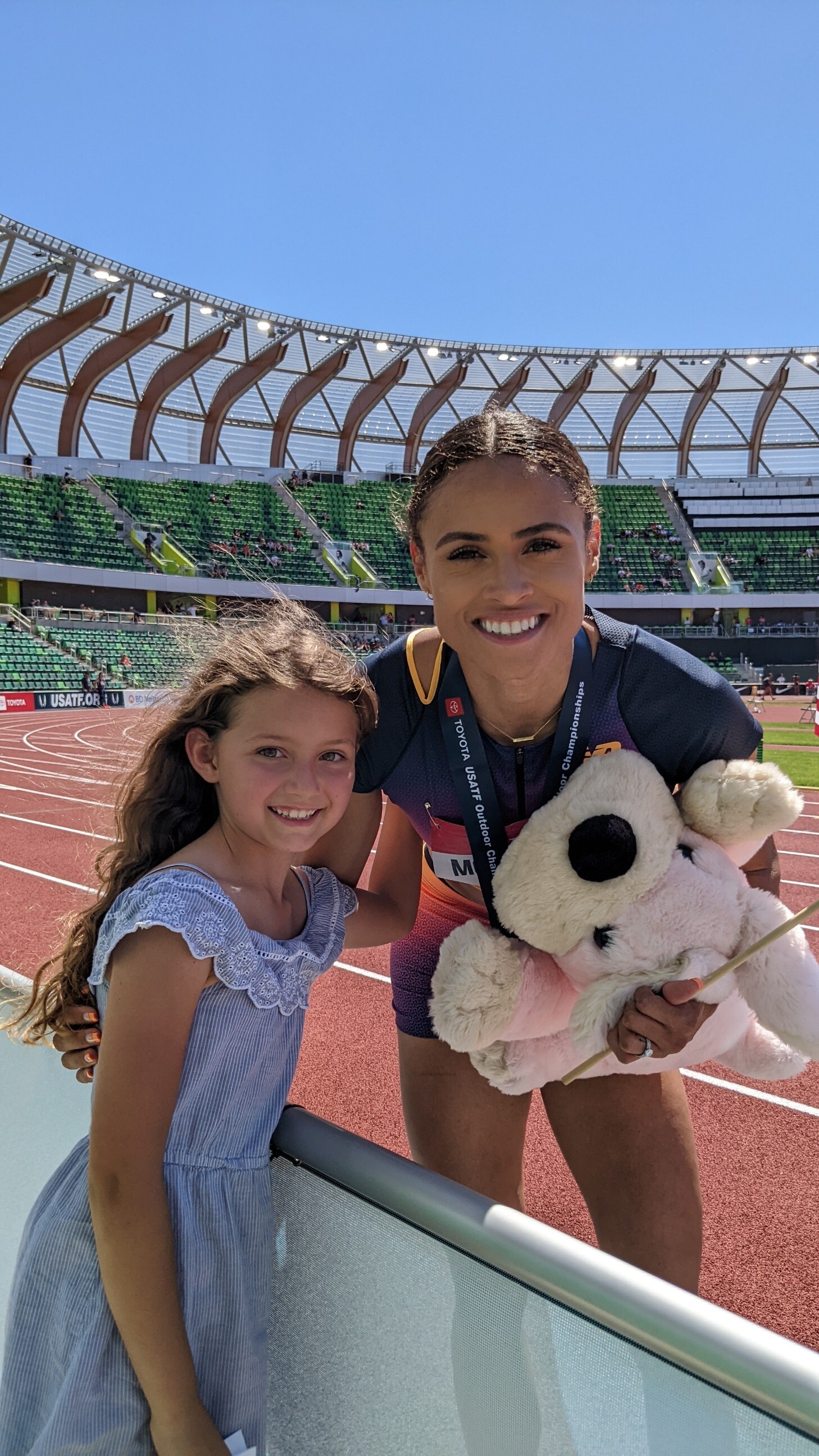
1. Melissa Jefferson — 10.69 2. Aleia Hobbs — 10.72 3. Twanisha Terry — 10.744. Tamari Davis — 10.785. Tamara Clark — 10.826. Celera Barnes — 10.86

Women’s 400m
1. Talitha Diggs — 50.22 2. Kendall Ellis — 50.35 3. Lynna Irby — 50.674. Wadeline Jonathas — 50.845. Kennedy Simon — 50.906. Allyson Felix — 51.307. Jaide Stepter — 51.308. Kaylin Whitney — 51.31
Women’s 1500m
1. Sinclaire Johnson — 4:03.29 2. Cory McGee — 4:04.52 3. Elle St. Pierre — 4:05.144. Karissa Schweizer — 4:05.405. Heather MacLean — 4:06.40
Women’s 10,000m (from May 27)
1. Karissa Schweizer — 30:49.56 2. Alicia Monson — 30:51.09 3. Natosha Rogers — 31:29.804. Emily Infeld — 31:30.045. Weini Kelati — 31:39.90
Women’s 100m Hurdles
1. Keni Harrison — 12.34 2. Alaysha Johnson — 12.35 3. Alia Armstrong — 12.474. Tonea Marshall — 12.555. Tia Jones — 12.59DNS. Nia Ali (has bye onto world team)
Women’s 400m Hurdles
1. Sydney McLaughlin — 51.41 WR 2. Britton Wilson — 53.08 3. Shamier Little — 53.924. Anna Cockrell — 53.985. Shannon Meisberger — 55.39
Men’s 100m
1. Fred Kerley — 9.77 2. Marvin Bracy-Williams — 9.85 3. Trayvon Bromell — 9.884. Micah Williams — 9.905. Elijah Hall-Thompson — 9.906. Kyree King — 9.96DNS. Christian Coleman (has bye onto world team)
Men’s 400m
1. Michael Norman — 43.56 2. Champion Allison — 43.70 3. Randolph Ross — 44.174. Elija Godwin — 44.345. Vernon Norwood — 44.356. Bryce Deadmon — 44.547. Noah Williams — 45.048. Ismail Turner — 45.56
Men’s 1500m
1. Cooper Teare — 3:45.86 2. Jonathan Davis — 3:46.01 (doesn’t have standard)3. Josh Thompson — 3:46.07 (doesn’t have standard)4. Eric Holt — 3:46.15 (doesn’t have standard)5. Reed Brown — 3:46.28 (doesn’t have standard)6. Johnny Gregorek — 3:46.36 (has standard)11. Yared Nuguse — 3:47.46 (has standard)
Men’s 10,000m (from May 27)
1. Joe Klecker — 28:28.71 2. Grant Fisher — 28:28.81 3. Sean McGorty — 28:29.574. Dillon Maggard — 28:30.755. Shadrack Kipchirchir — 28:30.79
Men’s 3000m Steeplechase
1. Hillary Bor — 8:15.76 2. Evan Jager — 8:17.29 3. Benard Keter — 8:19.164. Duncan Hamilton — 8:20.235. Anthony Rotich — 8:23.15
Login to leave a comment
USATF Outdoor Championships
With an eye toward continuing the historic athletic success of 2022, USATF is pleased to announce competitive opportunities for its athletes to secure qualifying marks and prize money, including a new Grand Prix series, as they prepare for the 2023 World Athletics Championships in Budapest, Hungary.As announced a few months ago, the 2023 Indoor Championships in Nanjing, China have been...
more...Ingebrigtsen and others in record breaking form in Oslo despite the rain
A Wanda Diamond League record from Jakob Ingebrigtsen (first photo) in the mile, along with meeting records from Mondo Duplantis in the pole vault and Femke Bol in the 400m hurdles brightened a rainy evening at the Bislett Games in Oslo on Thursday (16).
Ingebrigtsen has won almost all there is to win in middle-distance events, but a senior Dream Mile victory in Oslo was one thing missing from the 21-year-old’s resume. In fact, before today no Norwegian man had ever won the prestigious discipline at the Bislett Games.
But, racing in the final individual track event of the night, Ingebrigtsen ensured the 15,000 fans at the Bislett Stadion went home happy as he won the mile in a Norwegian record of 3:46.46, breaking the Wanda Diamond League record in the process.
Paced through the first two laps in 56.01 and 1:53.30, Ingebrigtsen was tracked closely by Australia’s Oliver Hoare and Britain’s Jake Wightman for most of the race. The Olympic 1500m champion never appeared to be under too much strain, though – even when Hoare was attempting to close in on the leader with half a lap left.
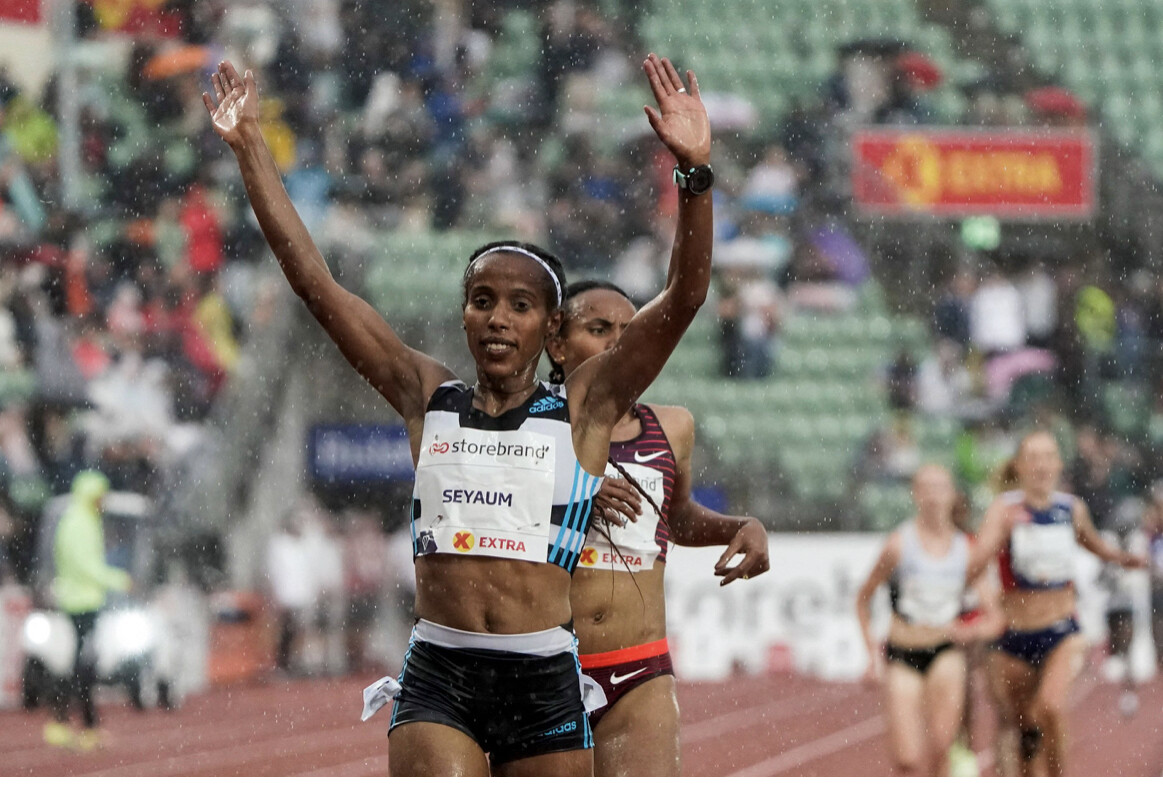
Ingebrigtsen – roared on by the home crowd, many of whom were on their feet – kicked down the home straight and crossed the line in 3:46.46, taking almost a second off his own Norwegian record and moving up to sixth on the world all-time list, just 0.14 shy of Steve Cram’s European record.
Hoare finished second in 3:47.48 to break the Oceanian record and move to 13th on the world all-time list. Wightman was third in a PB of 3:50.30 from fellow Brit Neil Gourley (3:52.91). There was also a national record for Charles Grethen of Luxembourg in fifth (3:53.20).
“I was ready to run fast and was happy to do that and to win,” said the world indoor silver medallist. “Some work needs to be done before the World Championships, but I will work hard to be in better shape there.
“Last year I was sick and couldn't race here, so it was even more special here tonight, as being the first Norwegian to win the Dream Mile. Doing things nobody else has done before is really great.”
Seyaum and Bekele lead Ethiopian 5000m sweeps
Dawit Seyaum may be new to the 5000m, but the former 1500m specialist looked anything but inexperienced as she outkicked her fellow Ethiopians to win a high-quality race.
The opening pace was steady, the first 1000m covered in 2:53.83 and 2000m reached in 5:52.33. Versatile Norwegian runner Karoline Bjerkeli Grovdal then took up the pace in the second half and passed through 3000m in 8:48.65, leading a large lead pack. Grovdal held on to that lead for another 1500 metres, but then Seyaum and compatriots Letesenbet Gidey, Gudaf Tsegay and Almaz Ayana started battling for the lead with one lap to go.
Ayana’s challenge soon faded, leaving Seyaum, Tsegay and Gidey out in front. Seyaum’s kick down the home straight was enough to break free from Tsegay and she won in 14:25.84. Tsegay, the Olympic bronze medallist at this distance, was second in 14:26.69 while world record-holder Gidey was third in 14:26.92. Grovdal held on to fourth place in a Norwegian record of 14:31.07 and USA’s Alicia Monson was fifth in a big PB of 14:31.11.
(Second photo)Dawit Seyaum celebrates her 5000m win at the Wanda Diamond League in Oslo
For just the second time in history, seven women finished inside 14:35 and eight women finished inside 14:40.
There was another Ethiopian 1-2-3 in the men’s 5000m, though this time the 1500m standout was beaten by the 5000m specialist.
The pace was steady though never blazing quick, meaning most of the field was still in contention at the business end of the race. Two-time world indoor champion Samuel Tefera led at 3000m, passing in 7:54.39, but then sat back in the pack to save his legs for a potential fast finish.
He made his way back to the front of the pack in the closing stages, but could not get on level terms with Bekele, who kicked ahead and won in 13:03.51. Tefera held on for second in 13:04.35, just ahead of compatriot Getnet Wale (13:04.48).
Keely Hodgkinson won the battle of the Brits over 800m, getting the better of fellow Olympic silver medallist Laura Muir.
The 20-year-old ran a controlled and assured race and kept her cool in the closing stages to win comfortably in 1:57.71. Muir was second in 1:58.09, ahead of France’s Renelle Lamote (1:58.50) and world champion Halimah Nakaayi of Uganda (1:58.68).
by World Athletics
Login to leave a comment
Schweizer, Klecker Win U.S. 10,000-Meter Championships
They lead the U.S. contingent in the event for the World Championships in July.
After 24 and a half laps of the track, Karissa Schweizer sprinted past Alicia Monson to win the U.S. title in the 10,000 meters at the Prefontaine Classic in Eugene, Oregon.
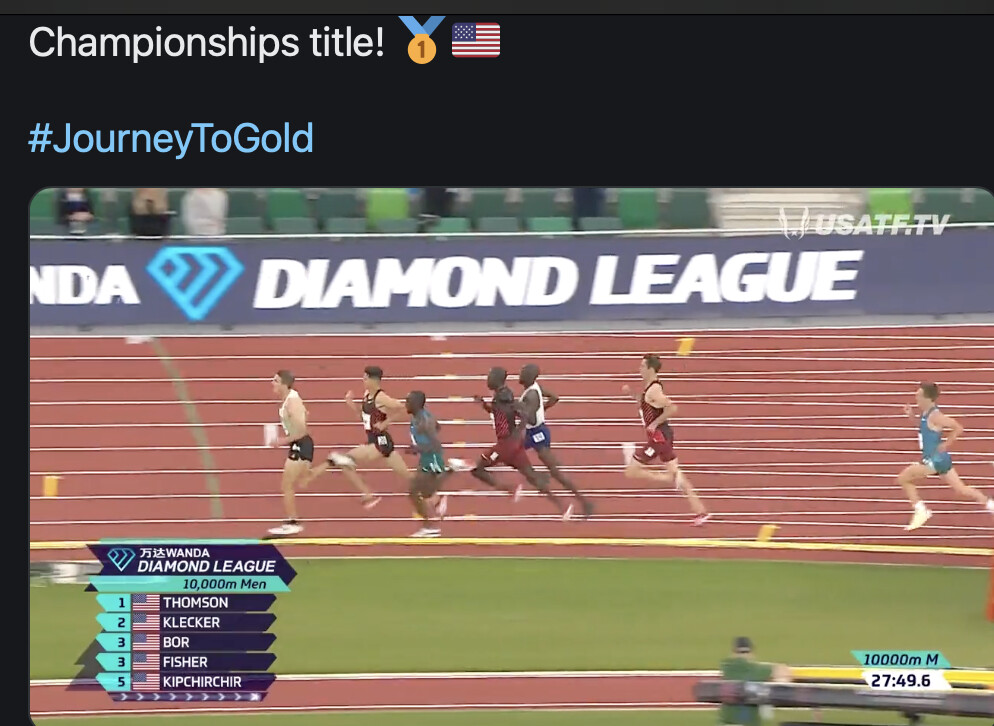
Schweizer’s time, 30:49.56, was less than two seconds off her personal best, and by finishing in the top three, she earned a spot on the U.S. squad competing at the World Athletics Championships in July. That meet will also be held in Eugene, the first time the meet will be in the United States.
Monson, who led the last 10 laps of the race until Schweizer sprinted by her, was second in 30:51.09, a personal best by nearly 20 seconds.
Well behind the top two, a pack of six women vied for third place and the final of three Worlds spots. Natosha Rogers and Emily Infeld were back and forth in the final 100 meters, and Rogers pulled ahead just before the line. She clocked 31:29.80, and Infeld was less than a quarter of a second behind, in 31:30.04.
Weini Kelati was fifth, Sarah Lancaster was sixth, and Steph Bruce, in her final year of racing, was seventh.
The race went out in a relatively easy first half. Emily Durgin led the field through a 5,000-meter split of 15:50. Schweizer ran just under 15 minutes for the second 5,000 meters, and Monson was right behind.
Joe Klecker takes the men’s title
The men’s 10,000 meters had the same stakes—top three earn a trip to worlds—but the pace went out so easy that most of the field was still in the race when the sprinting started during the bell lap.
Joe Klecker, an Olympian at 10,000 meters last year, won in 28:28.71, just beating Grant Fisher, the American record holder in the event, who finished in 28:28.81. Fisher’s time was nearly two minutes slower than the record (26:33.84) he set in March.
Although Emmanuel Bor had a lead heading into the final 100 meters, Sean McGorty emerged in third place after Bor, slowing, tripped in the final meters and finished in eighth.
McGorty, recovering from Achilles surgery last July, ran 28:29.57 and earned his first berth on a U.S. team.
Dillon Maggard was fourth, Shadrack Kipchirchir was fifth, and Lopez Lomong was sixth.
In both races, first place earned $8,000, second earned $6,000, and the third-place finishers took home $4,000.
by Runner’s World
Login to leave a comment
Kenyan Hellen Obiri to move up to the marathon with On
Over the weekend in Northern Ireland, two-time Olympic silver medalist from Kenya, Hellen Obiri, surprised the running world by winning the World Athletics Cross Country Tour Silver event, but not while wearing a Nike singlet. She was instead representing On – a brand that has recently been taking the world of athletics by storm, growing their team of elite-level sponsored athletes, including Canada’s Ben Flanagan.
A year and a half ago, On launched its first professional team, called On Athletics Club, coached by American distance runner Dathan Ritzenhein. “You need world-class athletes to build world-class products,” says Steve DeKoker, On’s head of global sports marketing. “Our goal is to build On as a global brand, and we need world-class athletes to help us develop.” Obiri’s signing is a huge acquisition for the Swiss sporting brand – she is the only athlete ever to win a world indoor, world outdoor and world XC title.
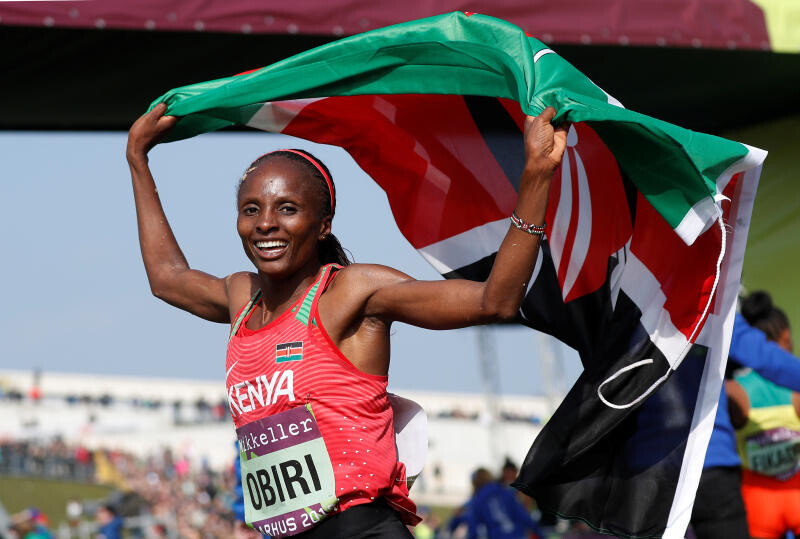
Ben Flanagan signs with On
“We want people that will fit the brand’s competitive values,” says DeKoker. “Both Obiri and Flanagan checked those boxes.” In her debut race wearing On product, the defending world cross country champion won the 8K easily in 26:44.
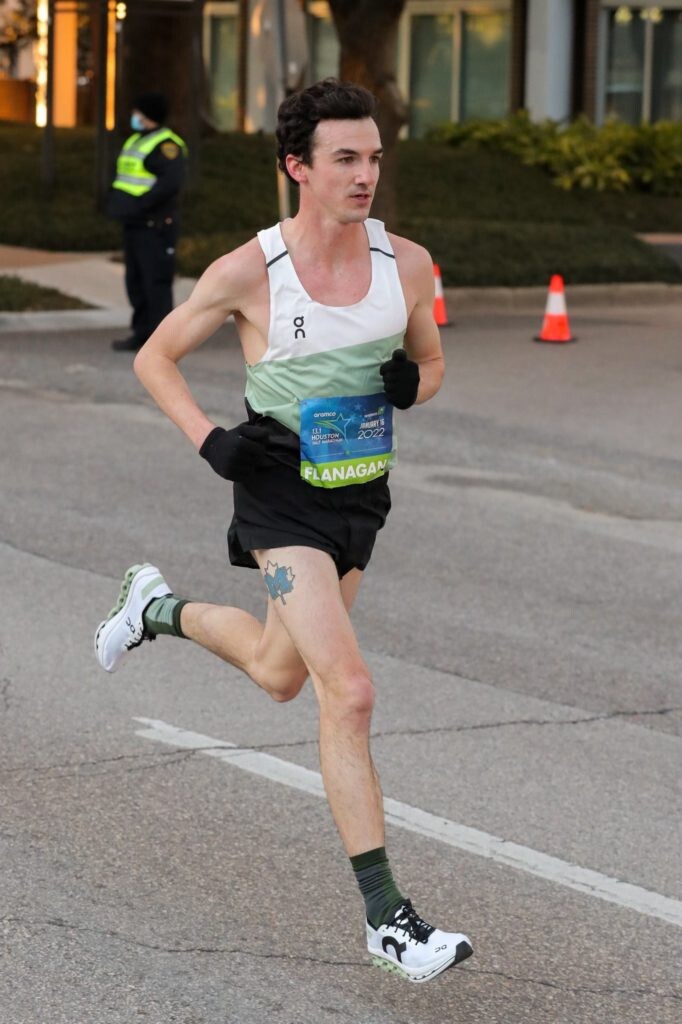
Obiri will head to the World Athletics Memorial Agnes Tirop XC race in Eldoret, Kenya on Feb. 12, before taking a shot at another 5,000m medal this summer at the 2022 World Championships in Eugene, Ore. “She will move up to the marathon distance in the fall of 2022,” DeKoker says. “And we will have our new premium-plated racing shoe on display for her debut.”
“The full expectation is to develop and supply our athletes with the top-of-the-line product to enhance their performance,” says DeKoker. “There are multiple On super-spikes scheduled to be released this year, with Alicia Monson racing in a pair this weekend at the NYC Millrose Games.”
Both Monson and Flanagan are two recent NCAA champions that DeKoker had his eyes on since they won their titles in 2018 and 2019. “When we found out Flanagan’s contract was up with Reebok, we knew we wanted to support him,” DeKoker says. “We feel he will have the Canadian half-marathon or marathon record in no time.”
For now, the brand plans to go all in to be competitive with the top distance brands on the roads and track, then dipping their feet in the sprint distances for the 2028 LA Olympics.
by Marley Dickinson
Login to leave a comment
Scottish runners Jemma Reekie and Jake Wightman win 5th Avenue Mile
Athletes took to the streets of New York City on Sunday morning for the 5th Avenue Mile, one of the final races of the summer racing season.
It was the two Scottish runners who took the win, with Jemma Reekie taking the women’s race in 4:21.6 and Jake Wightman winning the men’s race in 3:49.6.
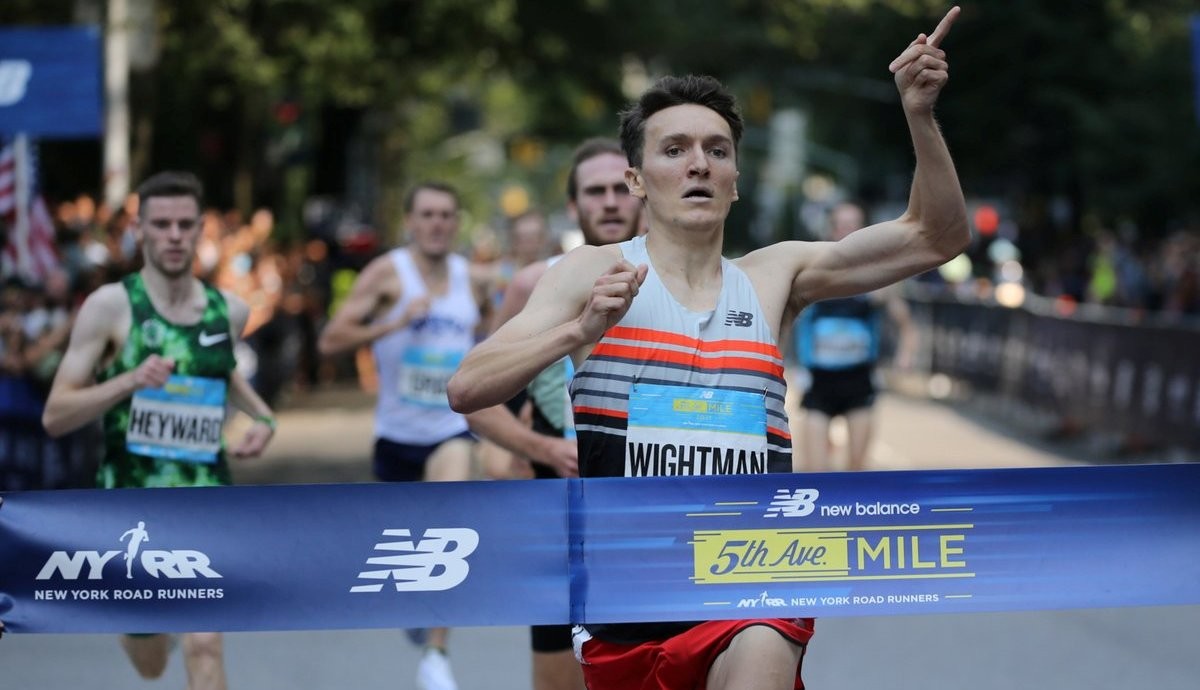
The women’s race
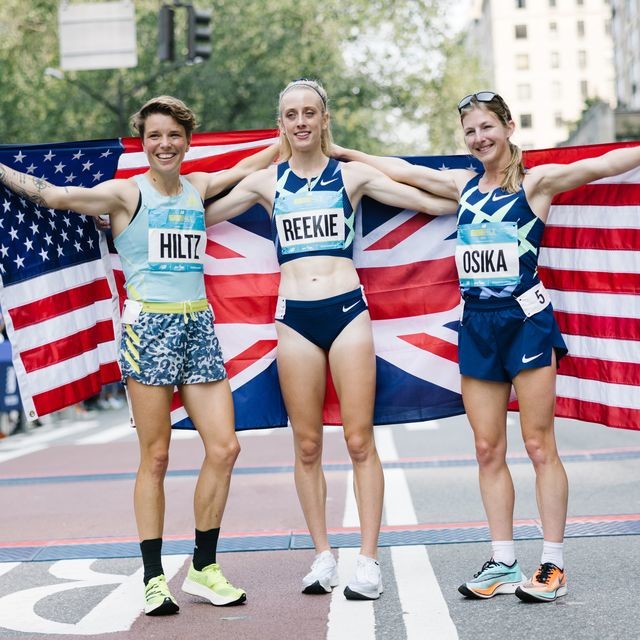
Alicia Monson took the lead early in the women’s race, gapping the field by several metres in the first half. The pack eventually reeled her in, and with one minute to go, Reekie, Hiltz and Van Buskirk began making a push for the finish.
With only a few metres left in the race, Reekie took over the lead, and after finishing 4th in Tokyo and 4th in the Diamond League final, she finally got her win. Hiltz finished in second place in 4:23.0 and Shannon Osika came third in 4:23.3. After making a strong push for a podium spot, Van Buskirk crossed the line in fourth in 4:23.9. Monson ended up in sixth in 4:25.4. Canada’s Julie-Anne Staehli finished in 11th in 4:29.1.
The men’s race
Wightman was the winner in a hotly-contested men’s race, where there was plenty of jostling for the lead over the 20-block race. Australia’s Oliver Hoare led in the early stages, but the rest of the pack were right on his heels. At about the 800m mark, Matthew Centrowitz made an aggressive move and created a sizeable gap on the field, but was unable to hold onto the lead.
Wightman cranked the pace up in the final meters of the race to take the win, followed by Hoare and Jake Heyward, also from the U.K., both in 3:50.4. Canada’s Charles Philibert-Thiboutot finished ninth in 3:53.2, and Centrowitz ended up in 14th in 3:56.4.
by Brittany Hambleton
Login to leave a comment
New Balance 5th Avenue Mile
The New Balance 5th Avenue Mile opens a beautiful 20-block stretch of 5th Avenue to runners of all ages and abilities who want to run their best mile in New York City. Special races include a youth mile, the George Sheehan Memorial Mile for runners age 60 and over, the NYRR Road Mile Championships, and Olympic-caliber professional men's and women's...
more...No world record but Sifan Hassan claims a clear win in Eugene
A willing but weary Sifan Hassan fell short of the women’s world 5000m record she was targeting at Hayward Field in Eugene, Oregon, on Friday (20) as she finished well clear of a stellar field in 14:27.89.
On the traditional Distance Night preface to the Prefontaine Classic that now forms the Wanda Diamond League meeting, the 28-year-old Dutch runner was clearly tired after an epic season, having won the Olympic 5000m and 10,000m titles in Tokyo earlier this month and added a 1500m bronze.
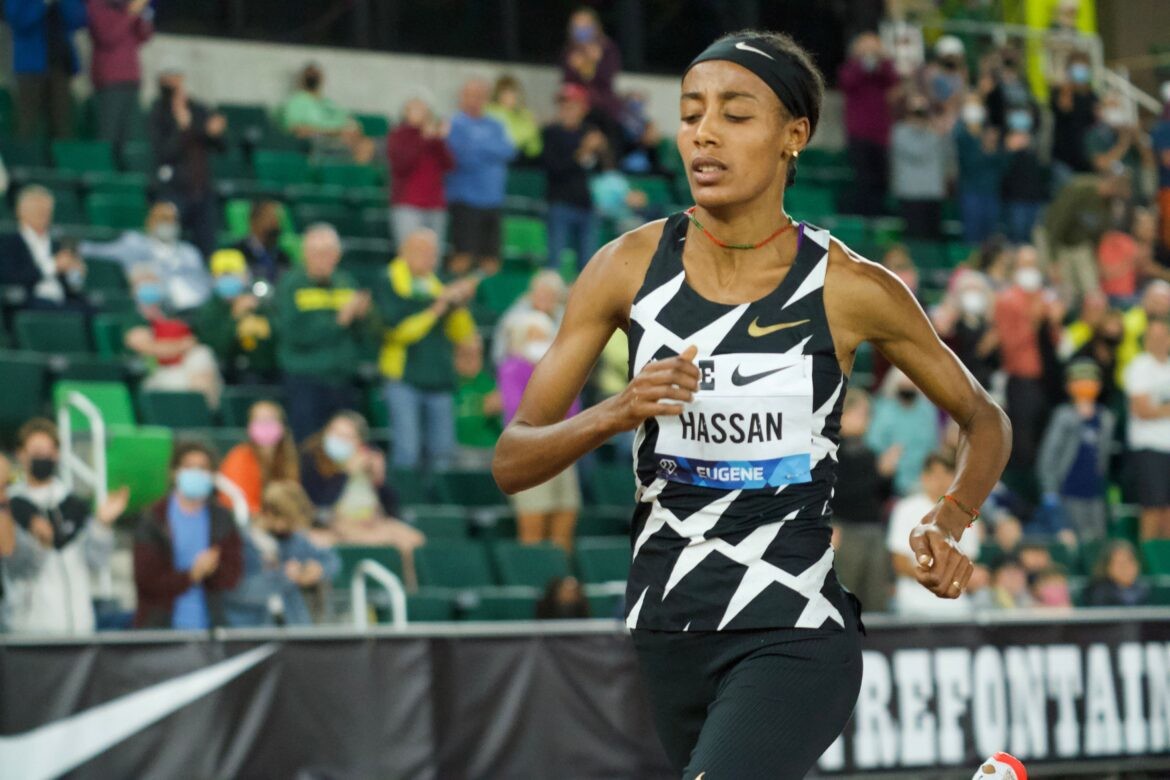
She had announced her intention of eclipsing the mark of 14:06.62 set by her Ethiopian rival Letesenbet Gidey in Valencia last year, but eventually finished outside her own European record of 14:22.12 set in London two years ago.
Had Hassan’s ambitions come to pass in a recently rebuilt stadium that had the welcome atmosphere of a live home crowd it would have been another blow to her rival Gidey, who in June this year ran 29:01.03 at Hengelo to better the world 10,000m record of 29:06.82 Hassan had set on the same track just two days earlier.
Hassan’s response in Tokyo was impressive as she beat the Ethiopian to the Olympic 10,000m title with an unanswerable sprint around the final bend.
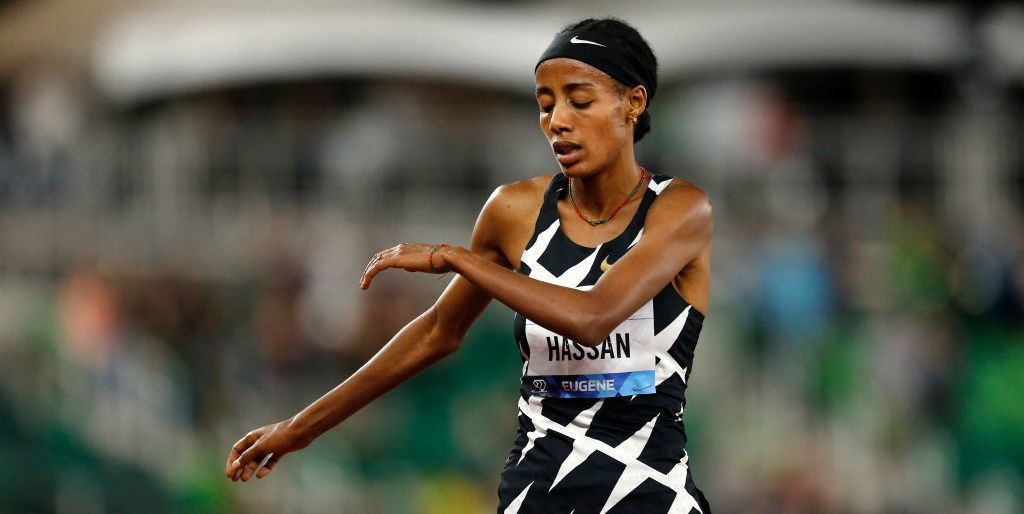
But depriving her rival of one of her world records proved an aspiration too far on this occasion for a woman who already held world marks in the 5km road event, mile and one-hour race.
Within the first 1500m the race had become a time trial as Hassan was the only athlete left tracking the two pacemakers who were keeping pace with the blue guide lights on the infield.
By five minutes in there was only one runner ahead of her. And by the halfway point she was running alone with only the green lights of the world record pace for company.
At the 3000m mark, however, she was slipping behind that snake of flashing green, although she kept working.
With less than a mile to go, the snake was gliding ever further away from her, despite the efforts of the spectators sprinkled throughout the stands of an arena that will host the postponed World Athletics Championships next year.
A lap in 70.1 was followed by 71.83 and with three laps remaining she could see her latest ambition moving away from her, although she had already moved well clear of a stellar field at the end of a long and exhausting season.
As the bell rang it was clear how hard the Dutch athlete was having to work, and she grimaced as she set off for one final lap.
Hassan was followed home by two Ethiopian runners, as Senbere Teferi clocked 14:42.25 and Fantu Worku finished in 14:42.85.
The next four runners clocked personal bests as Kenya’s Loice Chemnung finished in 14:43.65, home runners Alicia Monson and Abbey Cooper recorded 14:48.49 and 14:52.37 respectively and Kenya’s Sheila Chelangat was seventh in 14:52.66.
Gidey had finished second in the previous event, the women’s two miles, clocking 9:06.74 behind Burundi’s Rio 2016 silver medallist Francine Niyonsaba, who finished in a meeting record and 2021 fastest time of 9:06.74.
Kenya’s double world champion Hellen Obiri was third in 9:14.55, ahead of Germany’s Konstanze Klosterhalfen in 9:18.16.
by World Athletics
Login to leave a comment
130 athletes named on the team to represent the United States at the Tokyo Olympic Games
World outdoor record-holders Sydney McLaughlin, Ryan Crouser and Keni Harrison are among the 130 athletes named on the team to represent the United States at the Tokyo Olympic Games.
The squad includes 13 medalists from the 2016 Games in Rio and six defending world champions from Doha. Experienced headliners include five-time Olympians Allyson Felix in the 400m and Abdi Abdirahman in the marathon, while the youngest athlete on the team is 17-year-old Erriyon Knighton, who twice broke the world U20 200m record last month at the US Olympic Trials.
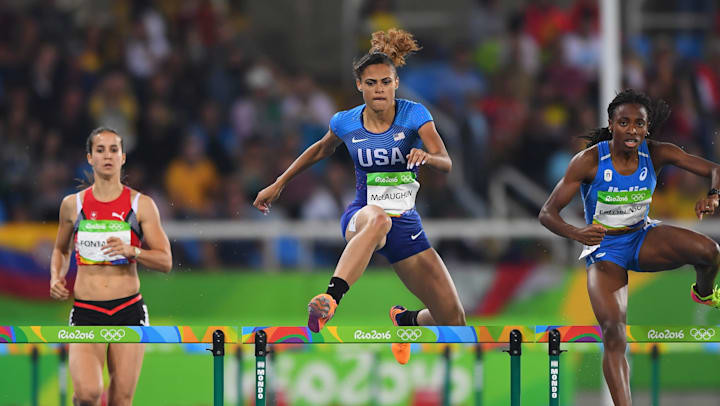
JuVaughn Harrison won both the long jump and high jump at the Trials in Eugene and he will be among the athletes contesting two events in Tokyo as he has been selected for both disciplines.
Other athletes announced on the team include world indoor 60m hurdles record-holder Grant Holloway, who was just 0.01 shy of breaking Aries Merritt’s world 110m hurdles record of 12.80 in Eugene, plus former world 400m hurdles record-holder Dalilah Muhammad, the second-fastest ever 200m sprinter Gabby Thomas and multiple global long jump gold medalist Brittney Reese.
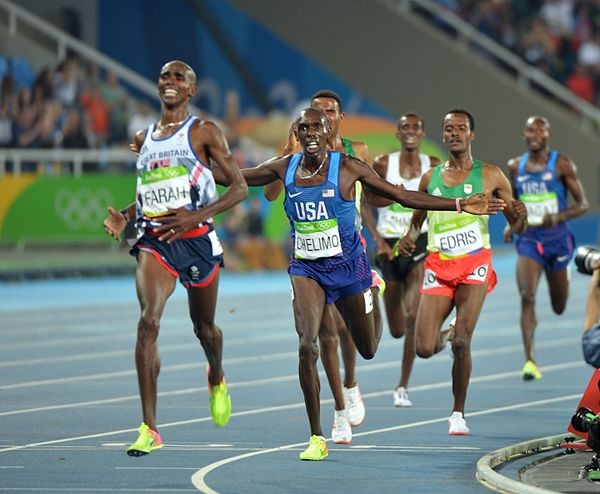
USA team for Tokyo
WOMEN
100m: Teahna Daniels, Javianne Oliver, Jenna Prandini
200m: Anavia Battle, Jenna Prandini, Gabby Thomas
400m: Allyson Felix, Quanera Hayes, Wadeline Jonathas
800m: Athing Mu, Raevyn Rogers, Ajee' Wilson
1500m: Heather MacLean, Cory McGee, Elle Purrier
5000m: Elise Cranny, Rachel Schneider, Karissa Schweizer
10,000m: Alicia Monson, Karissa Schweizer, Emily Sisson
Marathon: Sally Kipyego, Molly Seidel, Aliphine Tuliamuk
3000m steeplechase: Emma Coburn, Val Constien, Courtney Frerichs
100m hurdles: Christina Clemons, Gabbi Cunningham, Keni Harrison
400m hurdles: Anna Cockrell, Sydney McLaughlin, Dalilah Muhammad
20km race walk: Robyn Stevens
High jump: Tynita Butts-Townsend, Vashti Cunningham, Rachel McCoy
Pole vault: Morgann LeLeux, Katie Nageotte, Sandi Morris
Long jump: Quanesha Burks, Tara Davis, Brittney Reese
Triple jump: Tori Franklin, Jasmine Moore, Keturah Orji
Shot put: Adelaide Aquilla, Jessica Ramsey, Raven Saunders
Discus: Valarie Allman, Kelsey Card, Rachel Dincoff
Hammer: Brooke Andersen, Gwen Berry, DeAnna Price
Javelin: Ariana Ince, Maggie Malone, Kara Winger
Heptathlon: Erica Bougard, Annie Kunz, Kendell Williams
4x100m: English Gardner, Aleia Hobbs, Gabby Thomas (plus others selected in individual events)
4x400m: Kendall Ellis, Lynna Irby, Kaylin Whitney (plus others selected in individual events)
MEN
100m: Ronnie Baker, Trayvon Bromell, Fred Kerley
200m: Kenny Bednarek, Erriyon Knighton, Noah Lyles
400m: Michael Cherry, Michael Norman, Randolph Ross
800m: Bryce Hoppel, Isaiah Jewett, Clayton Murphy
1500m: Matthew Centrowitz, Cole Hocker, Yared Nuguse
5000m: Paul Chelimo, Grant Fisher, Woody Kincaid
10,000m: Grant Fisher, Woody Kincaid, Joe Klecker
Marathon: Abdi Abdirahman, Jake Riley, Galen Rupp
3000m steeplechase: Hillary Bor, Mason Ferlic, Benard Keter
110m hurdles: Devon Allen, Grant Holloway, Daniel Roberts
400m hurdles: Rai Benjamin, David Kendziera, Kenny Selmon
20km race walk: Nick Christie
High jump: JuVaughn Harrison, Shelby McEwen, Darryl Sullivan
Pole vault: Sam Kendricks, KC Lightfoot, Chris Nilsen
Long jump: Marquis Dendy, JuVaughn Harrison, Steffin McCarter
Triple jump: Chris Benard, Will Claye, Donald Scott
Shot put: Ryan Crouser, Joe Kovacs, Payton Otterdahl
Discus: Mason Finley, Reggie Jagers, Sam Mattis
Hammer: Daniel Haugh, Rudy Winkler, Alex Young
Javelin: Michael Shuey, Curtis Thompson
Decathlon: Steven Bastien, Garrett Scantling, Zach Ziemek
4x100m: Kenny Bednarek, Cravon Gillespie, Micah Williams (plus others selected in individual events)
4x400m: Elija Godwin, Vernon Norwood, Trevor Stewart (plus others selected in individual events)
MIXED
4x400m: Shae Anderson, Bryce Deadmon, Wil London, Taylor Manson (plus others selected in individual events).
by World Athletics
Login to leave a comment
Tokyo 2020 Olympic Games
Fifty-six years after having organized the Olympic Games, the Japanese capital will be hosting a Summer edition for the second time, originally scheduled from July 24 to August 9, 2020, the games were postponed due to coronavirus outbreak, the postponed Tokyo Olympics will be held from July 23 to August 8 in 2021, according to the International Olympic Committee decision. ...
more...Emily Sisson’s 7 Secrets for Nailing a Tough Race—Like the 10,000 Meters at the Olympic Trials
The 10,000 meters at the Trials was run in unprecedented heat. Here’s how she kept her head in it.
A disappointing DNF in her last major race. Temperatures so hot that race organizers moved the competition nine hours earlier than planned. And a training partner and mentor who was unexpectedly absent.
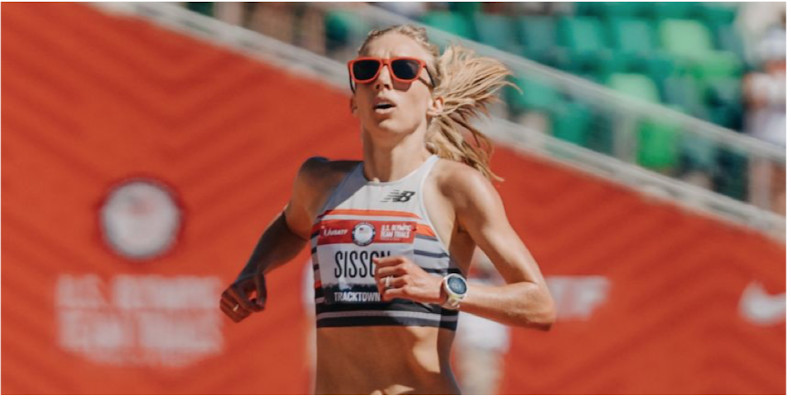
None of this shook pro runner Emily Sisson at her third U.S. Olympic Track & Field Trials. On Saturday, the 29-year-old went to the front of the pack five laps into the women’s 10,000 meters—and never let up. Not only did she claim victory and secure her first spot on an Olympic team, her time of 31:03.82 was a new Trials record.
In her post-race comments, Sisson offered a master class in mental preparation for difficult efforts. Here are seven lessons you can take on how to steel your mind for hard work ahead, even if you don’t have an Olympic berth on the line.
1. Grieve your defeats—then let them go.
In 2019 and early 2020, Sisson was “all in” on making the Olympic team in the marathon, she said. So after dropping out of the Olympic Marathon Trials in Atlanta at mile 22, she felt heartbroken and confused.
Though she typically excels at moving on from bad races, Sisson struggled a bit more than usual. She allowed herself some extra time to feel disappointed—then, with emotional support from her husband, Shane Quinn, and physical assistance from her chiropractor, John Ball, she began pulling herself forward toward the next big goal, the 10,000 meters.
“No matter what my previous performance was—whether I had a really good run or a really poor one—I always kind of look forward and work hard for whatever the next thing is,” she said.
2. Break the race down into parts.
Rounding the oval for 25 laps in the 10,000 meters can be mind-numbing even in optimal conditions. In the 85-degree heat of Eugene, Oregon, on Saturday, it had the potential to feel downright brutal.
To stay mentally engaged rather than overwhelmed, Sisson and her coach Ray Treacy devised a race plan involving several segments. She focused on hitting the halfway point in 15:50—keeping it steady at 76 to 77 seconds per lap—then picking up the pace slightly until five laps to go. Then, it was all about pushing harder until she crossed the line.
In fact, she was so focused on this strategy that she was somewhat surprised when she saw her speedy finishing time. “I was just focused on the section of the race I was in,” she said, “and wasn’t thinking overall of a certain time.”
This “chunking” concept can work in a marathon, too, says Justin Ross, Psy.D., a clinical psychologist in Denver who specializes in athlete mental health and performance. For instance, think of the first 10 miles as the warm-up, the middle 10 as cruising, and the last 6.2 as the race to the finish.
3. Draw on your past successes—and others’.
Forget Netflix or HBO Max—during her buildup, Sisson would frequently watch race videos. These include her own past performances, such as her personal best 30:49.57 in the 10,000 meters at the 2019 Stanford Invitational.
“Sometimes it’s just seeing something you've done before and reminding yourself, ‘Oh, yeah, my legs know how to do this,’” she said. “It sounds kind of cocky, but it’s for me, it’s helpful.”
Also in her queue: races won by two-time Olympian and American record holder Molly Huddle, who scratched from the Trials on June 14. Watching championship races where Huddle has taken the lead from the front, and then won, inspired Sisson and brought feelings of connection to her longtime training partner.
“I like looking at them; I am a very visual person,” she said. “I’ve watched and re-watched videos of her running, and running away from the field. Having her as a mentor has been huge for me.”
You might not have any of your own race videos at the ready, but “we all have the ability to draw upon our past successes, both in and out of sport,” Ross said.
He recommends using your training log as your own personal power journal. “With each day’s training, write down areas when you executed mental toughness and how you were able to get through difficult runs,” he said. Reviewing these notes prerace will ward off the doubt and anxiety that can often creep in last-minute.
4. Reshape your narrative.
Recalling those victories of the past can shift you away from negative thought patterns. You can also recruit someone who knows you well as a runner—for instance, a coach or a training partner—to reinforce the message.
During the final phase of her preparations, Sisson traveled from Arizona back to Providence, Rhode Island, to see Treacy in person. These sessions improved her confidence as well as her fitness. “He knows how I think, and he knows to challenge the stories I have about myself in my head,” she said.
“I was telling him something along the lines of, ‘Oh, I can't outkick certain people.’ And he’s like, ‘That’s not true,’” she said. “He brought up a race that I did in college where I outkicked someone and ran a 65-second last lap.”
Because she trusts him and knows “he’s a realist,” his assessment wards off her moments of self-doubt. “If he says, ‘You’re capable of doing this,’ I know that’s what I’m capable of doing,” she said.
5. Add to your toolbox.
In addition to reinforcing her past strengths, Treacy also assigned her workouts to build the exact skills she’d need to hone her finishing speed. “We actually practiced running a lot of faster 400s,” she said.
In addition, she ran three 5Ks in her buildup, in which she consciously focused on picking up her speed in the last two kilometers. “Even when I was tired, I knew with 2K to go: all right, time to go,” she said. “I think that was great practice.”
6. Remember: It’s tough for everybody.
Living in Phoenix likely gave Sisson an advantage in the heat, even though she did her recent training this year in cooler Flagstaff and Providence. Still, she channeled the memory of tough workouts in scorching temps—and implemented the adjustments to her routine they required, such as trading hot coffee for caffeinated gum or a shot of espresso prerace.
At tough spots during the competition, she honed in on those advantages rather than dwell on the bad conditions. “Even when it felt really hot, I kept telling myself: ‘I know, you’re feeling the heat. But so is everyone else,’” she said.
7. View obstacles as opportunities
When 41 women toe the line on a scorching day, not everyone will be able to keep up with the lead pack. In fact, Sisson lapped many talented runners—all but six others in the field—en route to her victory.
Though she—along with second-place finisher Karissa Schweizer and Alicia Monson, who finished third—had to weave a bit as the race wore on, Sisson didn’t view these competitors as a hindrance to her progress.
In fact, she was grateful the race was condensed to one section instead of two, as proposed by USATF in late May. That way, even as a front-runner, she had competitors to key off of. “It kind of gives me something to eye in front of me and reel in,” she said. “They helped me.”
by Runner’s World
Login to leave a comment
Former University of Wisconsin athlete Alicia Monson qualifies for Olympics in the 10,000 m
Taking the lead in the fifth lap and never letting up, Emily Sisson won the 10,000 in 31:03.82 on June 26 at the U.S. Olympic Track & Field Trials. Despite a start temperature of 85 degrees, Sisson broke the 17-year-old Trials record of 31:09.65, set by Deena Kastor in 2004.
Karissa Schweizer moved from third to second in the final lap, finishing in 31:16.52, and Alicia Monson claimed the third team spot in 31:18.55.
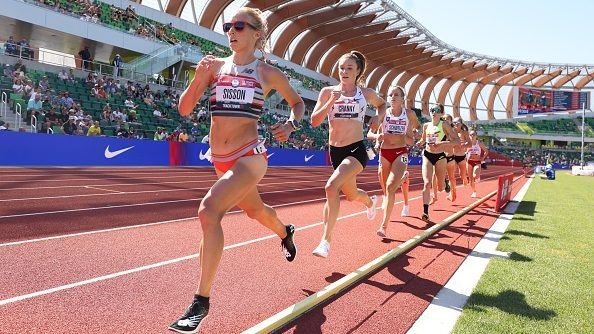
Monson, 23, who runs for On Athletics Club in Boulder, Colorado, also made her first Olympic team. She was wobbly in the final few laps, and after the medal ceremony, she collapsed and started vomiting and had to go to the hospital as a precaution, according to her coach, Dathan Ritzenhein.
“She’s the toughest person, the quietest, toughest person you could imagine,” he said. “I think she’s one of the next greats. She showed it today.”
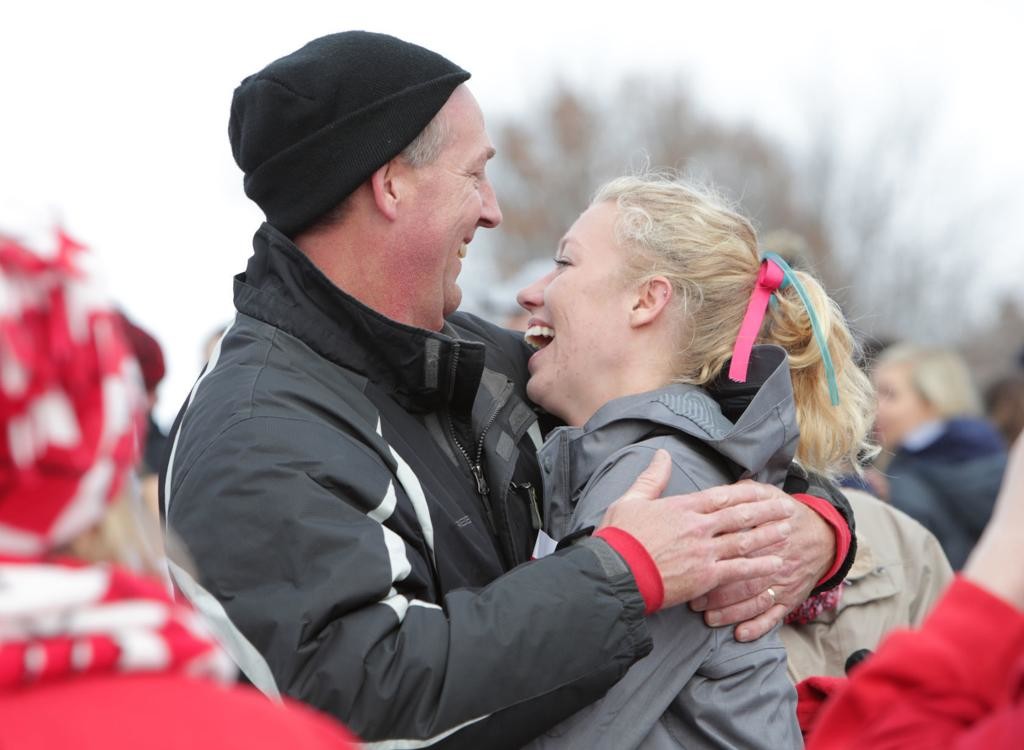
Schweizer also qualified for the 5,000-meter squad on Monday, and she said she was exhausted in the day’s heat. It is unclear whether Schweizer plans to run both events in the the Olympics. If she gives up her 5,000-meter spot, Abbey Cooper will be named to that team. If she gives up her 10,000-meter spot, Niwot native Elise Cranny, fourth in 31:35.22, and Rachel Schneider, fifth in 31:42.92, are eligible to run the 10K in Tokyo.
Cranny and Schneider, however, are also already on the 5,000-meter team. So if Schweizer, Cranny, and Schneider all decide to skip the 10K, then Sara Hall, sixth in 31:54.50, will run the 10K in Tokyo.
by Colorado Runner
Login to leave a comment
Tokyo 2020 Olympic Games
Fifty-six years after having organized the Olympic Games, the Japanese capital will be hosting a Summer edition for the second time, originally scheduled from July 24 to August 9, 2020, the games were postponed due to coronavirus outbreak, the postponed Tokyo Olympics will be held from July 23 to August 8 in 2021, according to the International Olympic Committee decision. ...
more...Emily Sisson Secures First US Title & Olympic Berth with a 10K Masterpiece
EUGENE, Ore. — The spirit of Molly Huddle lives on. Last week, Huddle announced her withdrawal from the 2020 US Olympic Trials, her 36-year-old body no longer able to generate the speed or smoothness that had carried her to five straight US 10,000-meter titles and an American record. But on a sunny Saturday morning at Hayward Field (82 degrees in Eugene at start), Emily Sisson delivered a run her erstwhile training partner would have been proud of, methodically squeezing the life out of the women’s 10,000-meter field to win in a meet-record of 31:03.82 despite 86-degree temperatures.
Actually, we know Huddle was proud of the effort
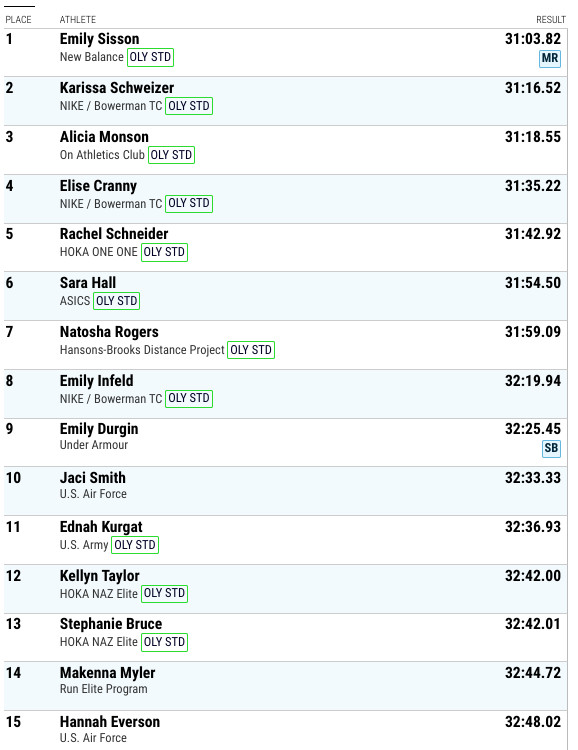
A Huddle comparison is selling Sisson short, however. This was dominance at a level we are unaccustomed to seeing at an Olympic Trials, particularly in an event in which 13 women in the field entered with the 31:30 Olympic standard. Only seven Americans (including Sisson) have ever run faster than her 31:03.82 today, achieved in the morning sun and without the aid of pacemakers. Her 12.70-second margin of victory left her almost a full straightaway clear of runner-up Karissa Schweizer.
Sisson had sealed the victory by building a 30-meter lead with three laps to go and would only pick it up from there, going 71.47-71.25-69.26 to close out a 15:14.67 final 5k and 4:44.45 final 1600. Schweizer took second in 31:16.52 to make the Olympic team at a second distance (she also made it in the 5k on Monday), while Alicia Monson gave On Athletics Club another Olympian by taking third in 31:18.55.
The top five women in this race will all be running in Tokyo — the top three in the 10k and fourth- and fifth-placers Elise Cranny and Rachel Schneider in the 5k.
Sisson lapped everyone in the field save for the top seven. The last person she lapped — in the final 100 meters — was none other than 2016 Olympian and 2015 world championship bronze medallist Emily Infeld, who stuck with the lead pack for 6k.
The Race
https://www.youtube.com/watch?v=OsYzi04MOQ4&feature=emb_title
The race had been shifted to a 10 a.m. start to avoid the hot weather (forecast to reach 100 degrees when this race would have originally been run at 6:44 p.m.), though the conditions were still hot and sunny when the gun was fired. Sisson took the lead just before two kilometers, dropping the pace from 78’s and 78’s to consistent 75’s, whittling the pack to 10 by 5k (15:49.15). Sisson would continue tightening the noose all the way home. She dropped the pace to 74’s just after halfway, which was enough to drop former New Mexico teammates and new US citizens Weini Kelati and Ednah Kurgat, as well as 2016 Olympian Infeld by four miles.
By 6800, Schneider, Hall, and 2012 Trials runner-up Natosha Rogers had been dropped as well, leaving a four-woman battle for three spots between Sisson, Cranny, Schweizer and Monson. After running consistent 74’s, Sisson let a 75 slip in for her 18th lap. From there, however, Sisson’s pacing was masterful: each of her final seven laps was faster than the one that preceded it. A 72.58 fifth-to-last lap gave her a 10-meter gap with a mile to go, and with 41 starters, it became hard to keep up with who was where as Sisson had been lapping multiple runners per lap. She would press on to win in dominant fashion, while Schweizer, who trailed Monson by 3.5 seconds at the bell, would use a big last lap (68.81, fastest in the field) to take second, with Monson safe in third, over 16 seconds up on Schweizer.
For the record, Schweizer said she plans on running both the 5k and 10k in Tokyo.
Quick Take: Total masterclass
Sisson has had some great performances in her career (she’s made two Worlds teams at 10k, won two USA road titles, and won two NCAA titles), but she had never had one like this.
Not only did she make her first Olympic team and win her first USATF track title, she put on a wonderful performance. She took the lead after the mile and never gave it up. She started clipping off 75-second laps (5:00/mile) through halfway. That whittled the lead pack down to 10. Then she upped the ante again, lowering the pace to roughly 74s through 8k. That made it a four-woman race for the three Olympic spots. Then she started running 72s or better and it was game over.
Quick Take: Redemption for Sisson, who used the extra year to her advantage
When we spoke to Sisson a month ago, she admitted that had the Trials been held as scheduled in 2020, she likely would not have been in contention to make the team. Her body felt broken after dropping out of the Olympic Marathon Trials on a brutal Atlanta course, and after a stellar 2:23 debut in London in 2019, she struggled to make sense of the result.
“Usually I’m good at moving on from bad races, but I struggled with that one,” Sisson.
It didn’t help that, after COVID postponed the Trials, there was nothing to move on to.
But eventually, Sisson was able to get back on track (she praised her husband, her former Providence College teammate Shane Quinn, for his support) and work back to incredible fitness. In December, she ran 67:26 to miss Huddle’s American record in the half marathon by one second, and she looked strong in her three track 5k’s this spring, running 14:55, 14:53, and 14:59. She had never broken 15 minutes prior to this year. Her plan today was to play to her strength and make it a fast race, as she knew she was in the best shape of her life.
“There were some workouts where I had to ask [my coach Ray Treacy] to repeat my splits, like what did I just run?” Sisson said.
QT: Alicia Monson pushed her body to the brink (and to the hospital) to make her first Olympic team
The newly-formed On Athletics Club (editor’s note: On Sponsored the Road to the Trials on LetsRun.com) got its second 10k Olympian at the Trials as Alicia Monson finished 3rd to make the team, joining teammate Joe Klecker who was 3rd in the men’s 10k on the first night of the Trials.
Coach Dathan Ritzenhein had been very bullish on Monson heading into the Trials, but how would she perform on the biggest stage and in the heat? Superbly well. While Monson was overtaken by Karissa Schweizer on the final lap, she was the last athlete to get broken by Sisson.
However, the effort really took its toll.
After the race, Monson did not look well. She eventually was resting in the shade in the bowels of the stadium, and was brought back out for an interview by NBC’s Lewis Johnson, where Schweizer helped support her. Monson said in the interview, “I have never gone to that point in a race before and I’ve always kind of wanted to. I think today was a good time to do that.”
Monson was able to go to the victory stand and do the award ceremony for the top 3, but the heat was still taking its toll.
Later as first reported by Sarah Lorge Butler, it was revealed that Monson collapsed after the medal ceremony and started vomiting and was taken to the hospital.
Ritzenhein told LetsRun he believes Monson will be okay, adding “she is just the toughest person I’ve ever met.” For anyone who remembers Ritzenhein’s all-out racing style, that is high praise indeed. Ritz even said she’d be available for an interview after she left the hospital. That definitely is a LetsRun.com first.
Quick Take: Sisson & Monson’s all-in bets pay off
When USATF switched the schedule to put the women’s 10k after the women’s 5k, athletes who qualified in both had a choice to make. If you thought your best shot to make the team was in the 10k, would you double — and perhaps wear yourself out with a heat and final in the 5k — or give yourself only one shot to make the team and focus on the 10k?
Both Sisson and Monson (and their coaches) felt their best shot was in the 10k and both decided to skip the 5k entirely. That paid off when both made the team today.
But both Schweizer and Cranny decided to attempt the double, and that decision worked out nicely for them as well, as Schweizer made the team in both events and Cranny was the US champ in the 5k. All four women are first-time Olympians.
Quick Take: Sara Hall’s Olympic dream is denied yet again, but she achieved her career-best Olympic Trials finish in 6th
Some great US runners over the years have failed to make an Olympic team. Chris Solinsky, the #2 US man ever at 5,000 and 10,000, never made an Olympic team, and Sara Hall, the 2nd-fastest US women’s marathoner ever at 2:20:32, may also end up with that label. Hall, 38, finished 6th in today’s race in 31:54.50, which was a career-best finish for her at the Olympic Trials.
Sara Hall at the Olympic Trials
2004 – 11th in 5000
2008 – 9th in 1500
2012 – 8th in steeple
2016 – DNF in marathon, 14th in 5000
2020 – DNF in marathon, 6th in 10,000
“I made all the right moves I needed to, I just didn’t have it. You know, those girls are really strong,” said Hall after the race. “Sisson, I’m really happy for her… I’m so happy she made the team, she’s so deserving… I respect all those women so much… I thought I had a shot at this team but at the same time that’s my highest Olympic Trials finish… I’m thankful I was able to do that today.”
Hall said she was rooting for her fellow marathoner Sisson — the US’s 8th fastest marathoner in history at 2:23:08 — to make the team.
“Emily’s run was so impressive, I didn’t doubt that she could do this… living in Phoenix, I’m pretty sure we’re all gonna wish we were living in Phoenix like she is… I was rooting for her so much because of the disappointment in Atlanta that was similar to mine,” said Hall, who said she’ll be announcing a fall marathon soon.
Saying Hall won’t make the team in 2024 may not be wise. The date for the 2024 marathon trials isn’t set yet, but they might be less than 2.5 years away and Hall is running better than ever. Bernard Lagat made an Olympic team at 41 in 2016. Hall will be 40 when the 2024 Olympic Marathon Trials take place. Of course, the difference is Lagat had been on many teams before.
Regardless of whether she makes a team, Hall’s late-career transformation has been incredible. At the 2016 Trials, Hall had pbs of 32:44 for 10k and 2:30:06 for the marathon. Now her pbs are 31:21 and 2:20:32.
Quick Take: Sisson handled the heat like a pro
At the last Trials, Sisson said she was “pretty out of shape and I actually overheated.” She handled the heat with ease today. That may be because she lives in Phoenix, Arizona (although she hasn’t been there since March, spending her buildup in Flagstaff and then Providence).
She wore sunglasses during the race but they weren’t hers. She often runs with glasses in Phoenix but didn’t have any today, so she just borrowed her husband’s pair before the race.
Quick Take: Emily Durgin has a strong run in 9th
The top 8 spots were all filled by people with the Olympic standard of 31:25. The first person without the standard was 9th placer Emily Durgin of Under Armour. No one in today’s race ran a PB, but Durgin came the closest. When her collegiate career at UConn came to an end in 2017, she had pbs of 16:00.93/33:49. Now she’s improved them to 15:24/32:22 and she ran 32:25 for 9th.
by Let’s Run
Login to leave a comment
Runners sponsored by smaller companies might be in a better position than those who are signed by major brands
Earlier this week, the Swiss running shoe company On announced that it was starting an elite training group in Boulder, Colorado, called the On Athletics Club. It’s safe to say that this doesn’t seem like the most auspicious time to invest in professional running. Even though the Diamond League—the world’s premier track and field competition circuit—is scheduled to begin an abridged summer season on Friday, this year has seen an unprecedented number of race cancellations and it’s difficult to predict when the bleeding will stop.
International Olympic Committee President Thomas Bach has already gone on record saying that the Tokyo Games, which have been postponed to summer 2021, will not be delayed a second time. If they can’t be staged next August, the Olympics will be canceled outright, thus depriving track athletes of their quadrennial moment in the sun.
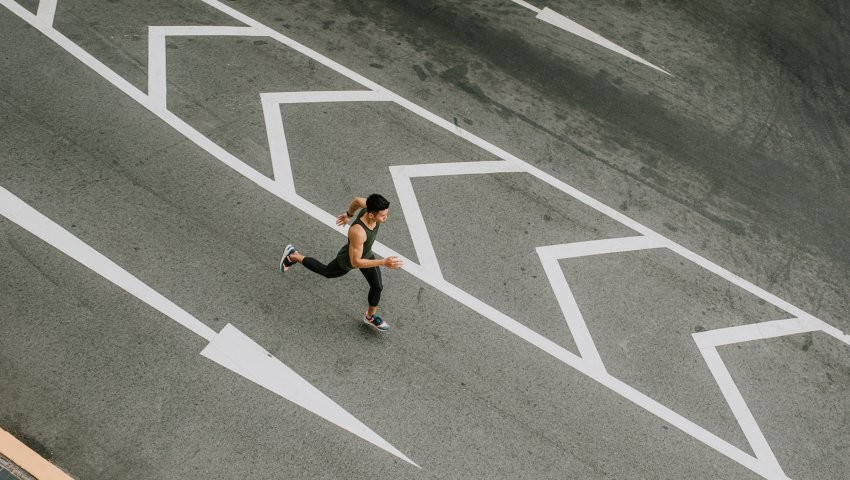
According to Steve DeKoker, On’s Global Sports Marketing Manager, the company has long been looking to develop an elite running team and the Boulder-based group represents the most significant move in that direction to date. For now, the On Athletics Club consists of eight runners, all of whom are in their 20s and were standout NCAA athletes (the University of Colorado’s Joe Klecker and the University of Wisconsin’s Alicia Monson are the headliners).
Recently retired Olympian Dathan Ritzenhein will act as coach. It has been disclosed that these athletes will be signing multi-year deals with no reduction clauses (i.e. performance quotas)—a risky move, perhaps, but one that On might currently be well-positioned to make thanks to a potential pandemic-inspired uptick in recreational running.
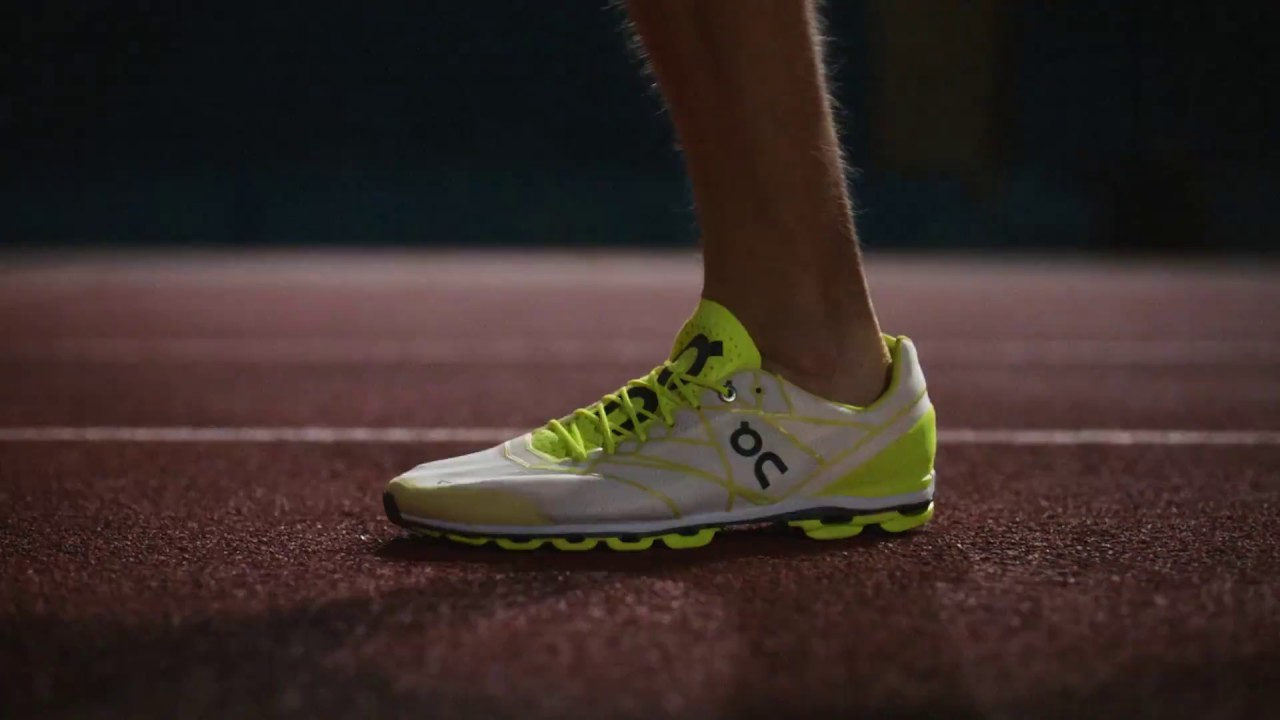
“Running is kind of experiencing this second boom,” DeKoker told Letsrun.com. “We’ve got all these folks at home who are struggling with different issues, but running is a viable activity for them. Whereas if you’re Nike, and you’re in 50 different verticals, running might be a positive one, but you’ve got a bunch of other sports that are hemorrhaging right now.”
There has been some evidence to bear this out. Nike has reported a 38 percent decline in total revenue through May 31. More specifically, last week, the market research company NPD published an article noting that prominent brands (Nike, Adidas, Under Armour) had an overall sales decline in athletic footwear in the first half of 2020, while several running-focused shoe companies had fared conspicuously well.
Hoka One One and On, in particular, saw year-over-year sales increases of 75 and over 50 percent, respectively. (An On representative has confirmed this, and added that the brand had recorded its highest ever sales month in June 2020.) Matt Taylor, the co-founder and CEO of the independent running apparel brand Tracksmith, told me that “there’s been a noticeable uptick in people running over the last few months,” and that Tracksmith was “seeing this trend reflected” in its business.
While the running industry will never be entirely insulated from the state of the overall economy, there is some logic to the notion that the sport is well-suited to weather a financial downturn. To use DeKoker’s term, running is a “viable activity” for many people because it is relatively cheap, accessible, and offers both physical and mental health benefits during times of uncertainty.
The most recent running boom occurred during the years immediately following the Great Recession; starting around 2008, there was a continual increase in running event participation, culminating in 2013, when a record 19 million runners took part in U.S. road races.
Of course, from a running perspective, one of the uniquely cruel aspects of the COVID-19 recession is that the pandemic has precluded the staging of most mass participation events. The New York Road Runners, the largest non-profit running events company in the United States, laid off eleven percent of its employees and furloughed an additional 28 percent in July. Hence, any discussion about how the pandemic might end up “benefiting” the running industry in shoe or apparel sales must be weighed against this freeze of running events.
For professional runners, meanwhile, the cancellation of big-ticket races signifies a loss in prospective appearance fees and prize money. Some athletes might also be contractually obligated to run a pre-set number of races, which, needless to say, has not been so easy in 2020. That’s why this has been the summer of intrasquad competitions, in which training partners take part in de facto time trials that have been spruced up just enough to qualify as official meets. While some of these events have yielded impressive performances—most notably Shelby Houlihan, of the Bowerman Track Club, breaking her own American record in the 5,000-meters—there have also been farcical scenarios where world-class athletes phoned it in, presumably so that they can reach their race quotas. (Last week, reigning Olympic 1,500-meter champion Matthew Centrowitz “raced” an 800... and ran 3:08. His personal best in the event is 1:44.)
It’s not a coincidence that the most prominent examples of these sham races have involved Nike athletes. After all, the Oregon-based company sponsors far more runners than any other brand. They have the funds to do it, but casting a wide net might also make it more difficult for Nike to offer elite runners the contractual perks of smaller, running-focused companies like Oiselle, On, and, recently, Tracksmith. For now, reduction clauses still seem to be the norm for the typical Nike track athlete. (A Nike spokesperson told me that the company does not comment on athlete contracts.)
Hawi Keflezighi, an agent whose clients include his brother Meb Keflezighi and recent U.S. Olympic Trials Marathon champion Aliphine Tuliamuk, agreed that this was likely to be the case. “I think Nike deserves credit for all the athletes and events that they sponsor, but at the same time, within that business model, if you have a lot of athletes, you can’t be as flexible as when you only have five or ten athletes on your roster,” Keflezighi, whose brother was a Nike athlete for years before signing with Skechers in 2011, told me. He added that, while it’s typical for companies to reassess which athletes they want to sponsor at the end of an Olympic cycle, the current uncertainty surrounding the fate of the Games, and looming recession, mean that conditions for athletes are even more cutthroat than usual.
“I think the bigger brands definitely have tougher decisions to make, just because they have a bigger investment overall,” Keflezighi says. “The athletes with those brands, especially if they are not medal contenders or in a great position to make the US Olympic team—under this environment, those athletes’ contracts are a little bit more vulnerable. If you have a smaller roster of athletes, you might be able to say, ‘Hey, you know what? Let me give that athlete an extra year or two.”
DeKoker echoed this sentiment. “Obviously, performance is going to be a key element, but it’s not the only element with On,” he says. “I do think that, at some of these other companies, it’s much more of a numbers game and unfortunately some athletes are going to be on the losing end of that.”
What will the “numbers game” look like in a worst case scenario where next year’s Olympics ultimately do get canceled? With any luck, we won’t get to find out.
by Outside Online
Login to leave a comment
The 113th NYRR Millrose Games set for February 8th will feature dozens of Olympians and world class runners
The 113th NYRR Millrose Games are scheduled for Saturday, February 8th, and the distance action will be highlighted by a pair of 3,000-meter races featuring both the men’s and women’s 2019 NCAA cross country champions competing against Olympians.
Women’s champion Weini Kelati of the University of New Mexico will take on a loaded field that includes defending Millrose champion Alicia Monson of the University of Wisconsin, while men’s winner Edwin Kurgat of Iowa State University will battle Olympic silver medalist Paul Tanui, among others.
“I’m looking forward to returning to NYC and competing in the Millrose Games,” Monson said. “I totally enjoyed the whole experience last year and winning the 3k was very special. I guess I will not be the unknown collegiate athlete in the race like last year, but that makes my second appearance at the Millrose Games exciting and something to look forward to.”
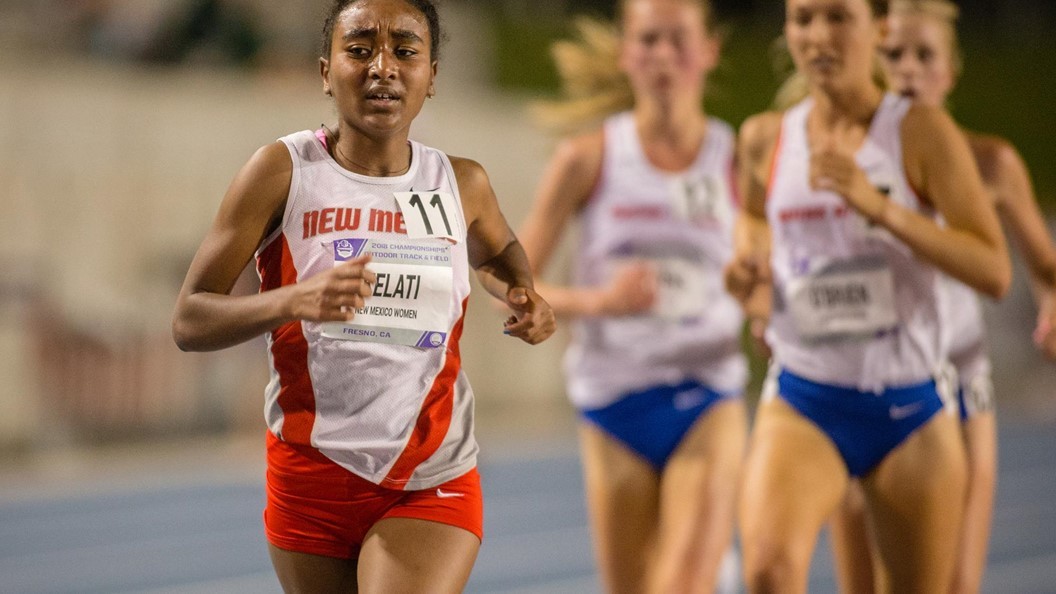
The historic NYRR Millrose Games, taking place at The Armory’s New Balance Track & Field Center, will feature dozens of Olympians and world championship contenders as they prepare for the 2020 Tokyo Olympics next summer.
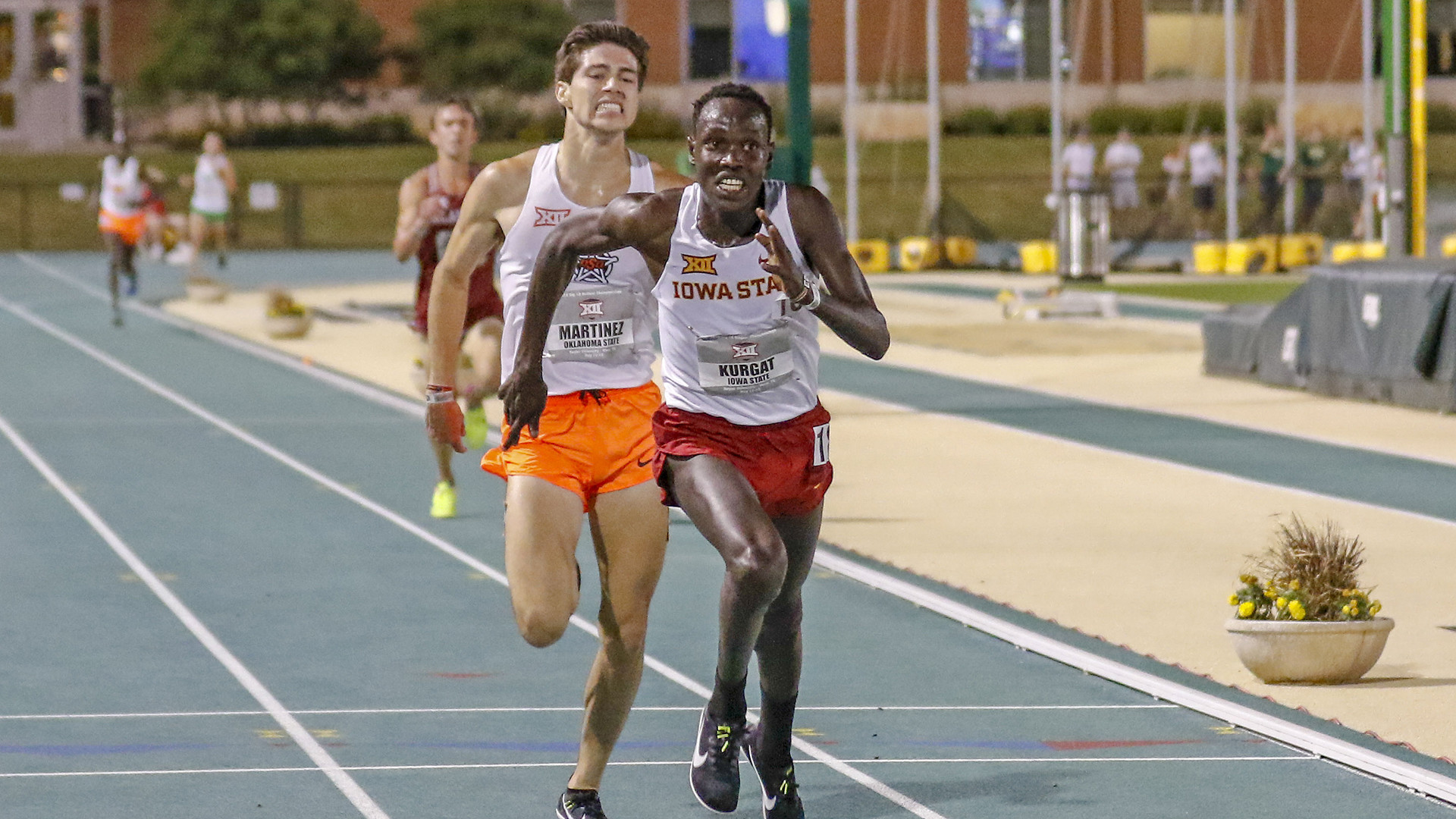
The women’s race figures to be a thrilling battle between Kelati and Monson, the two women who have distinguished themselves as the best distance runners in the NCAA.
The two runners have faced off nine times since September 2018, with Kelati holding a narrow 5-4 advantage over her rival. At the 2019 Millrose Games, it was Monson kicking to the win in a time of 8:45.97, with Kelati finishing sixth. However, in their most recent meeting at the NCAA Championships in Louisville, Ky., Kelati broke away from Monson and the field early, winning the 6,000m race in 19:47.5, and defeating the runner-up Monson by 10 seconds.
Kurgat of Iowa State comes in off the momentum of his victory at NCAAs, covering the 10,000-meter course in 30:32.7 to complete an undefeated cross country season. However, the favorite in the race figures to be Tanui, a four-time global medalist for Kenya. Tanui earned silver in the 10,000m at the Rio Olympics just behind Mo Farah, and owns three bronze medals over the same distance from the 2013, 2015, and 2017 World Championships. Tanui will look to use Millrose as a stepping stone for yet another medal in Tokyo.
Other contenders to look out for include NCAA runner-up Joe Klecker of the University of Colorado, US Olympian Hassan Mead and former NCAA champion Justyn Knight of Canada. Knight, who has made two World Championship finals in the 5,000m, finished second at Millrose in 2018.
More athletes and fields will be announced for the NYRR Millrose Games in the coming weeks. Already announced is a thrilling shot put duel between Ryan Crouser and Joe Kovacs, as well as world record-holder Keni Harrison opening her season in the 60m hurdles.
Login to leave a comment
NYRR Millrose Games
The Pinnacle of Indoor Track & Field The NYRR Millrose Games, first held in 1908, remains the premier indoor track and field competition in the United States. The 2025 edition will once again bring the world’s top professional, collegiate, and high school athletes to New York City for a day of thrilling competition. Hosted at the New Balance Track &...
more...

